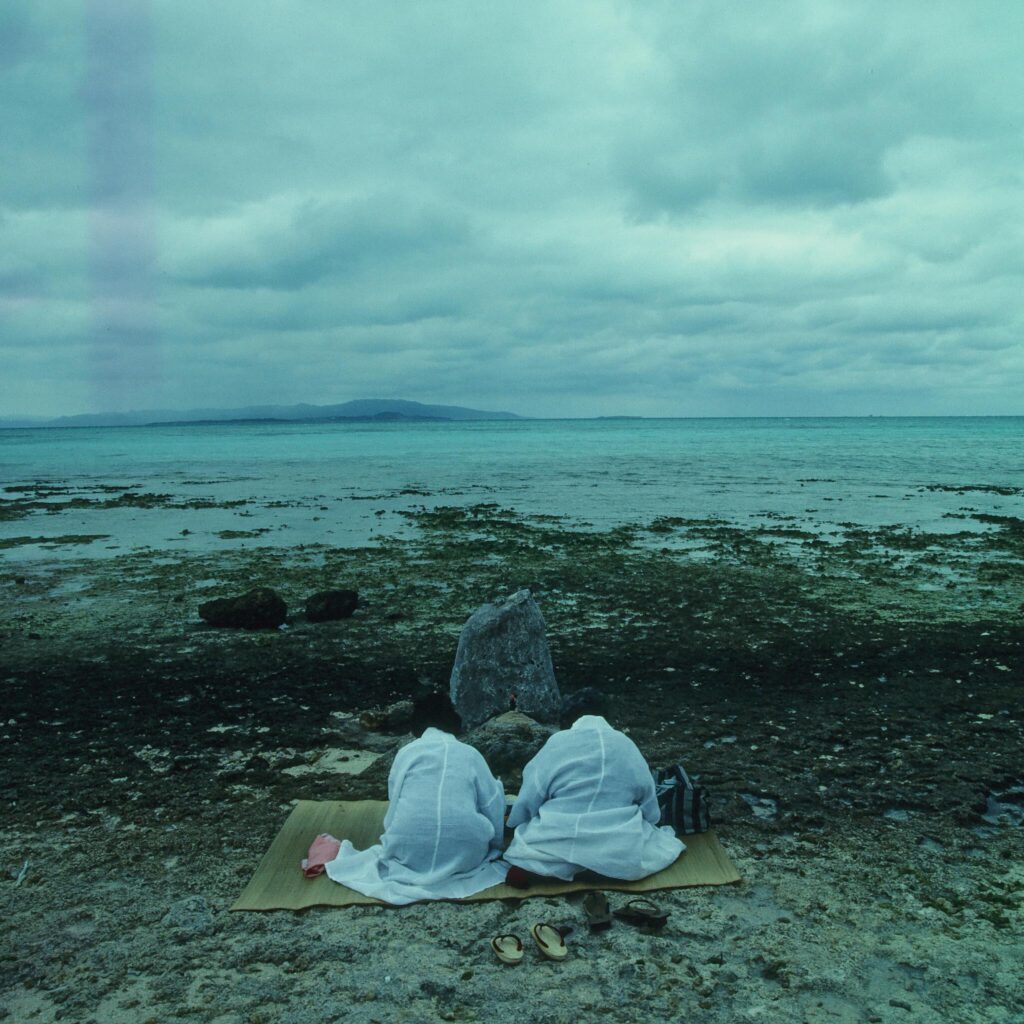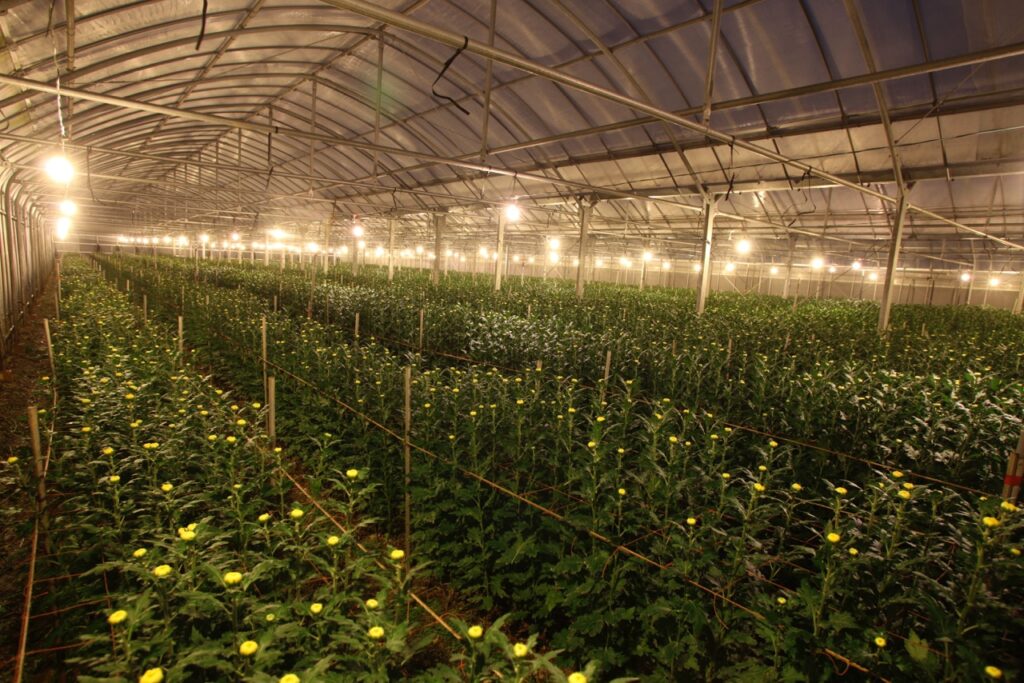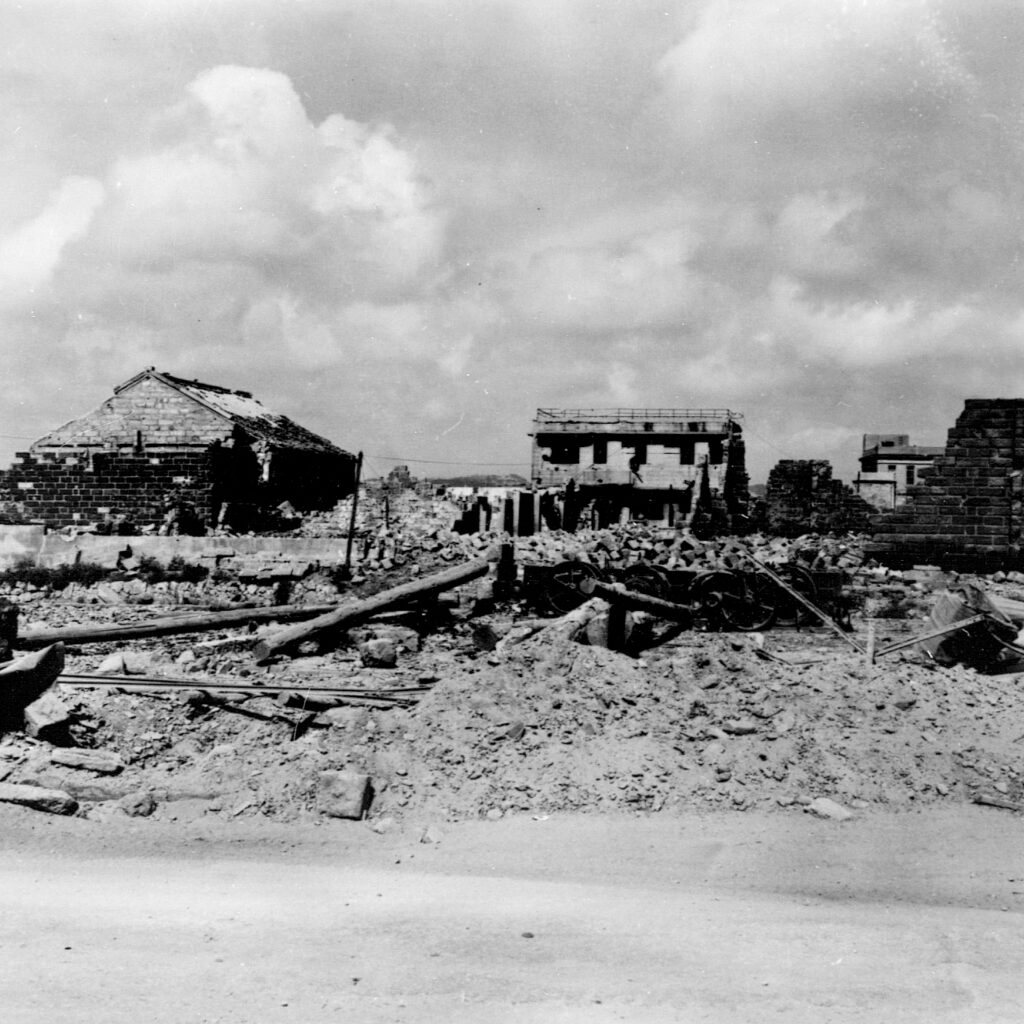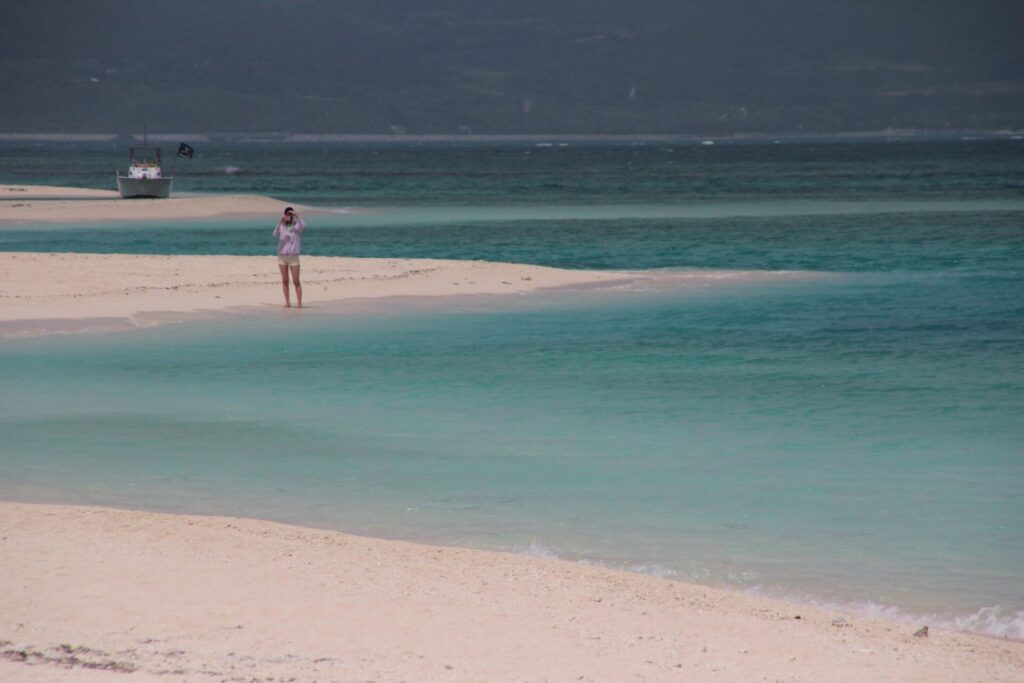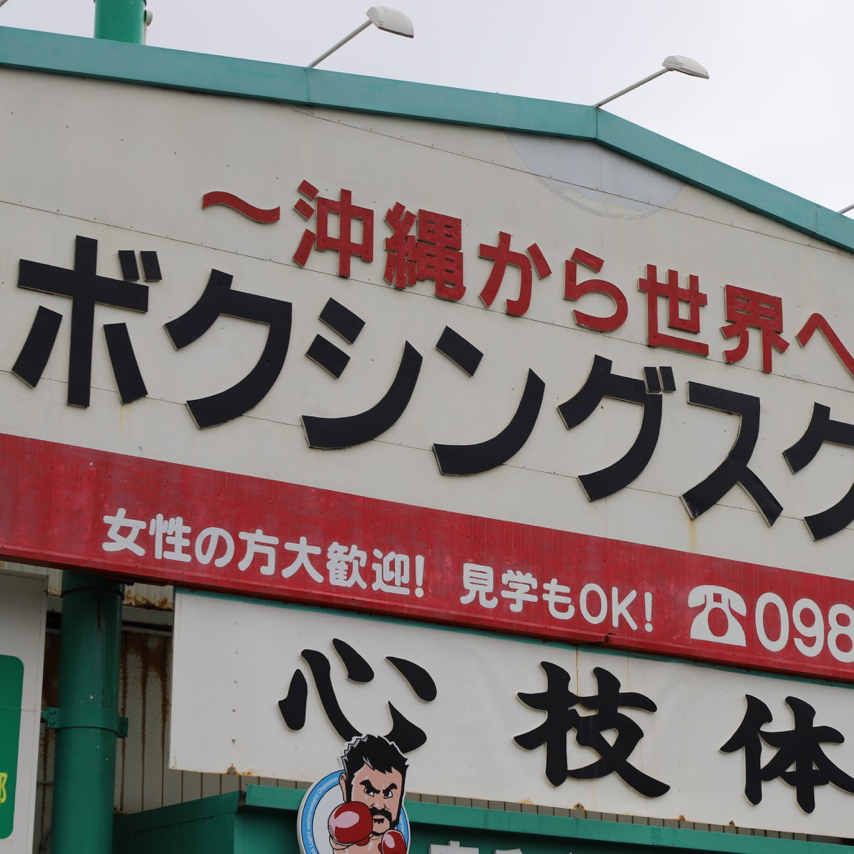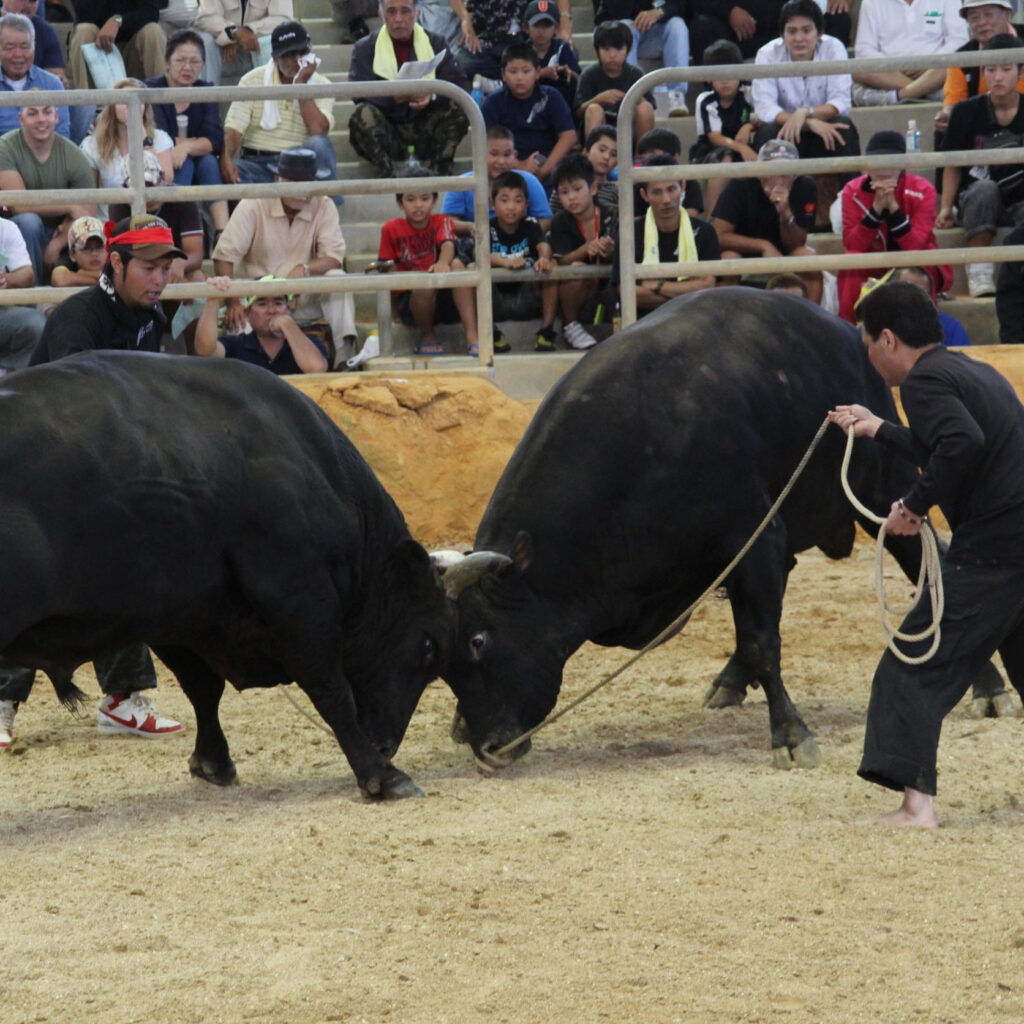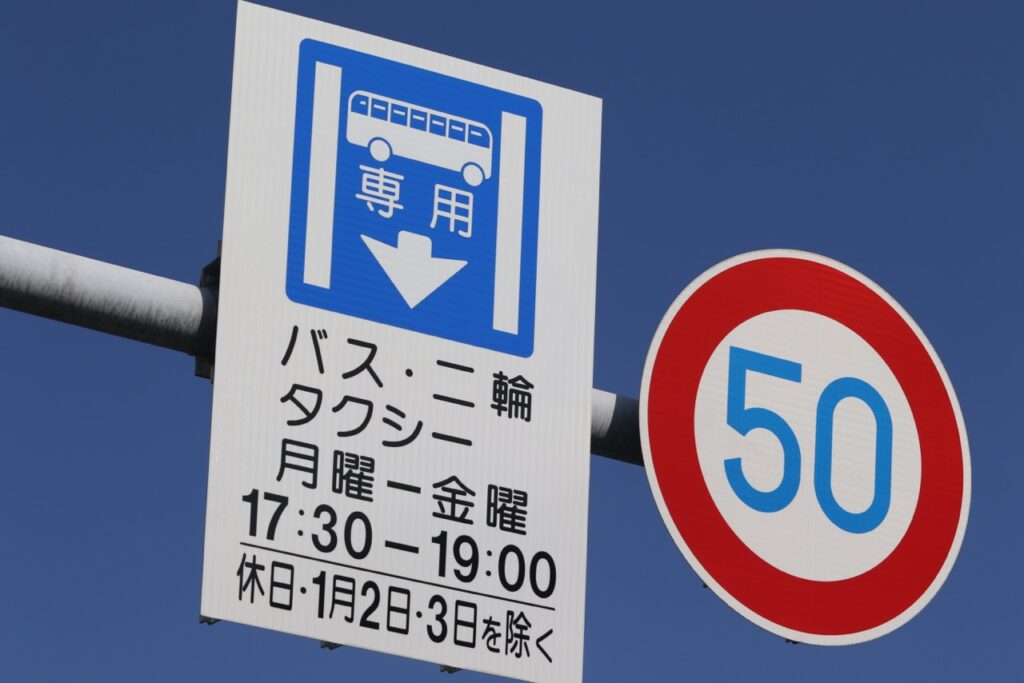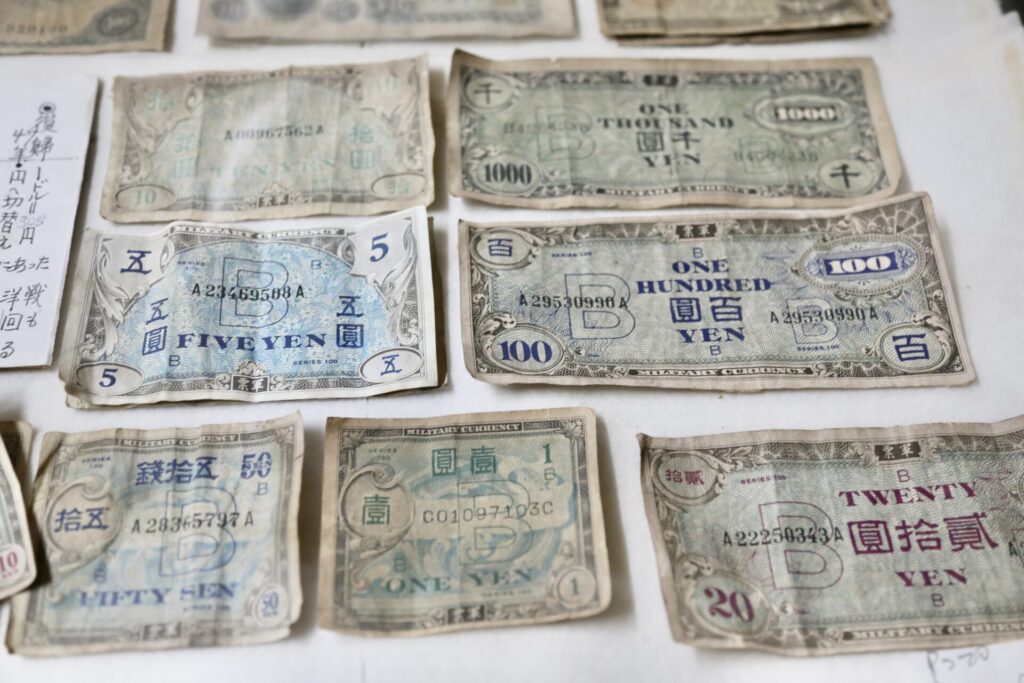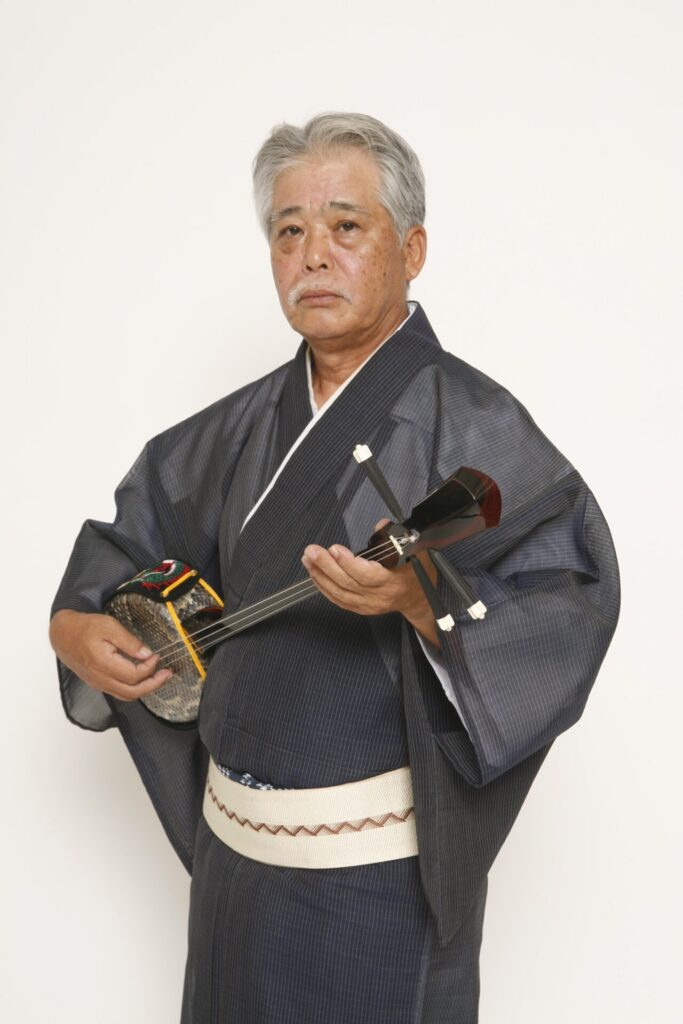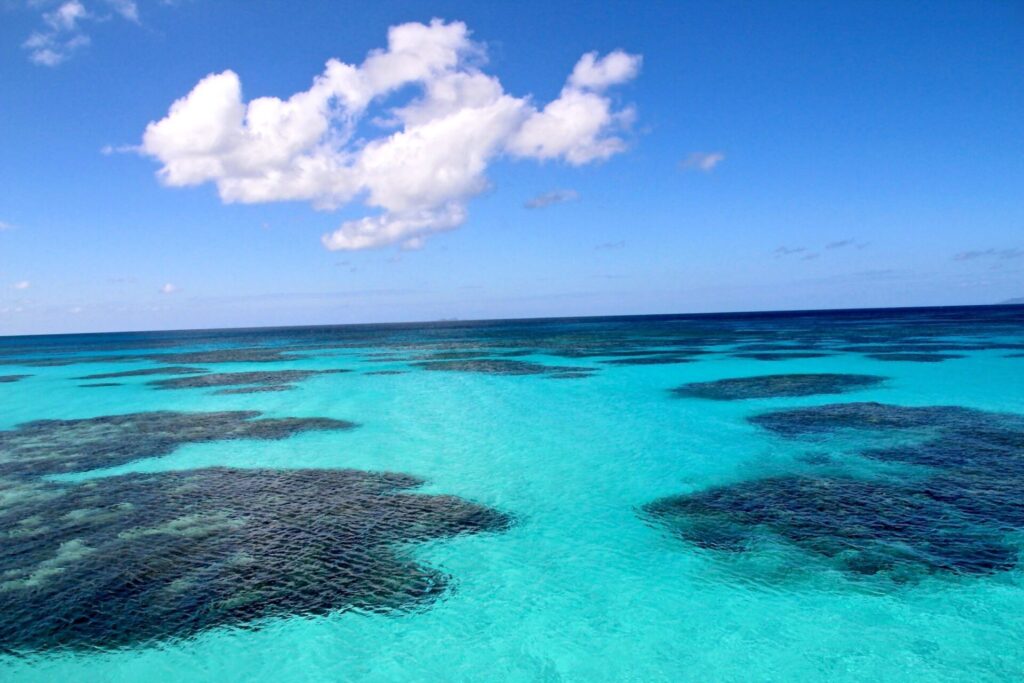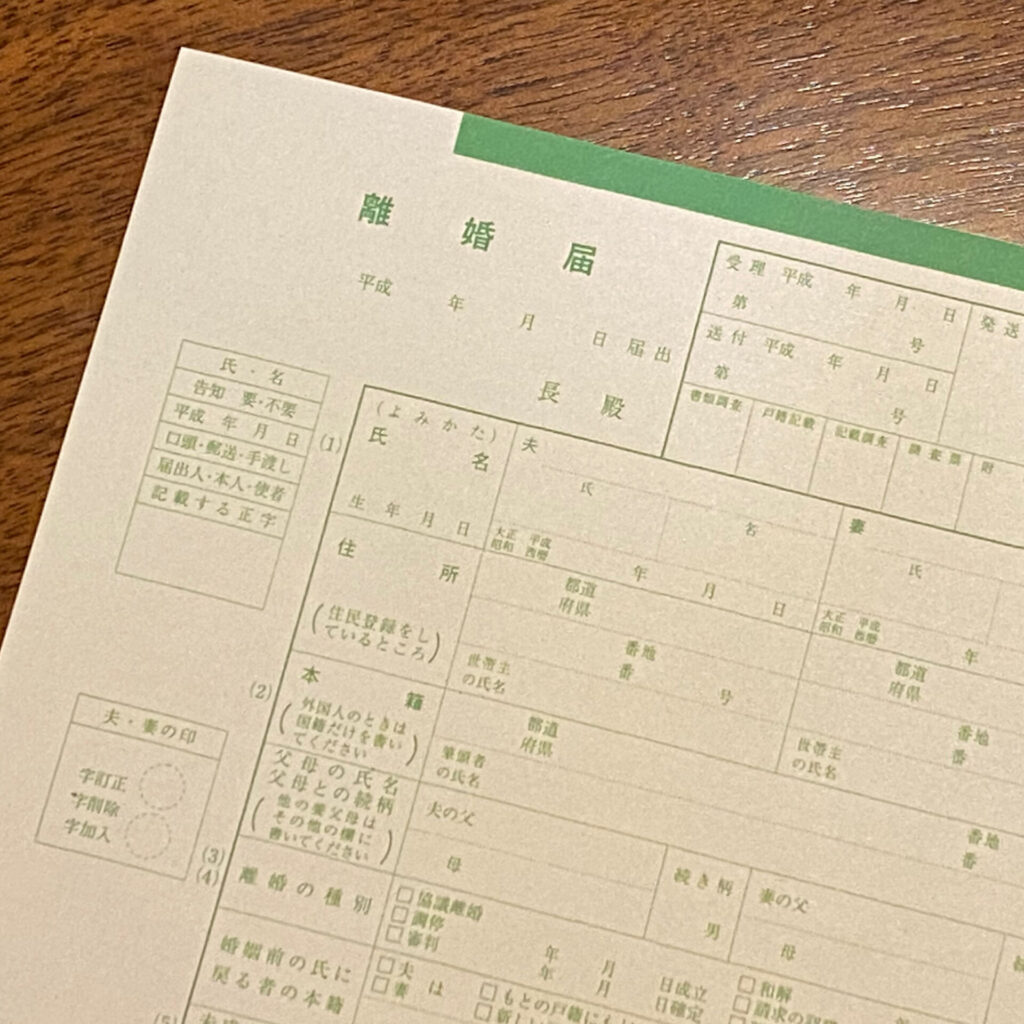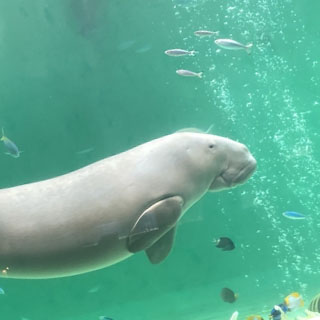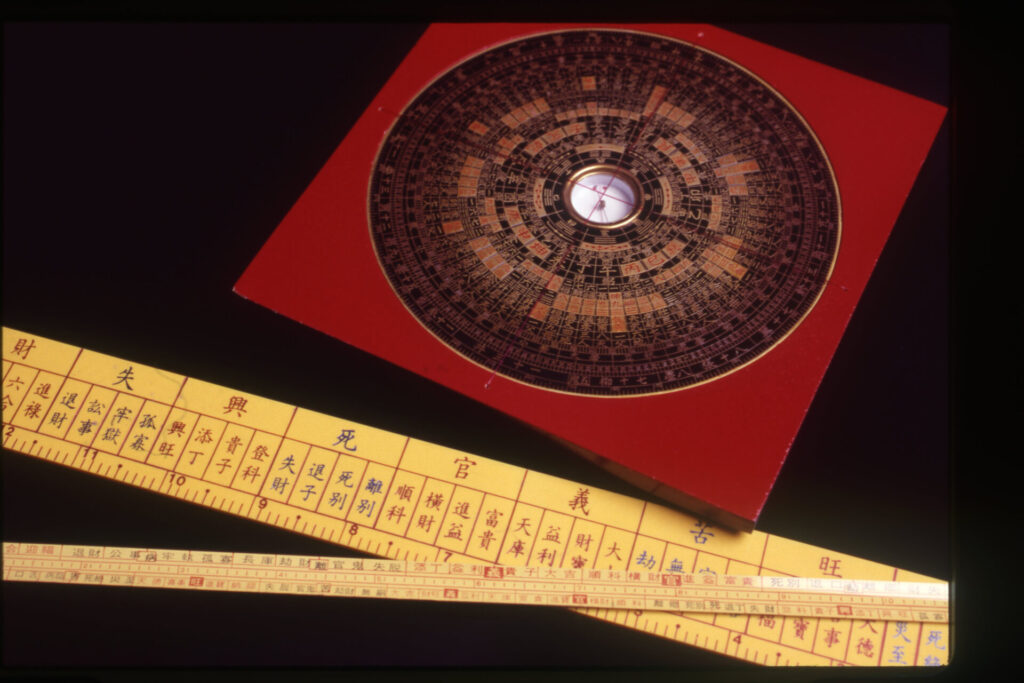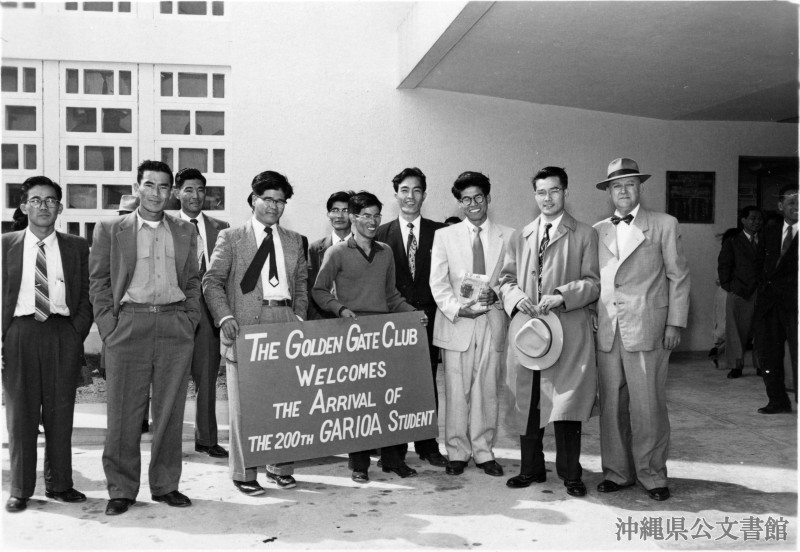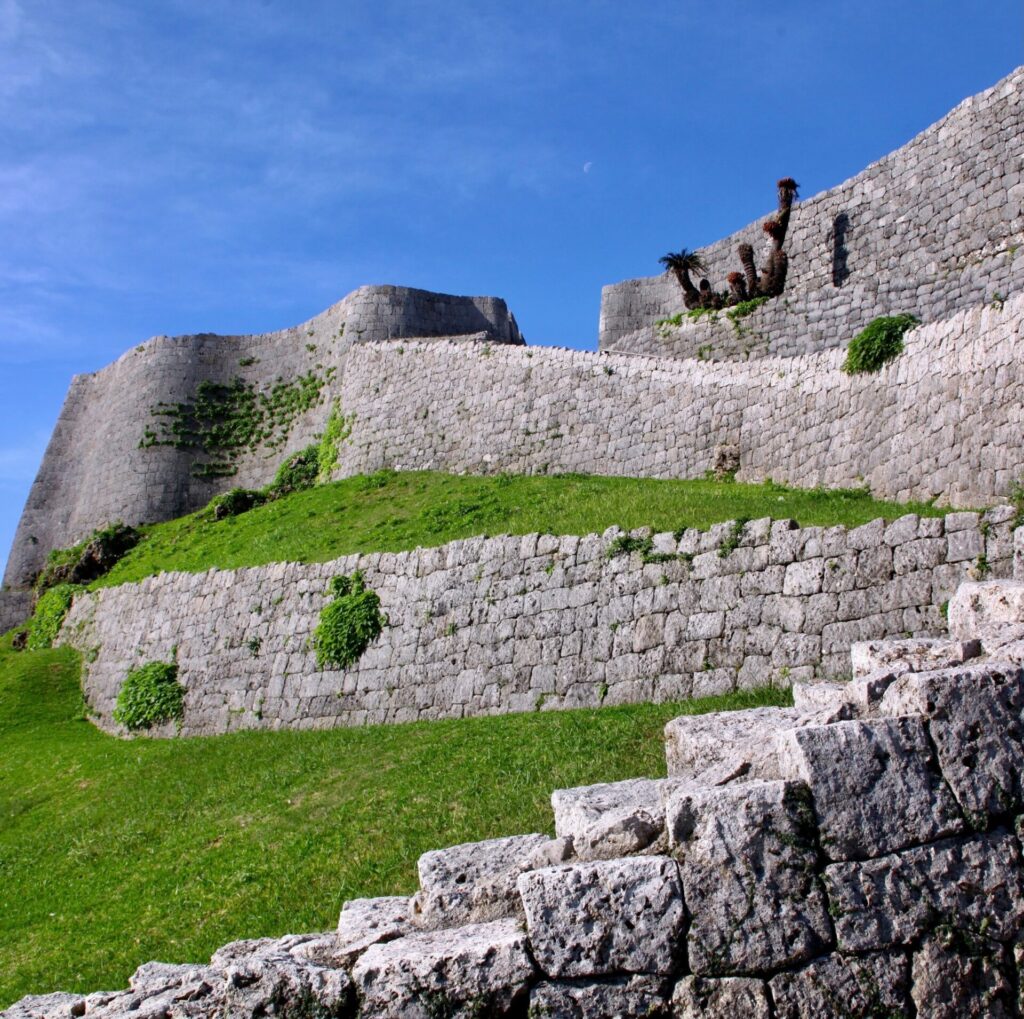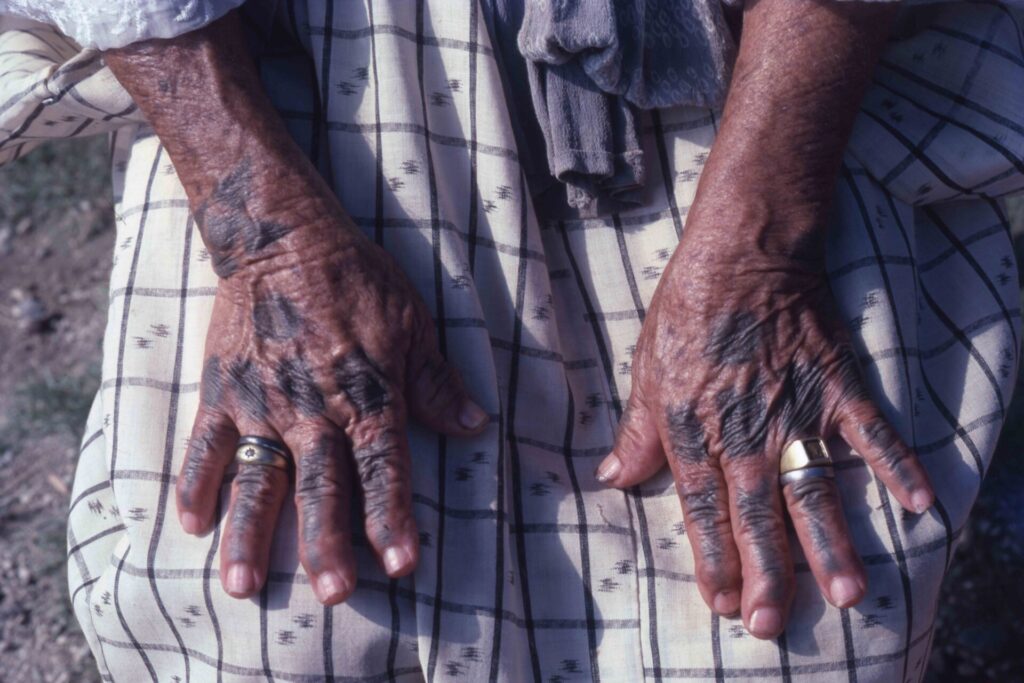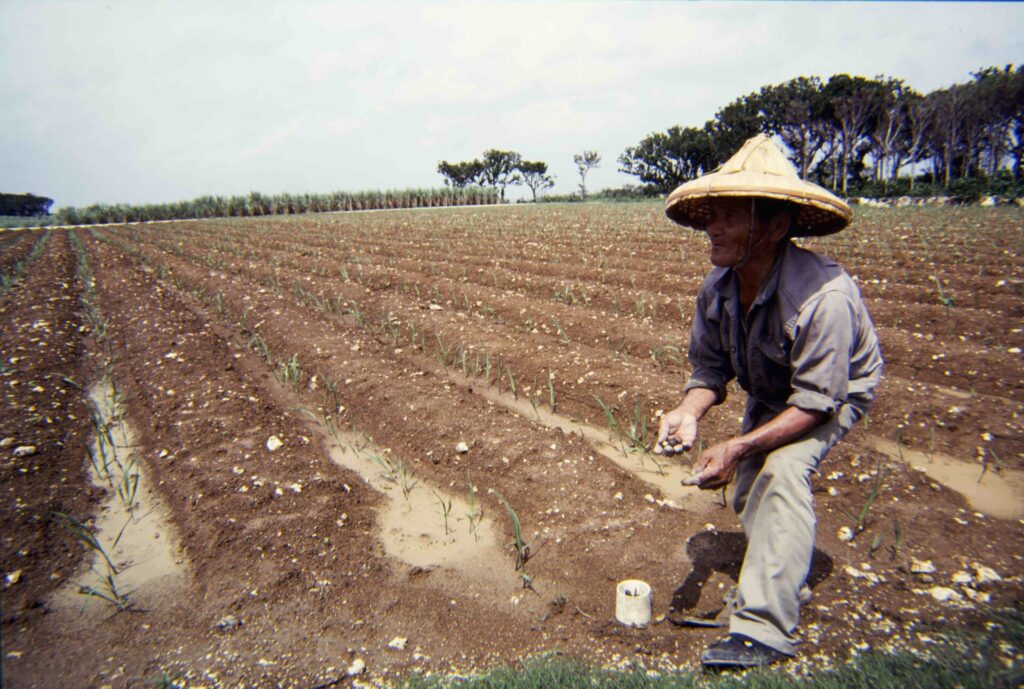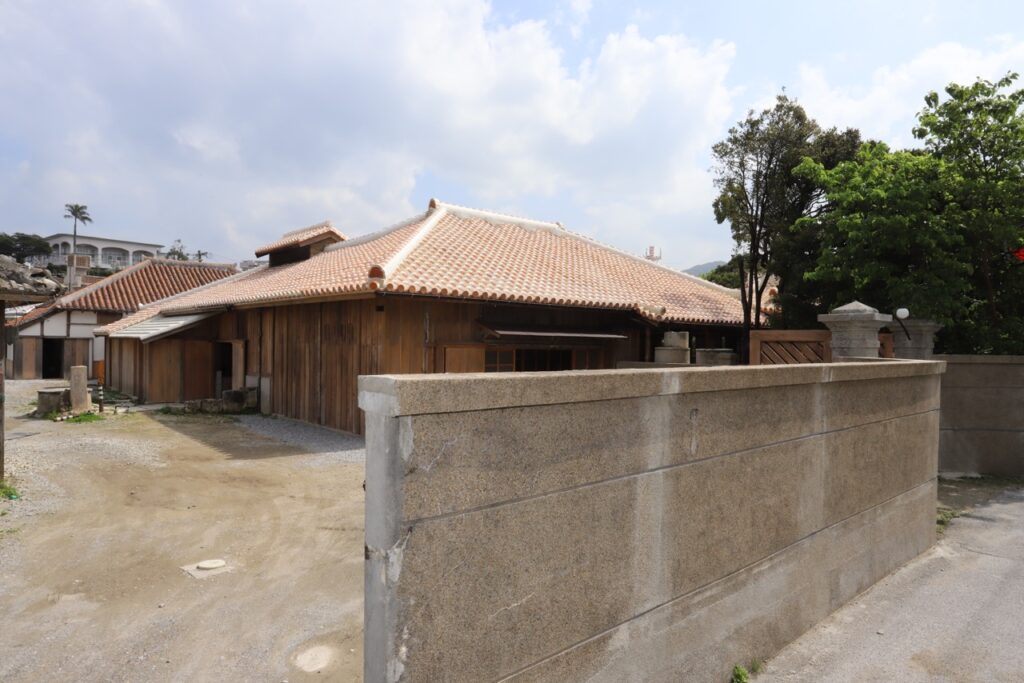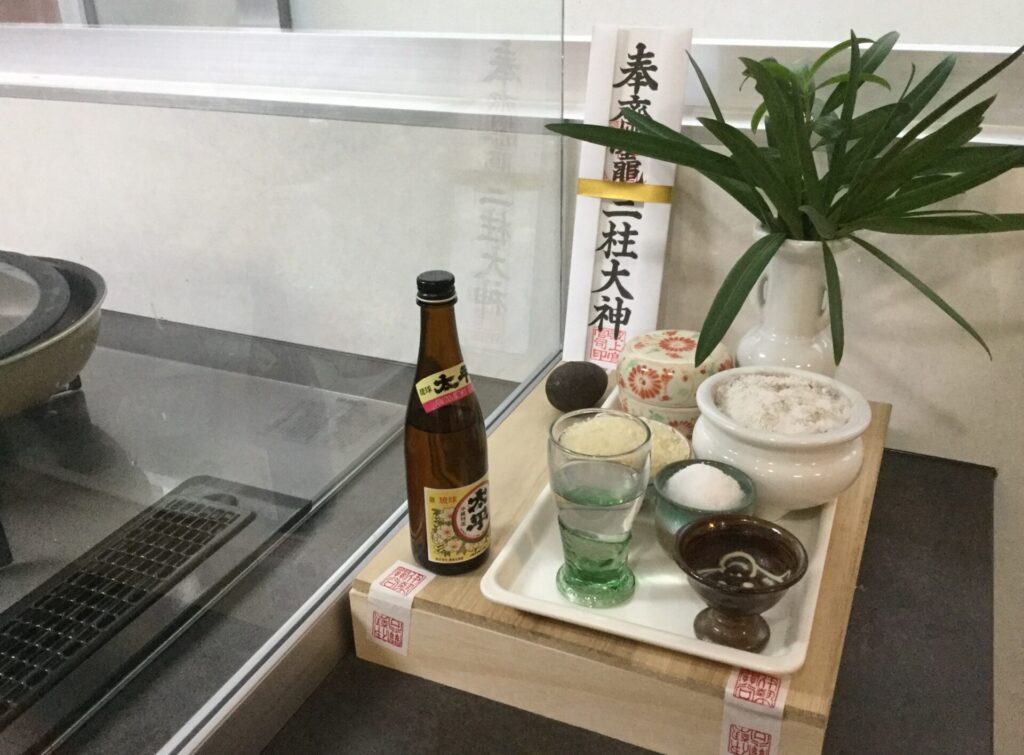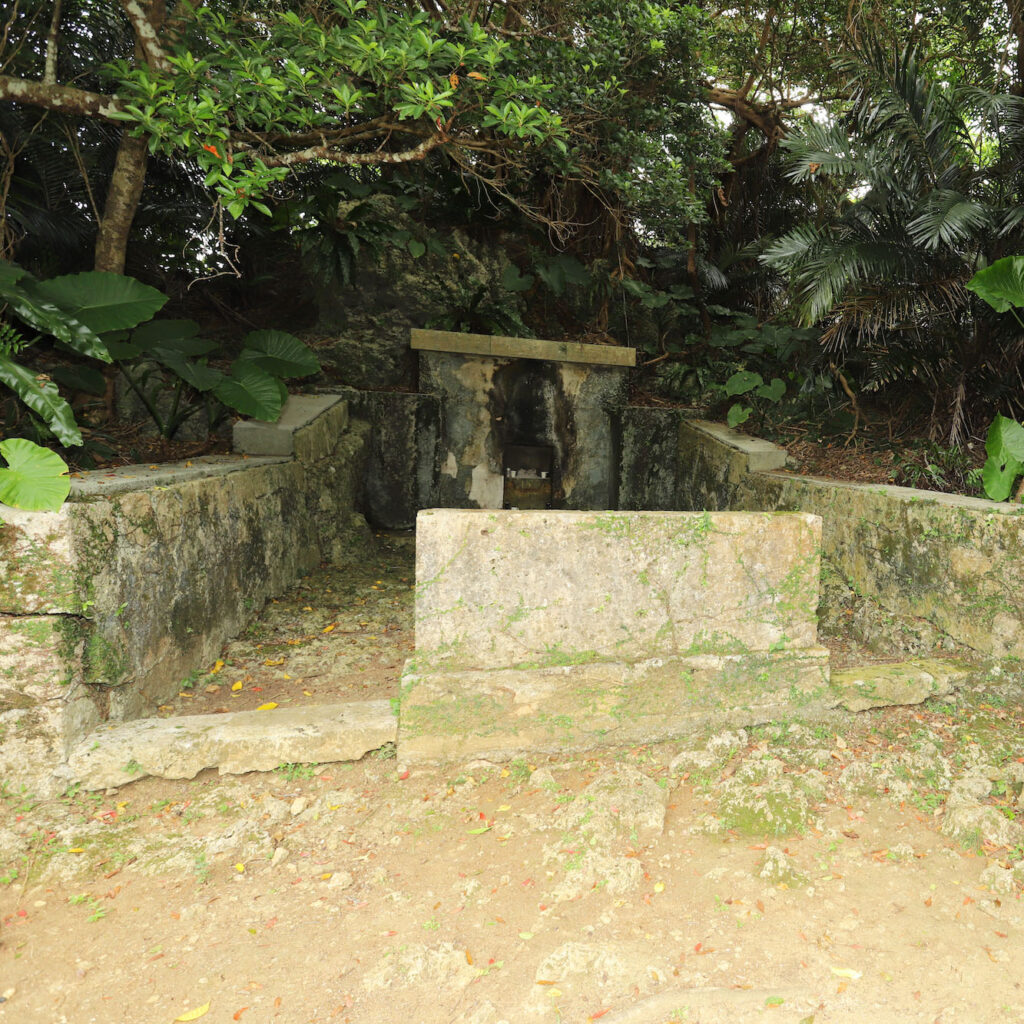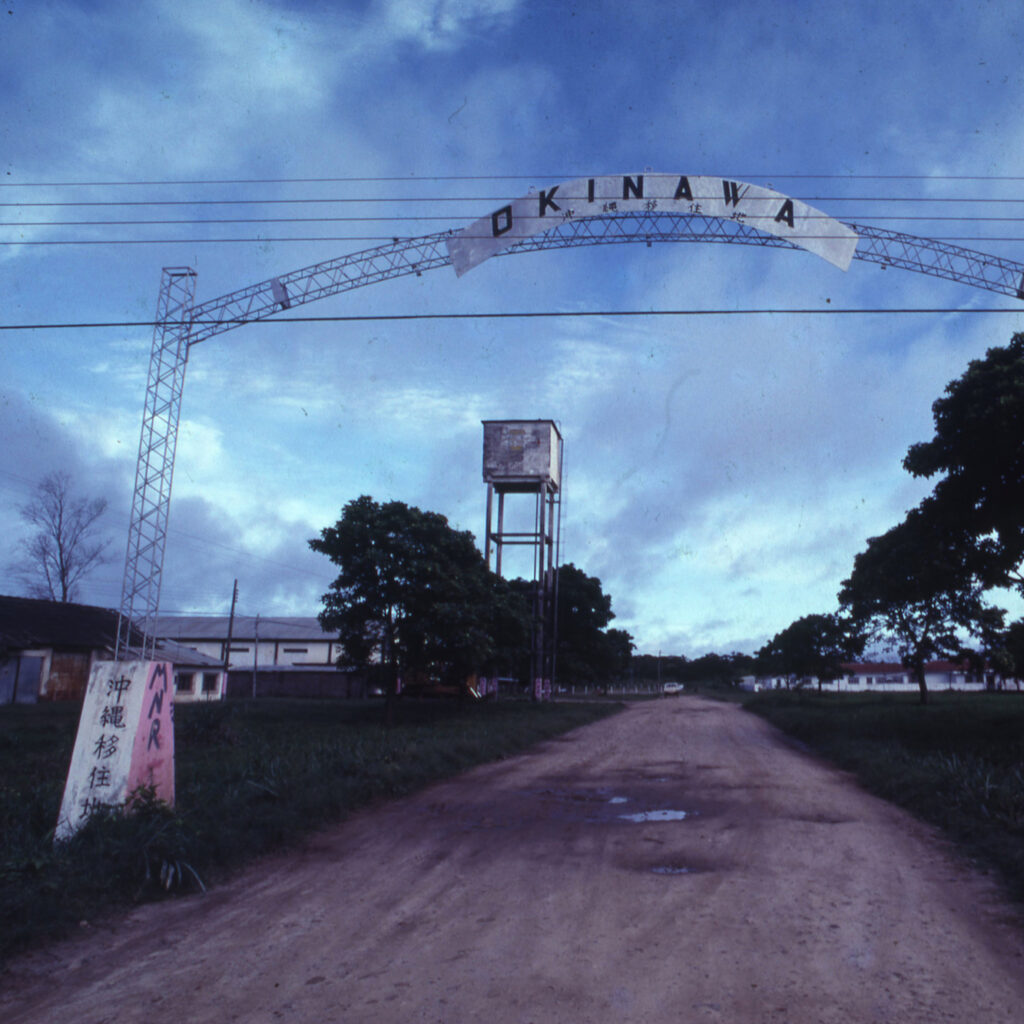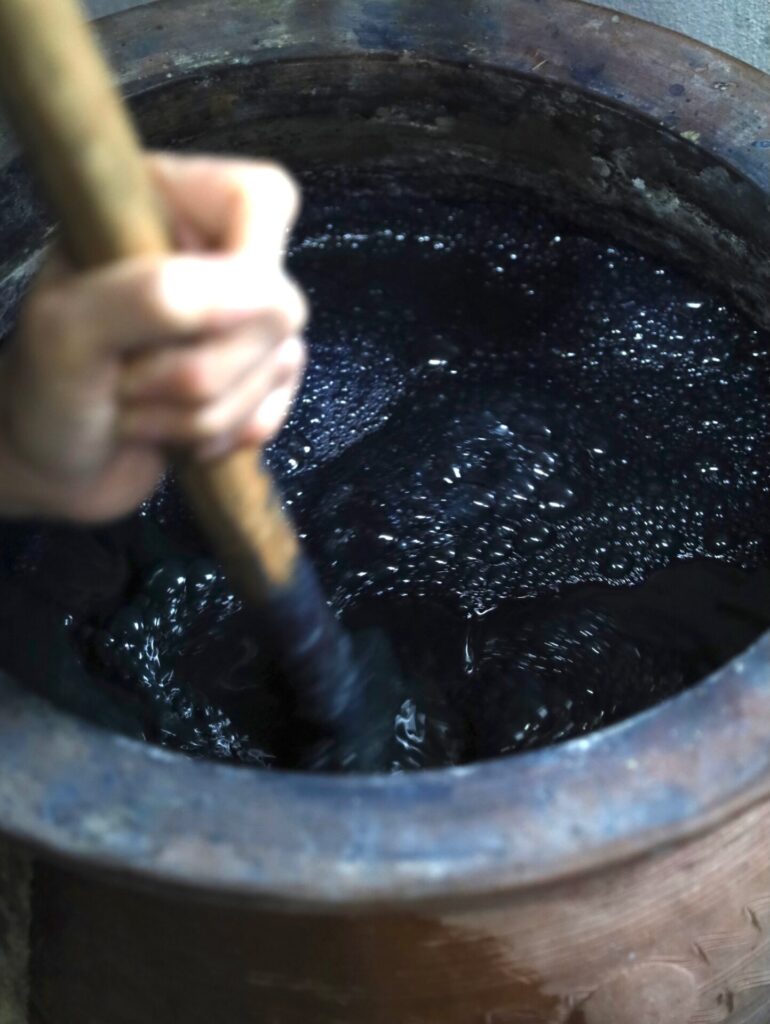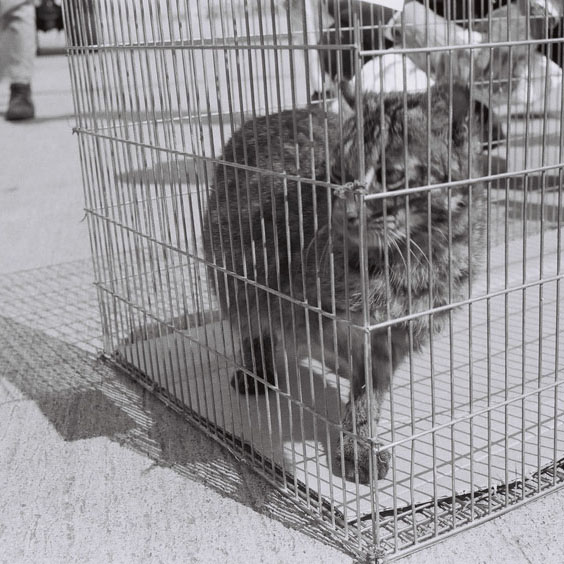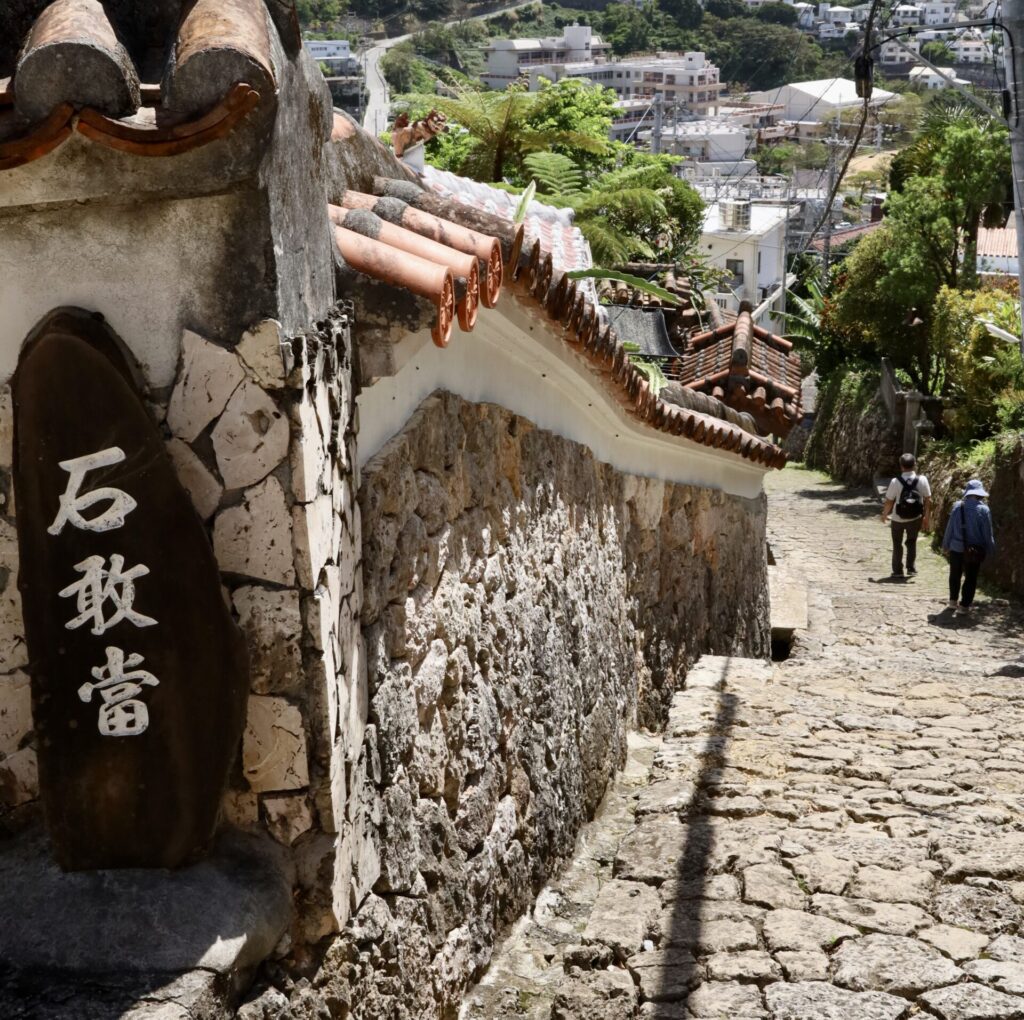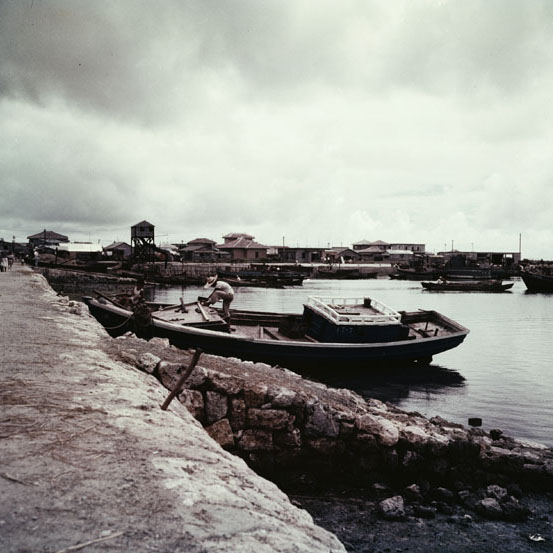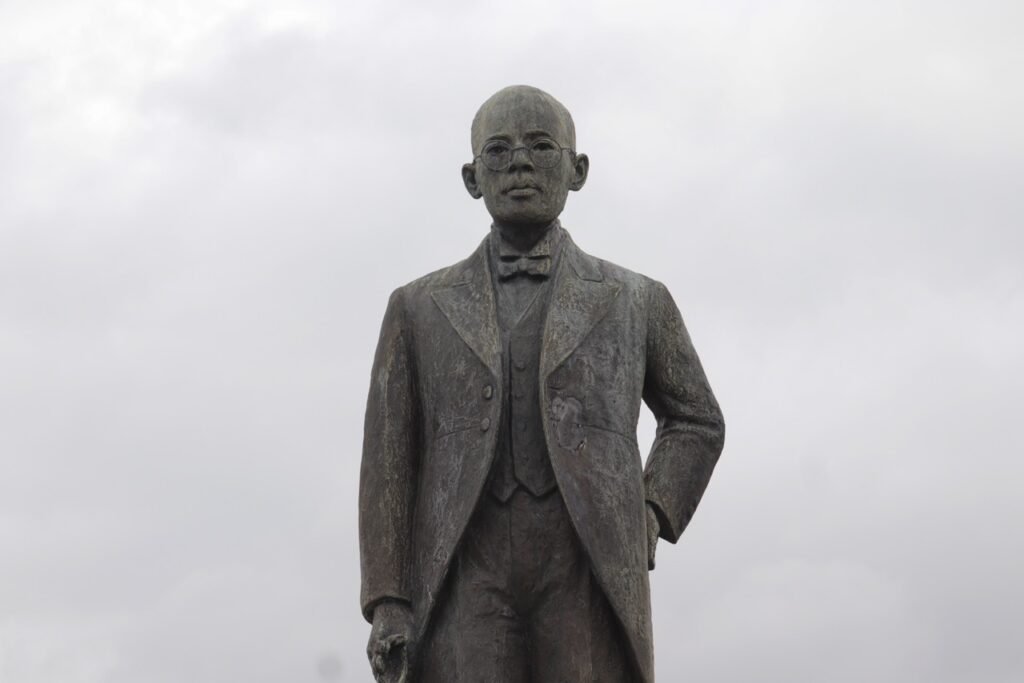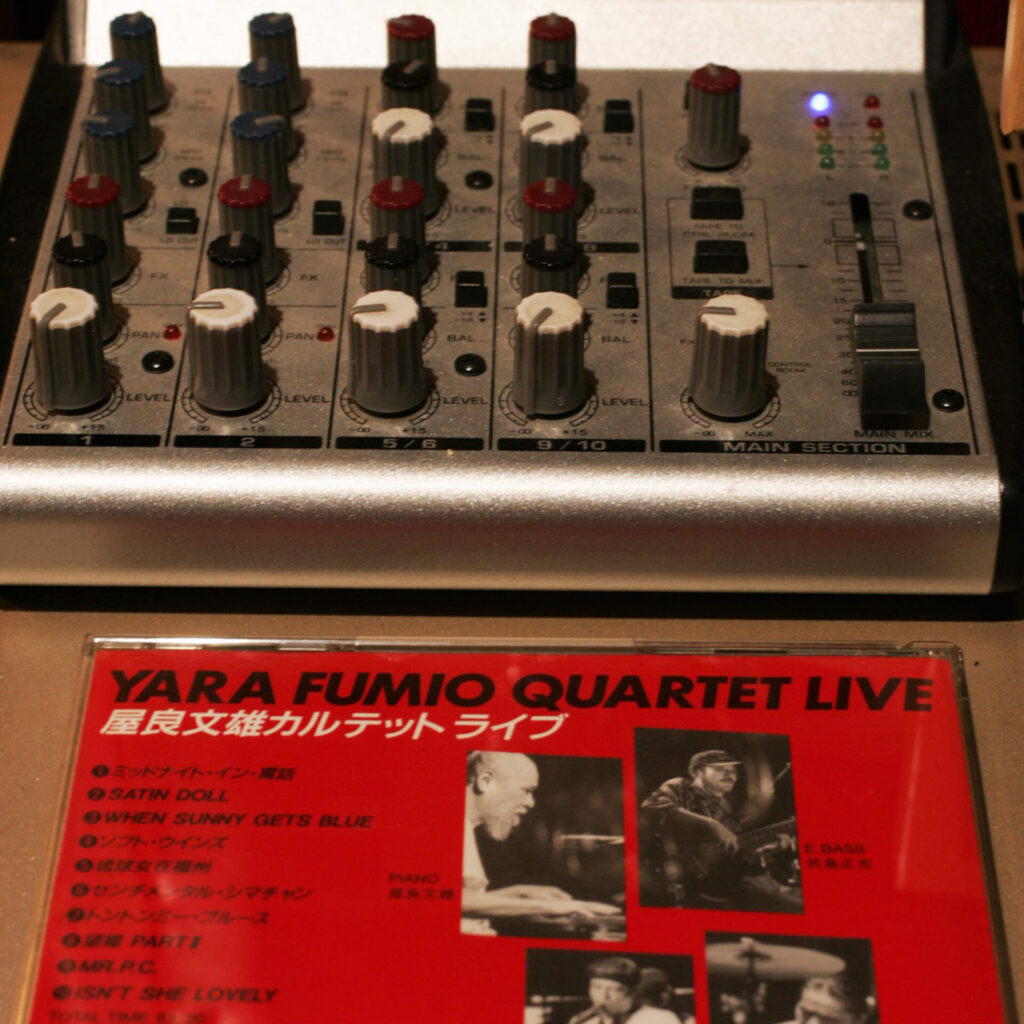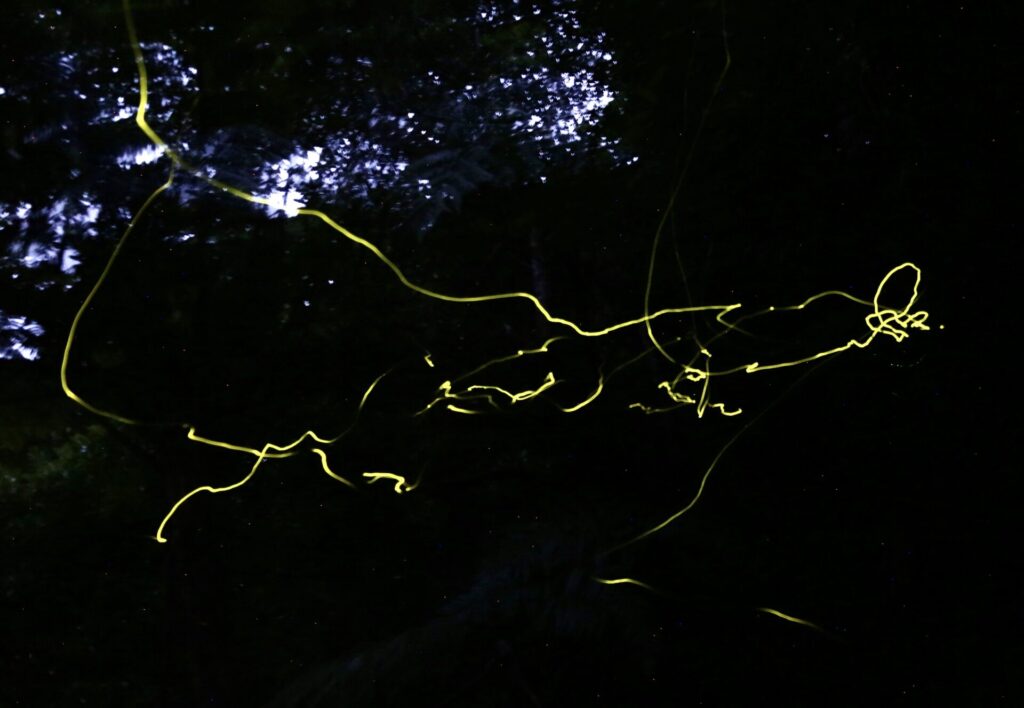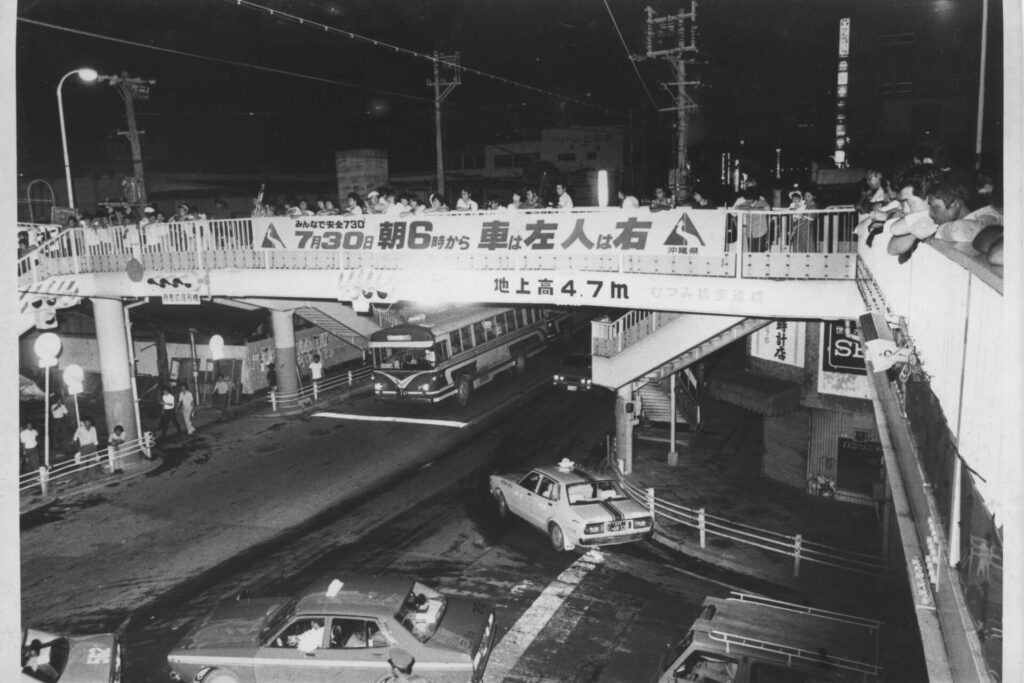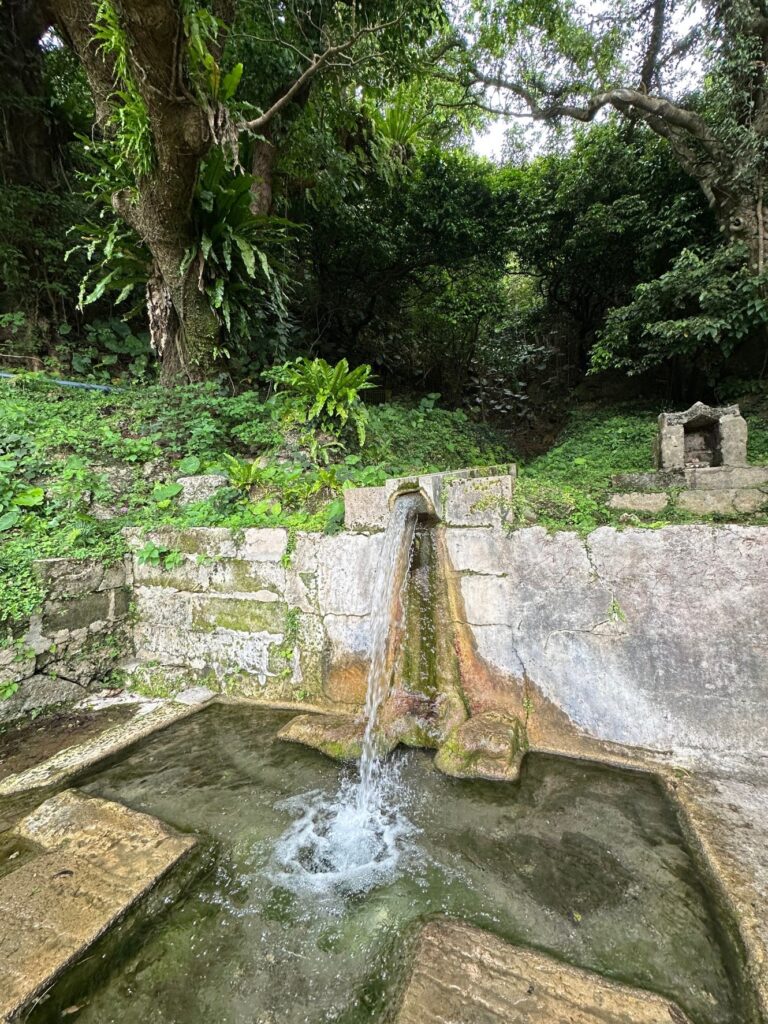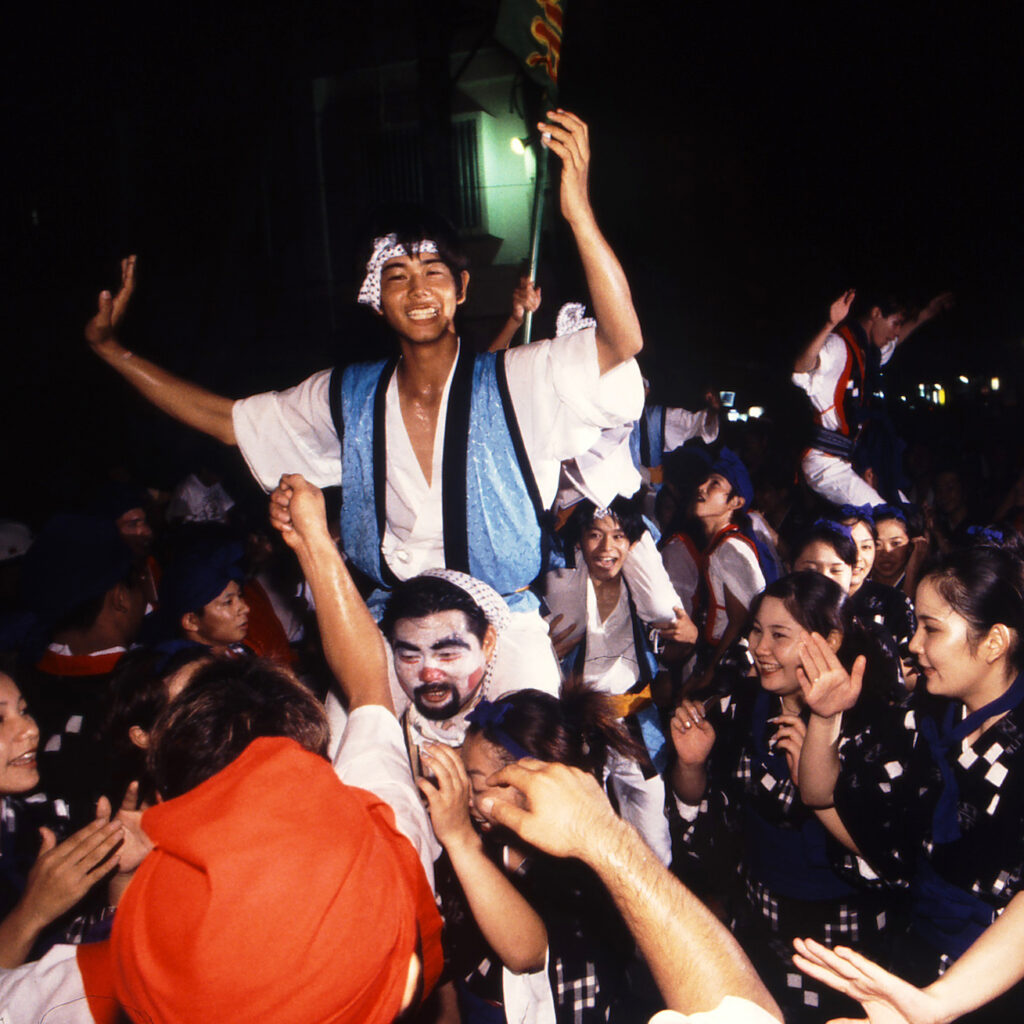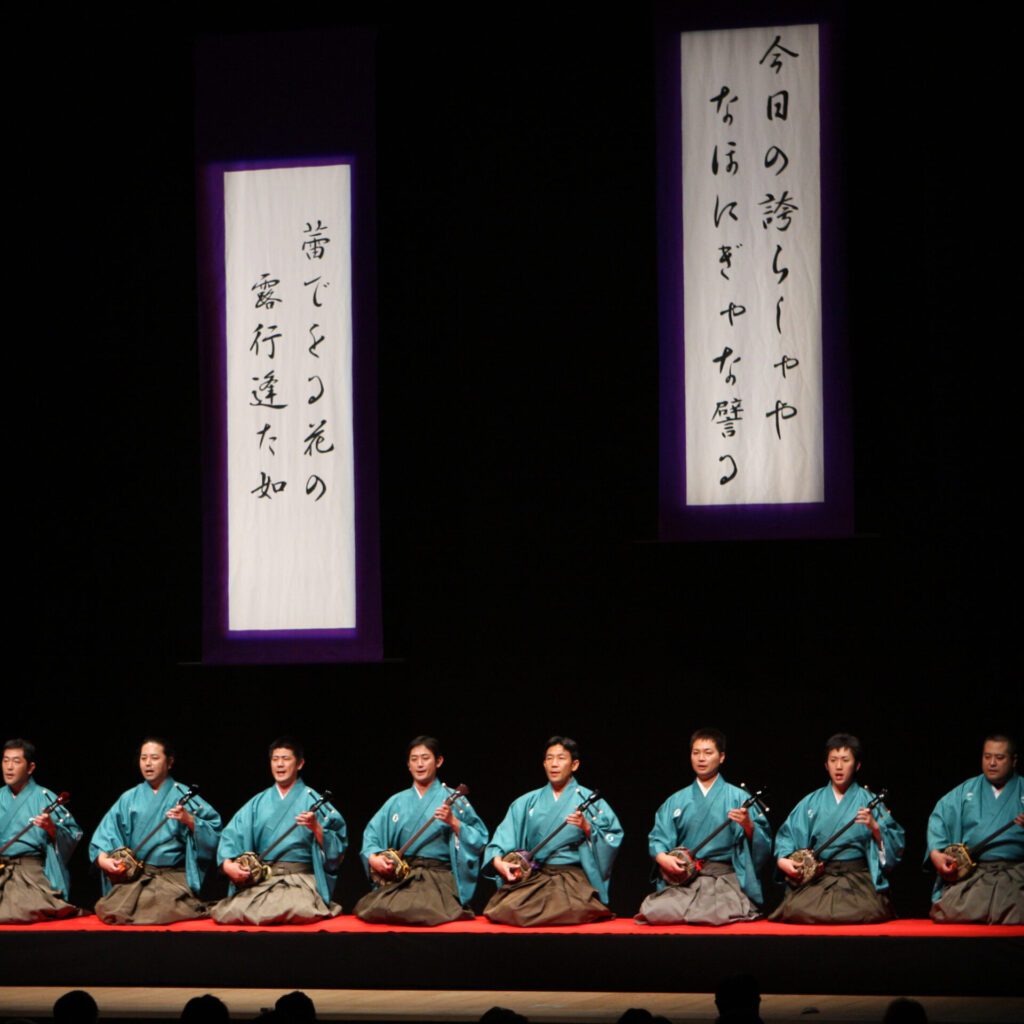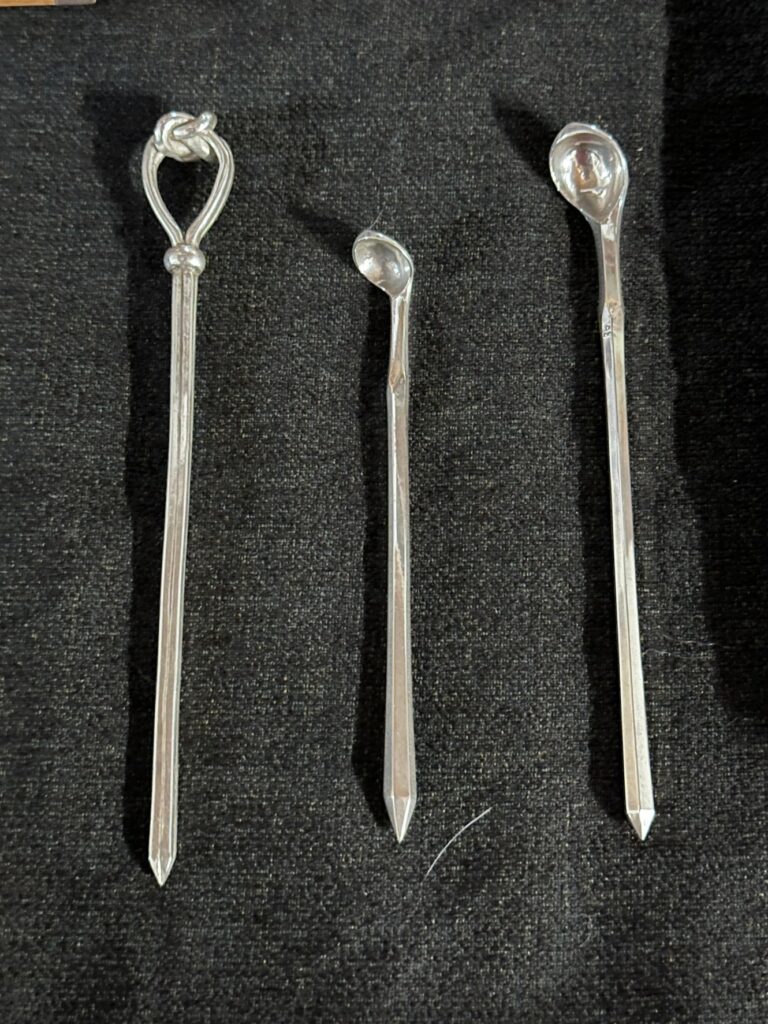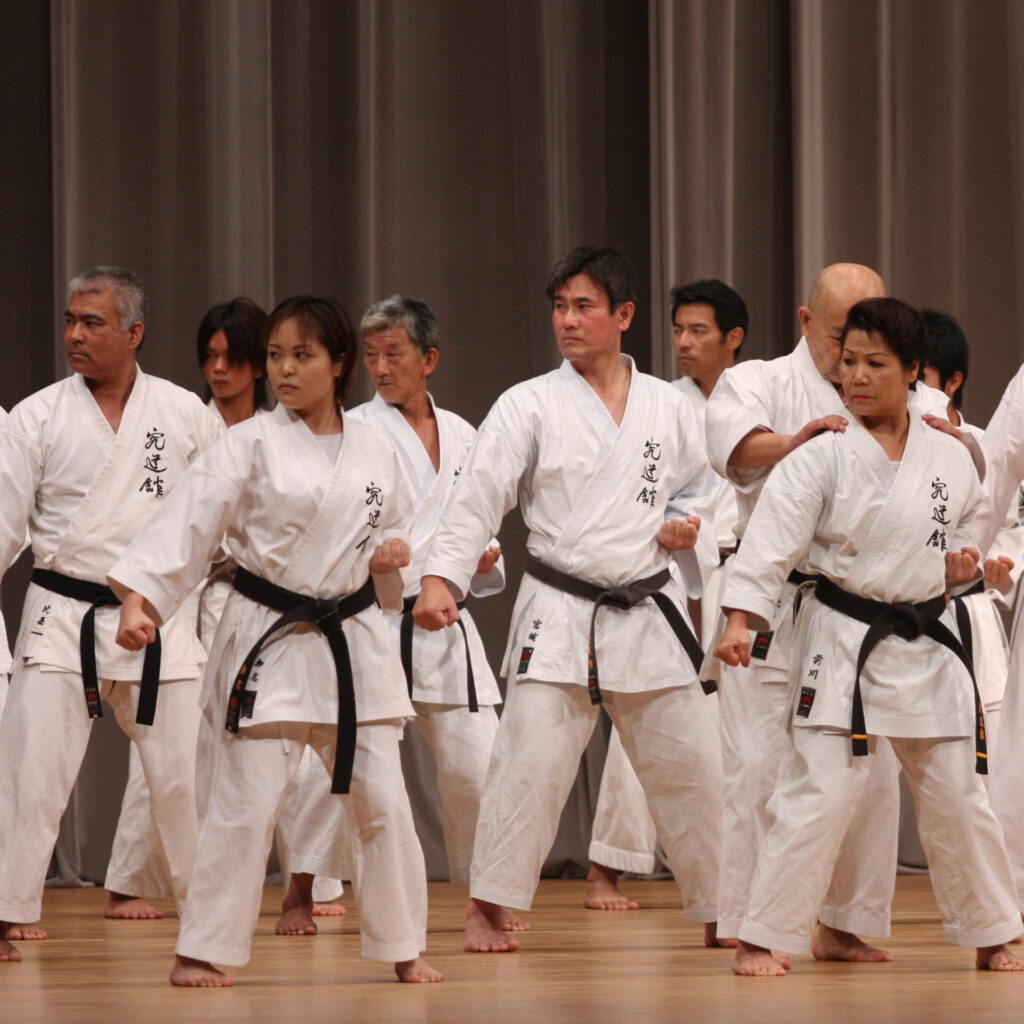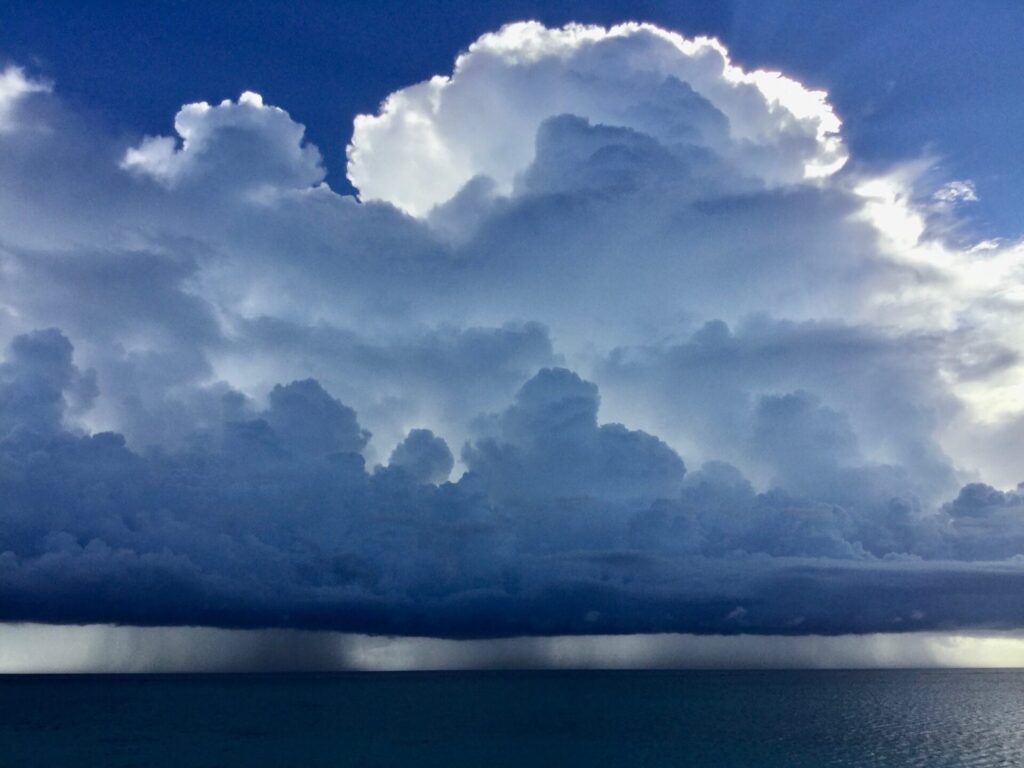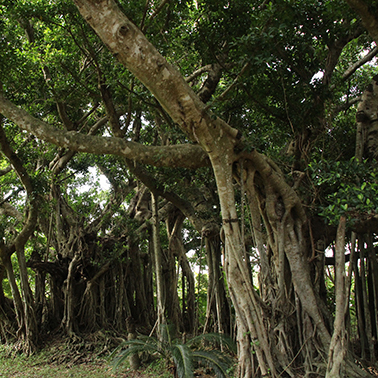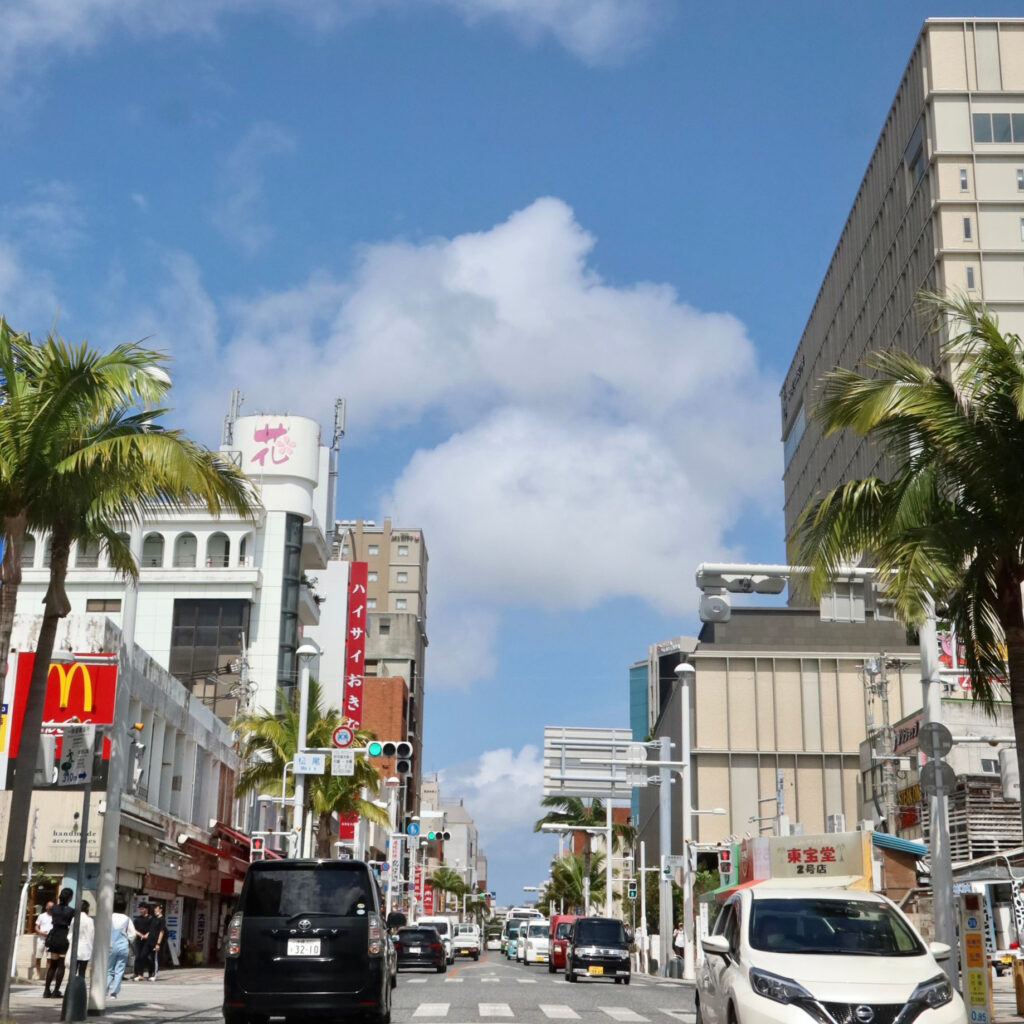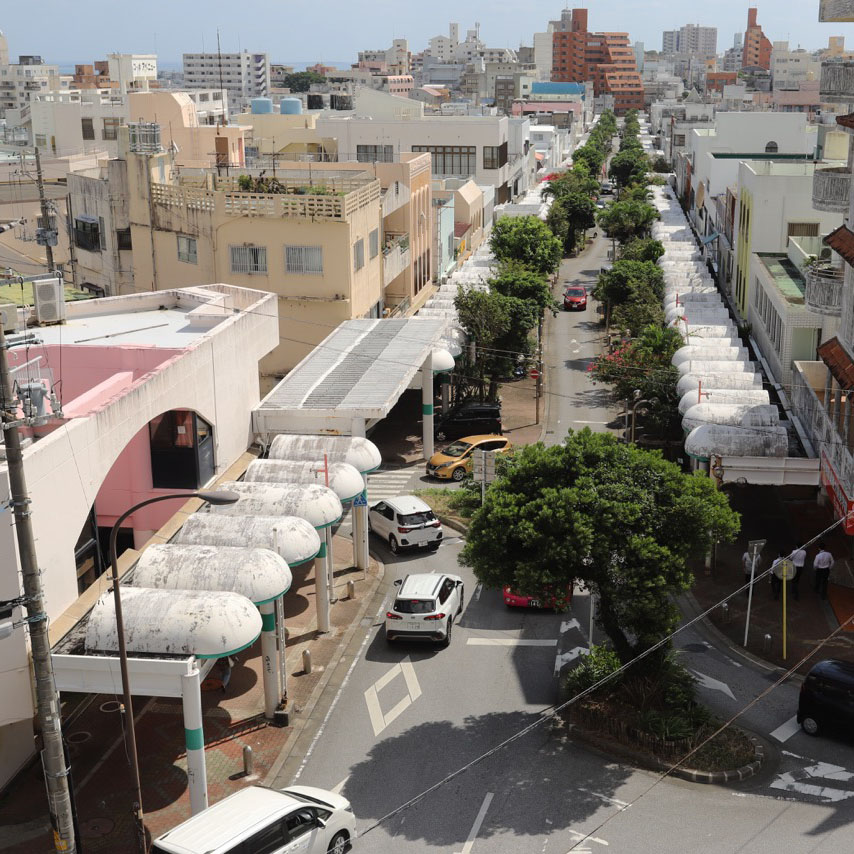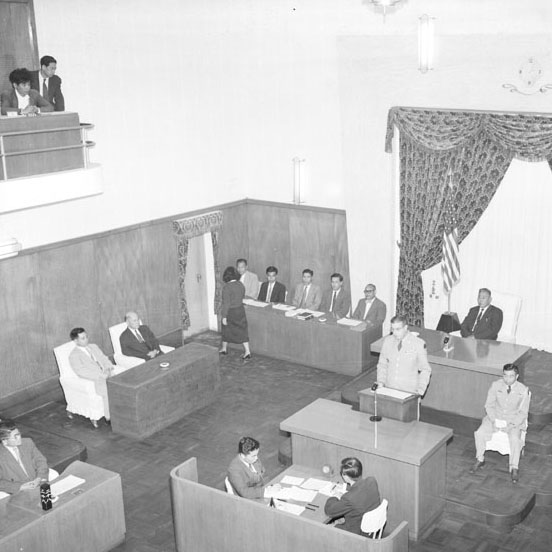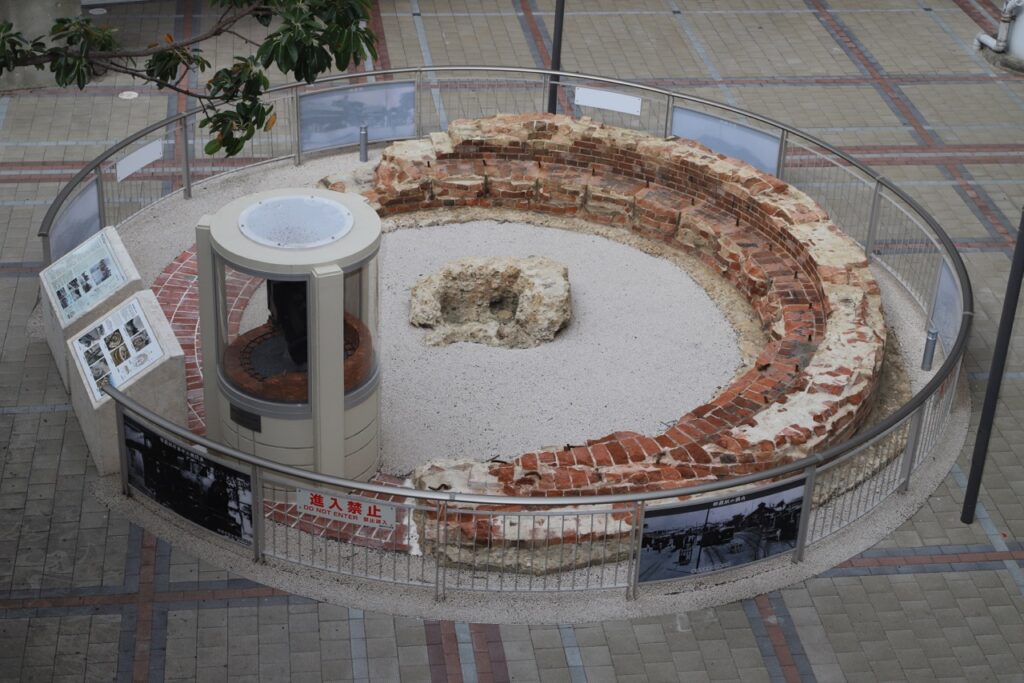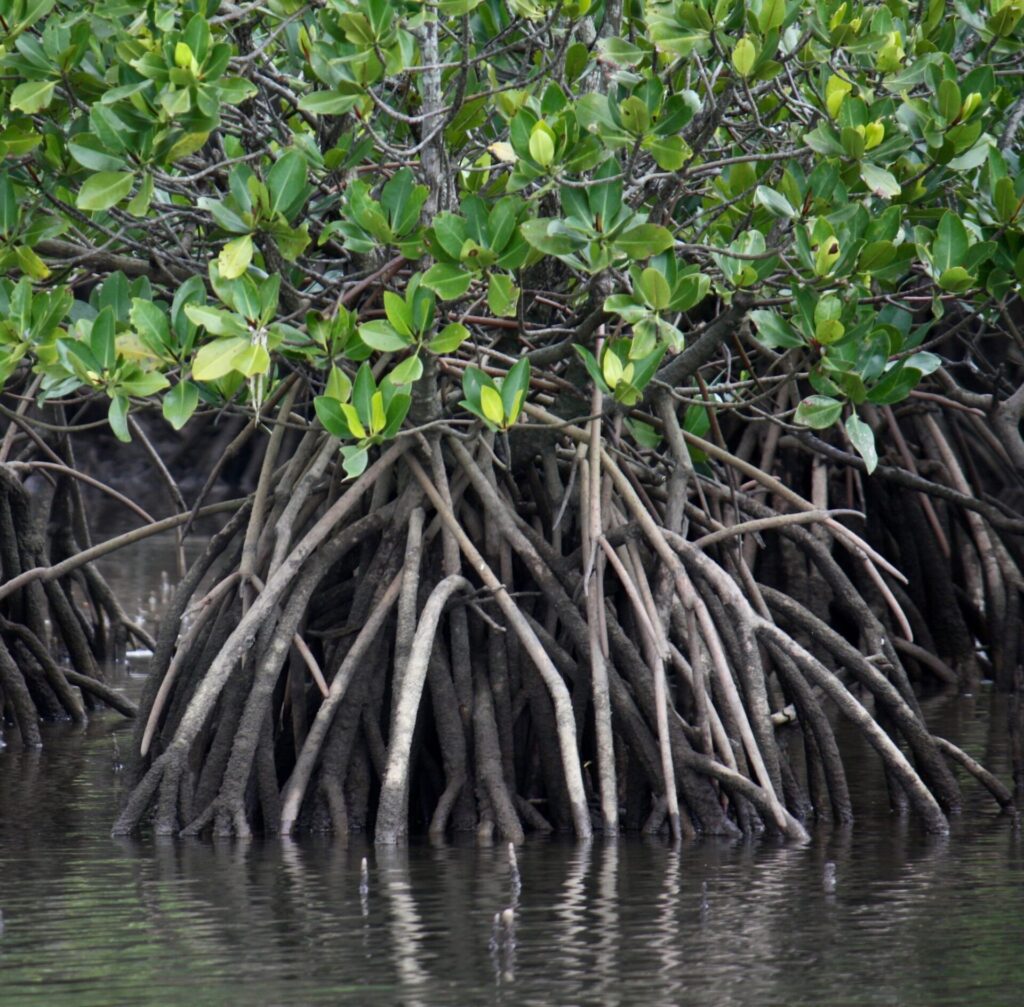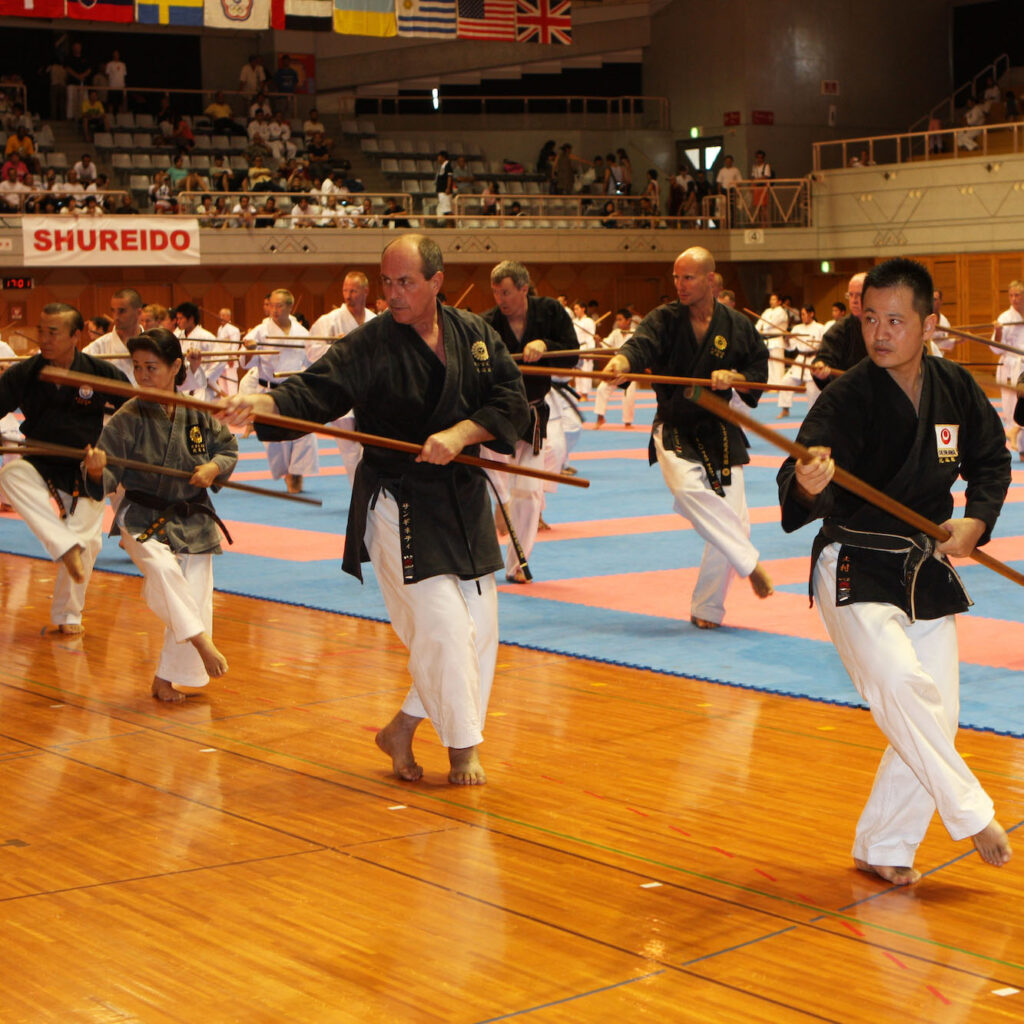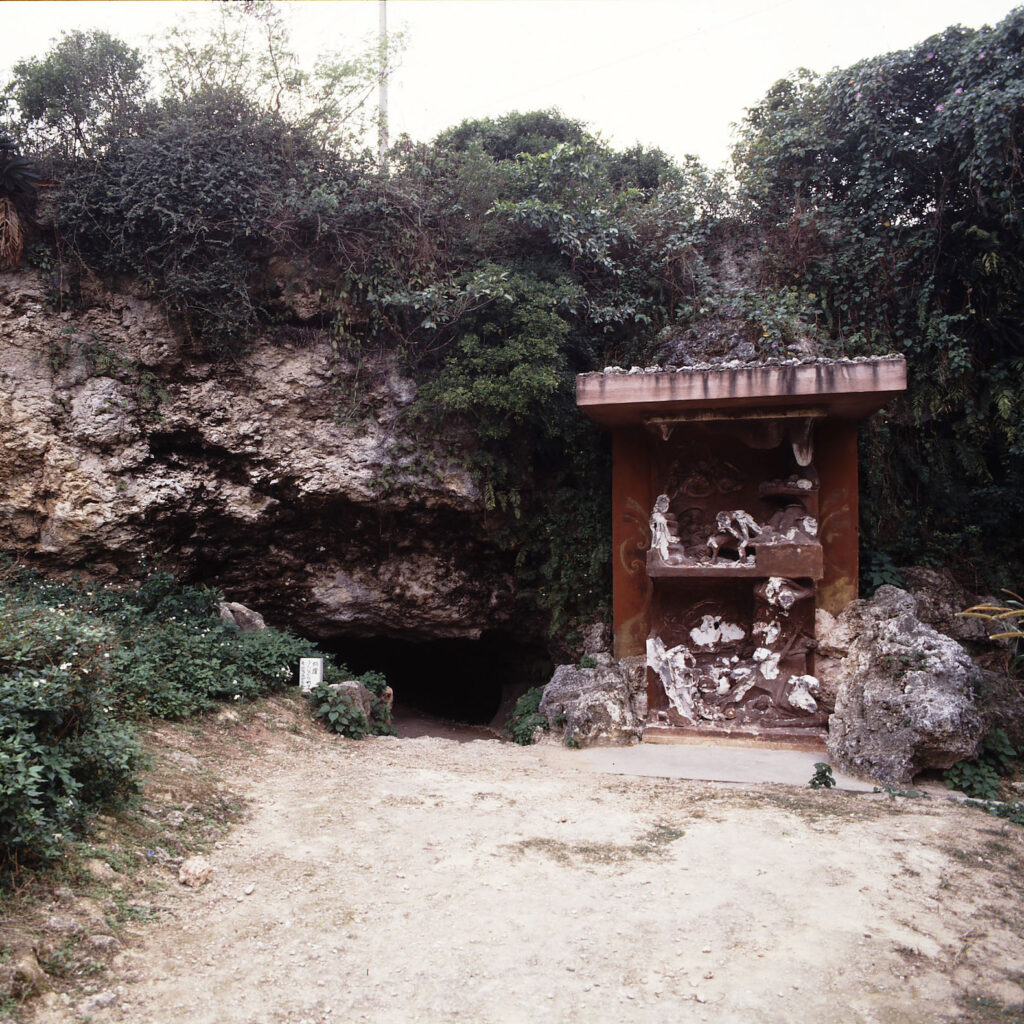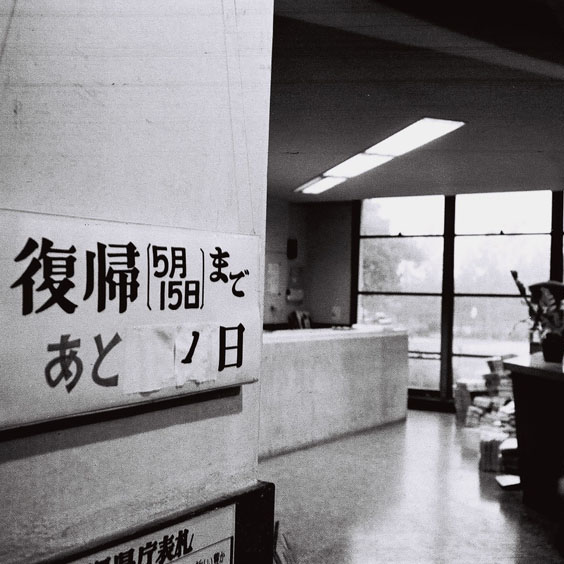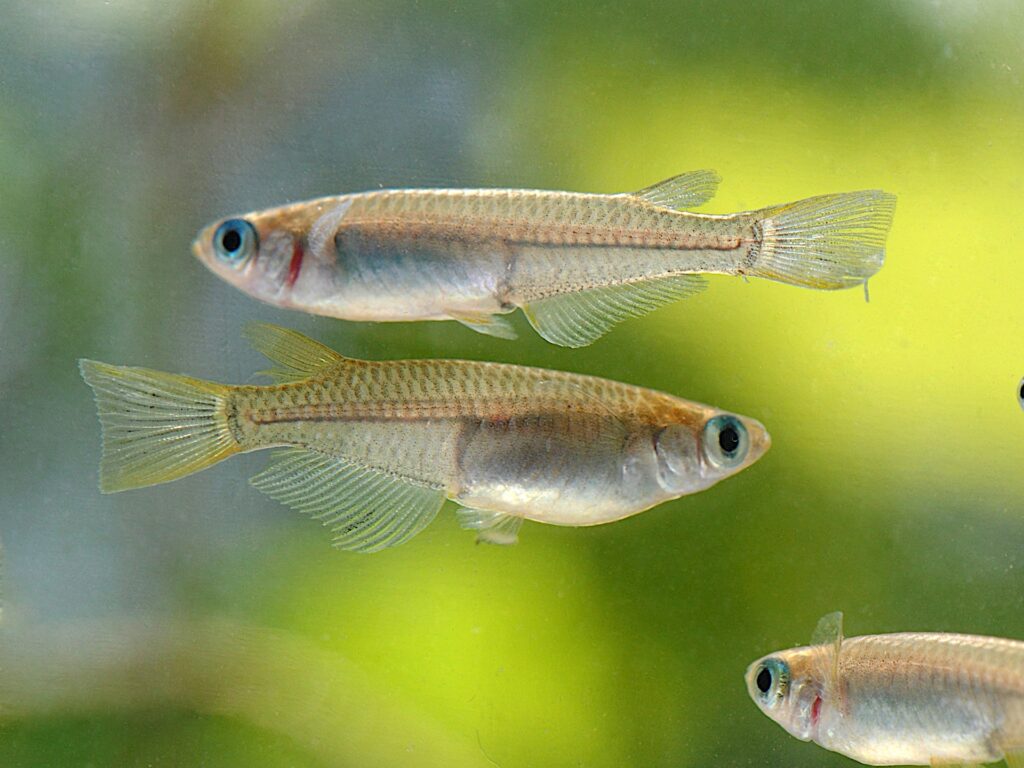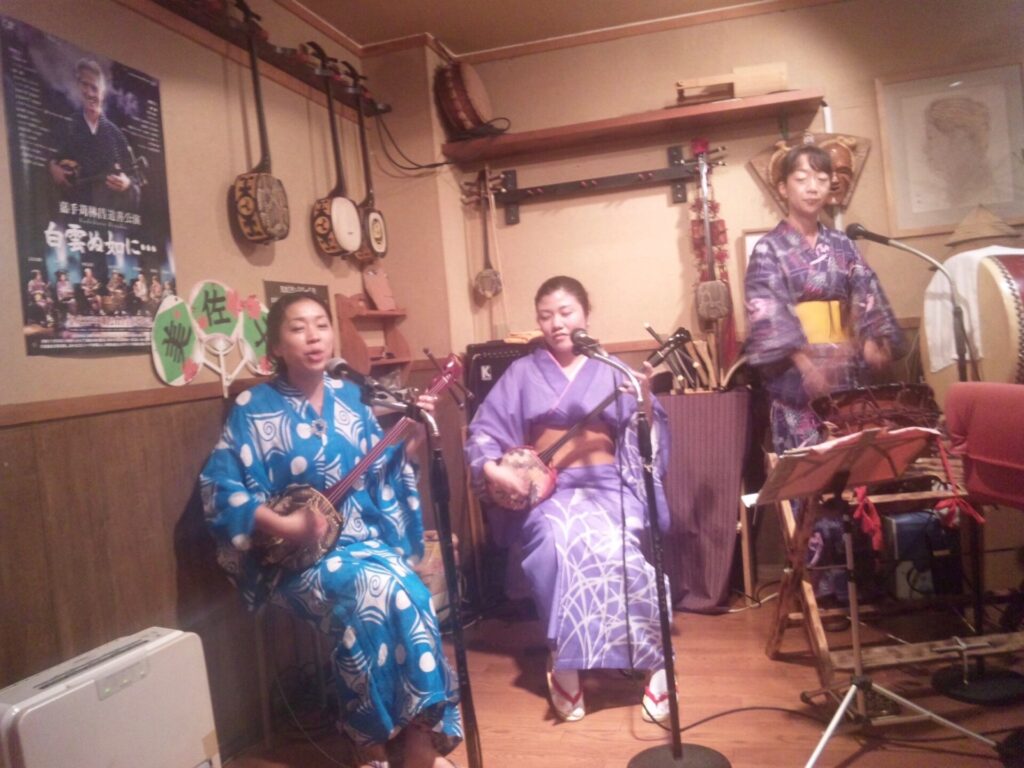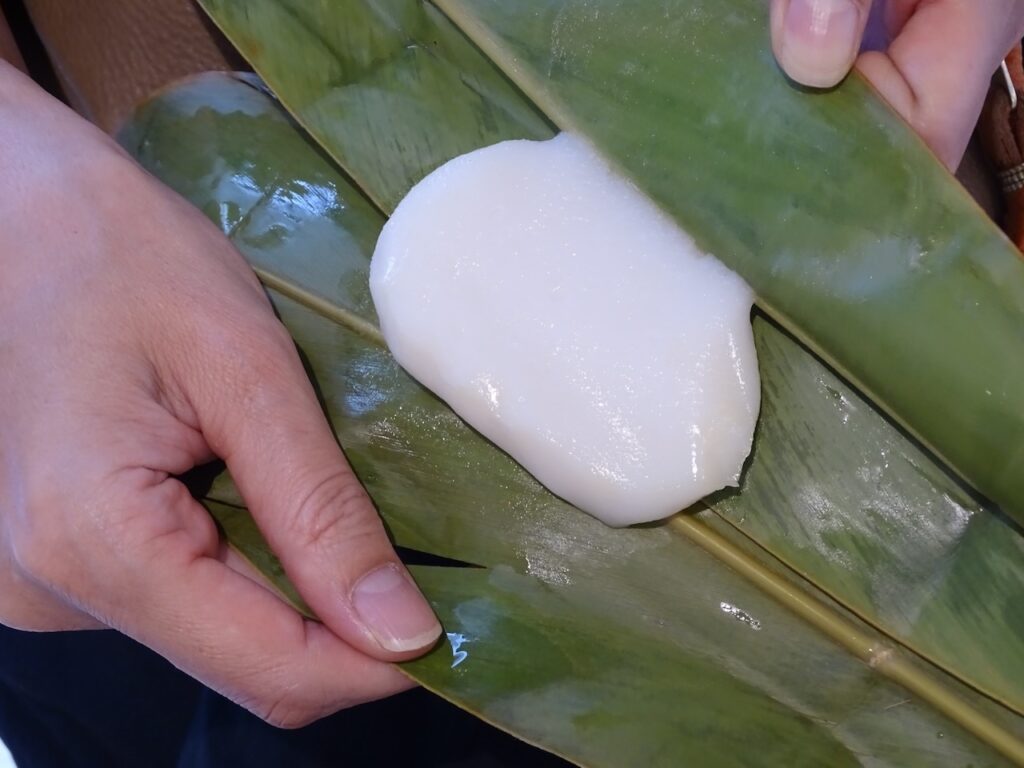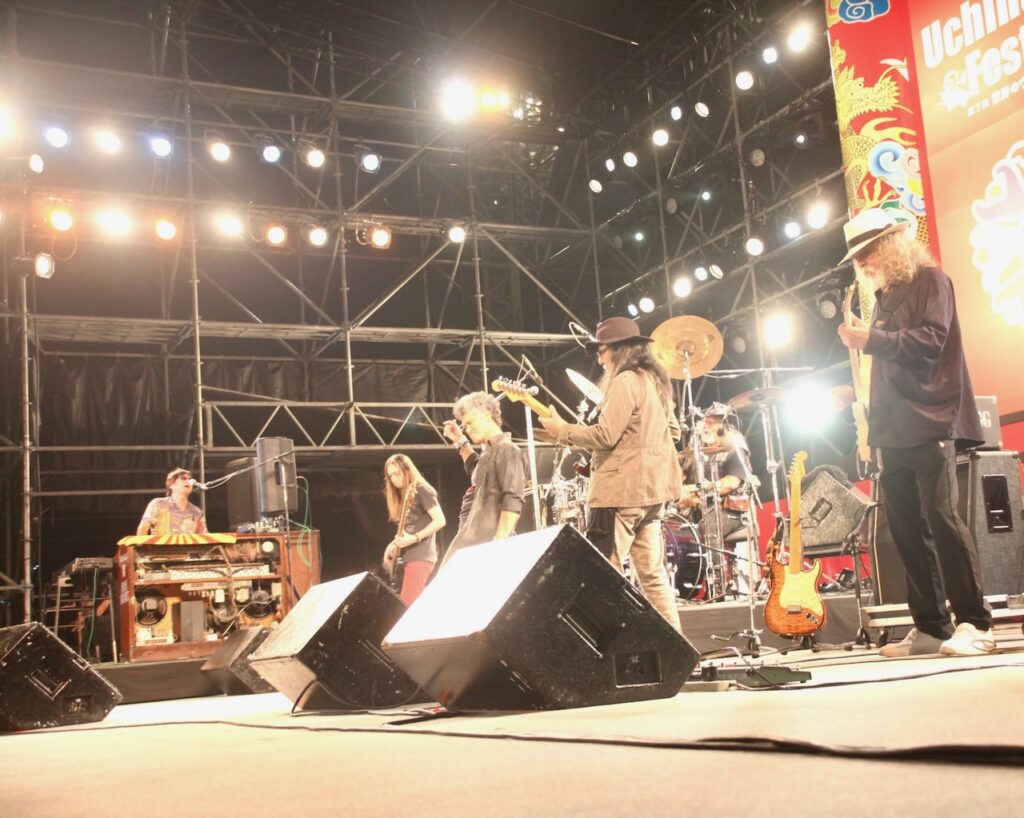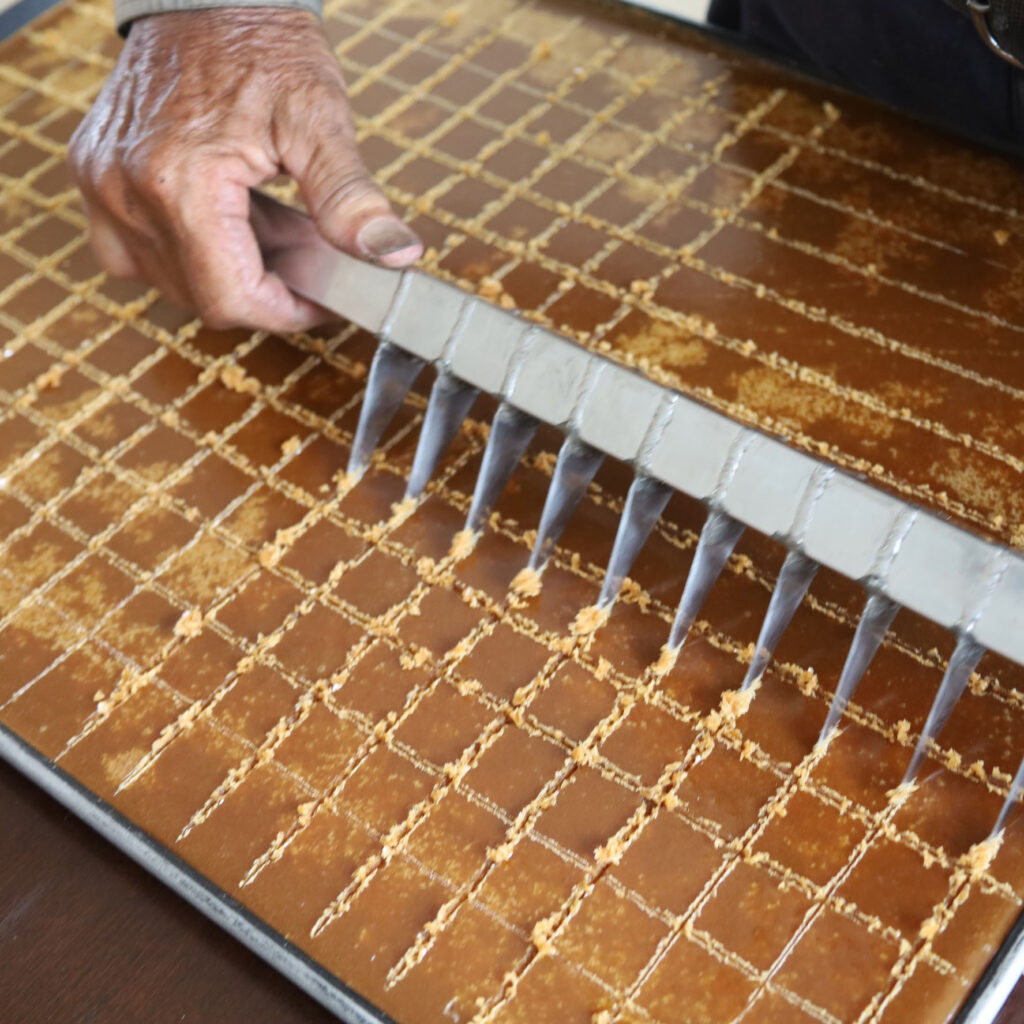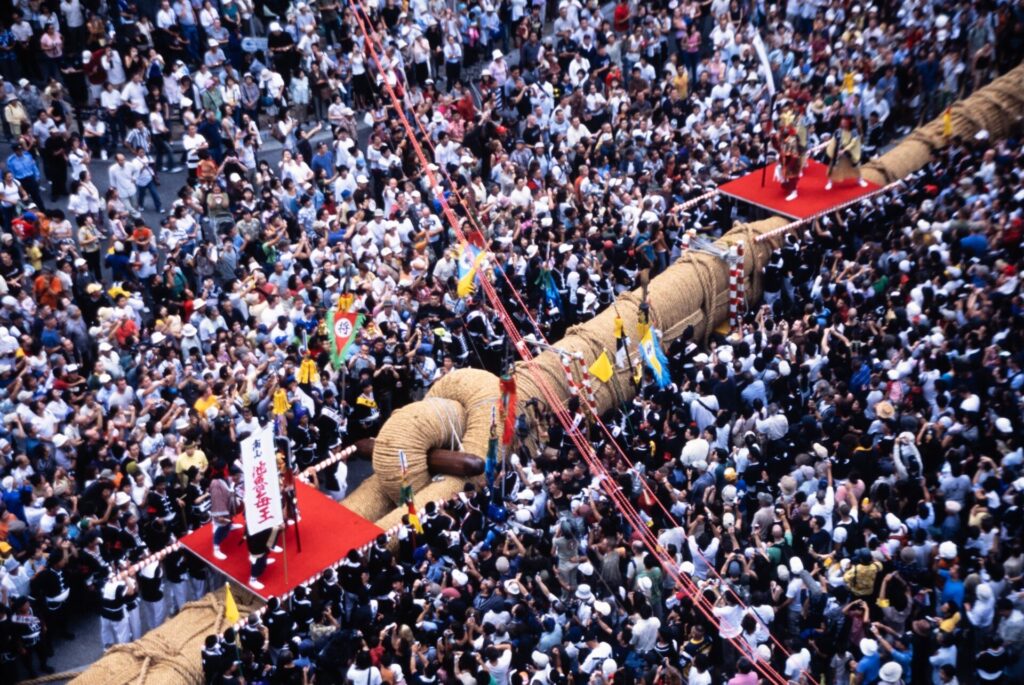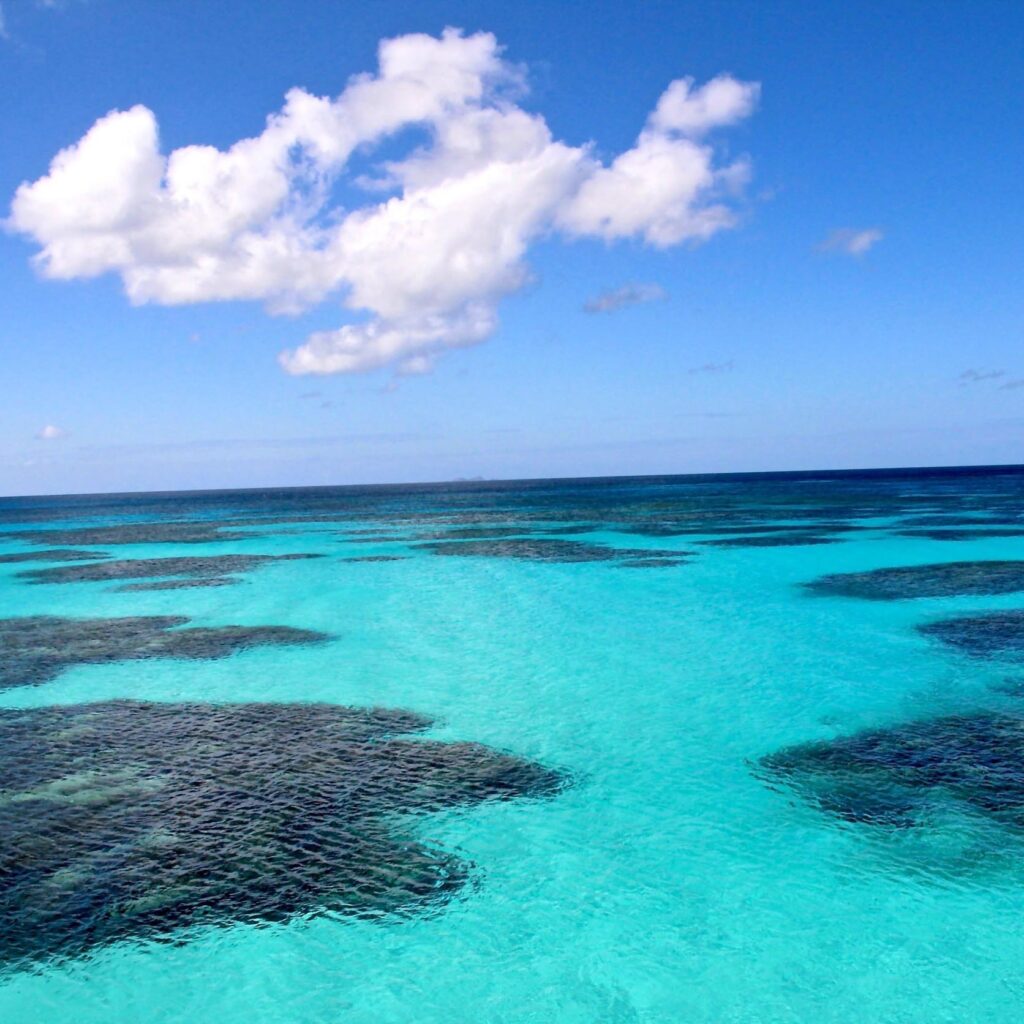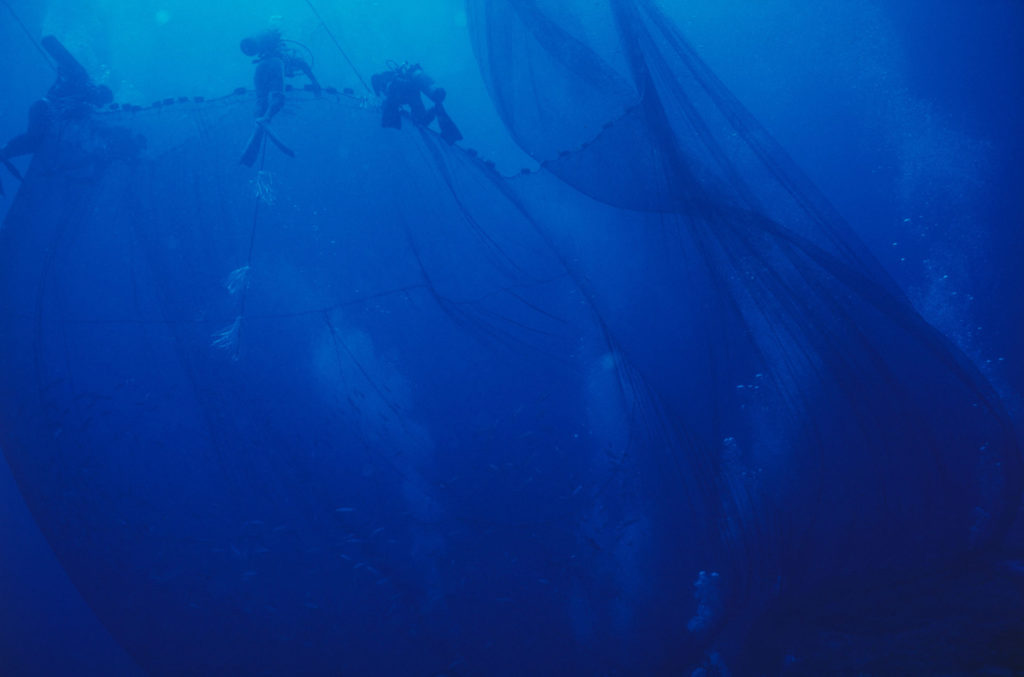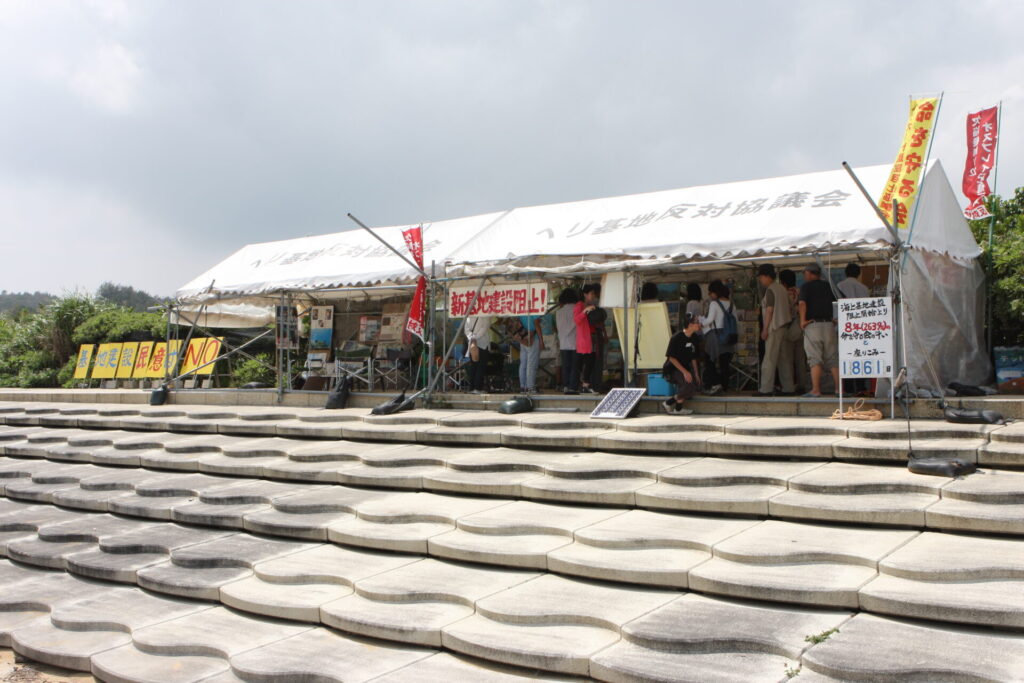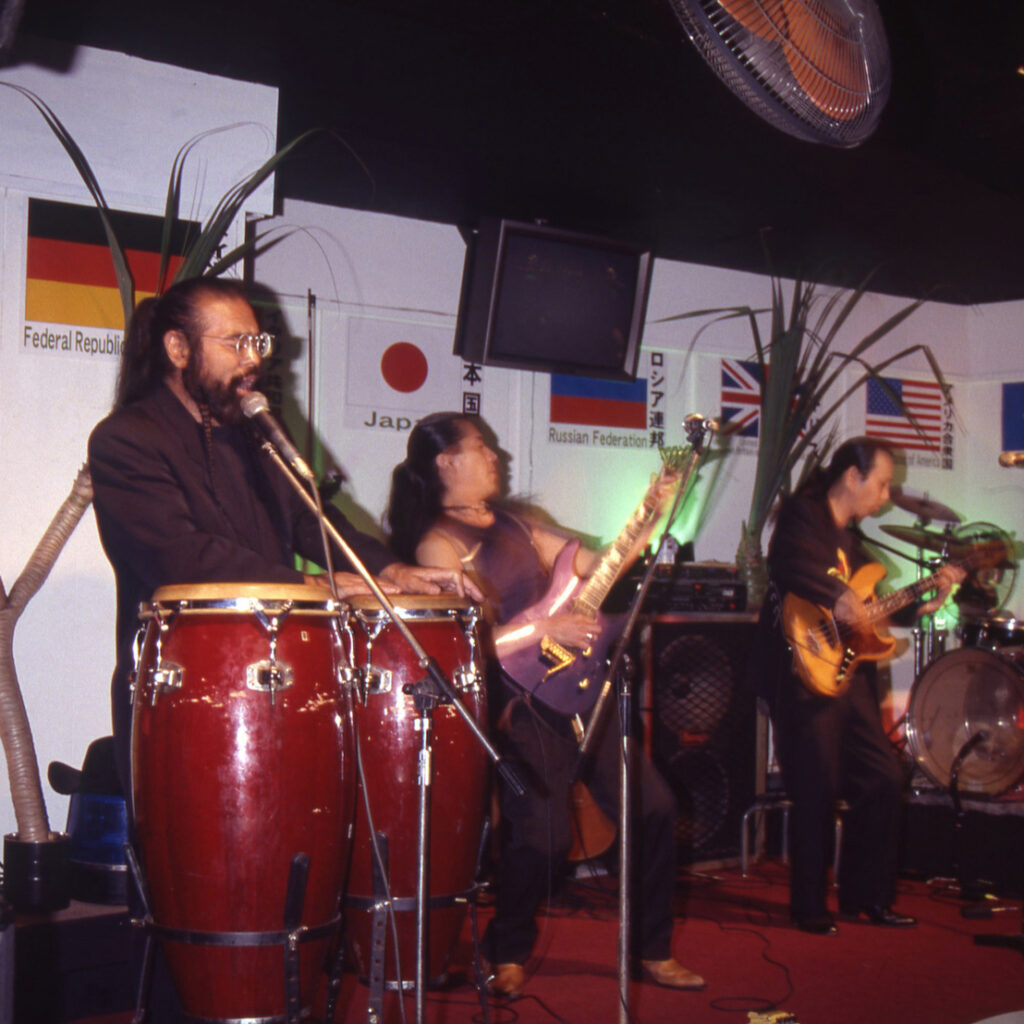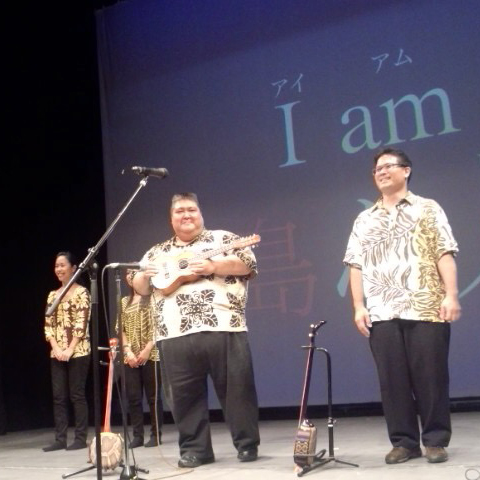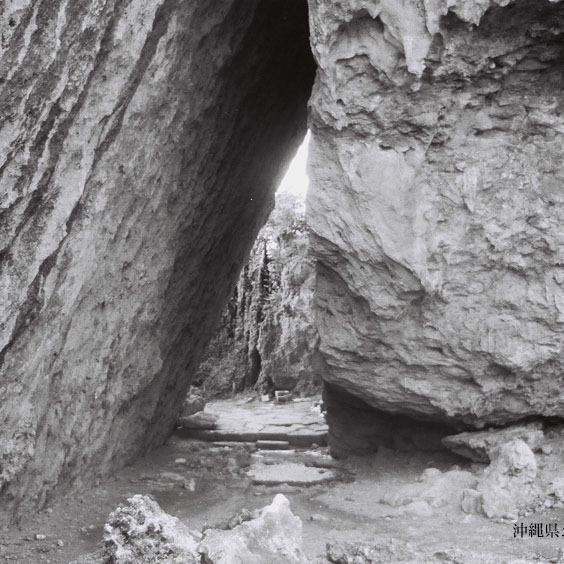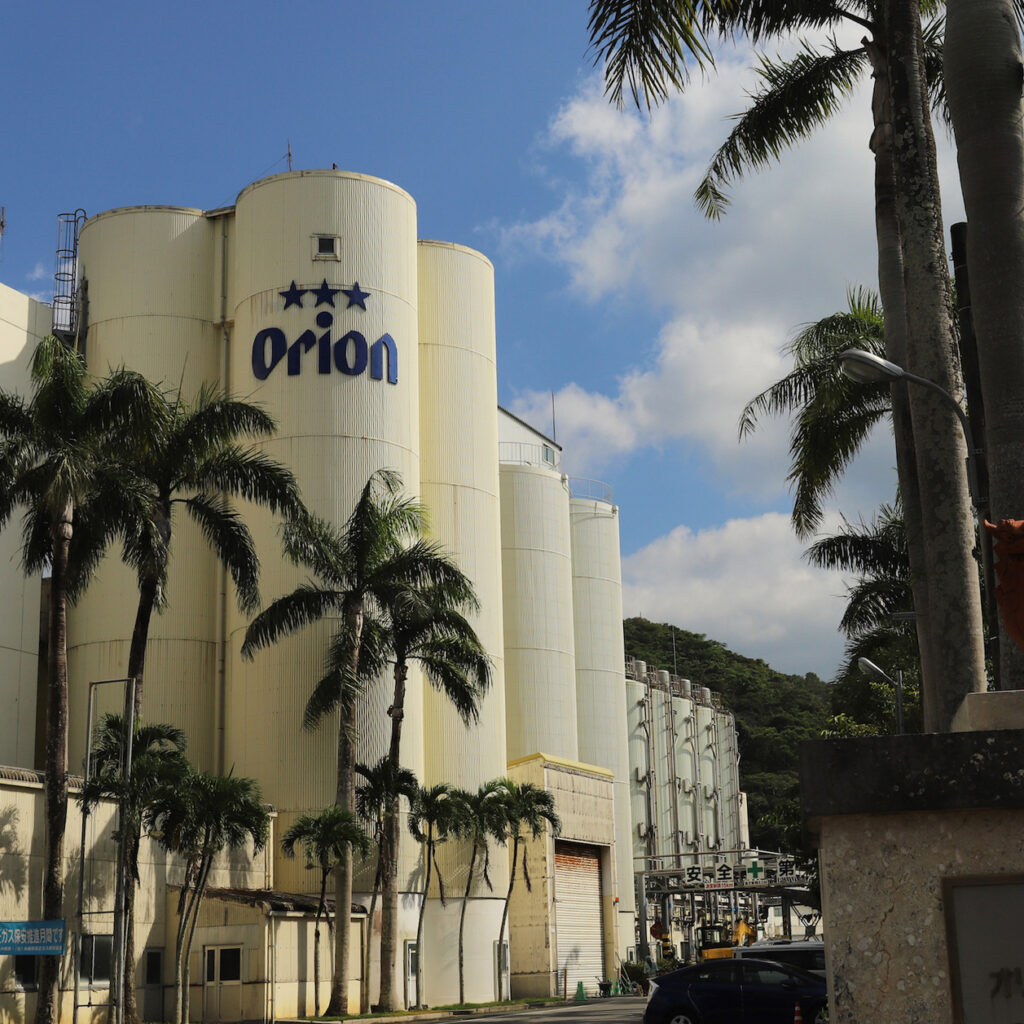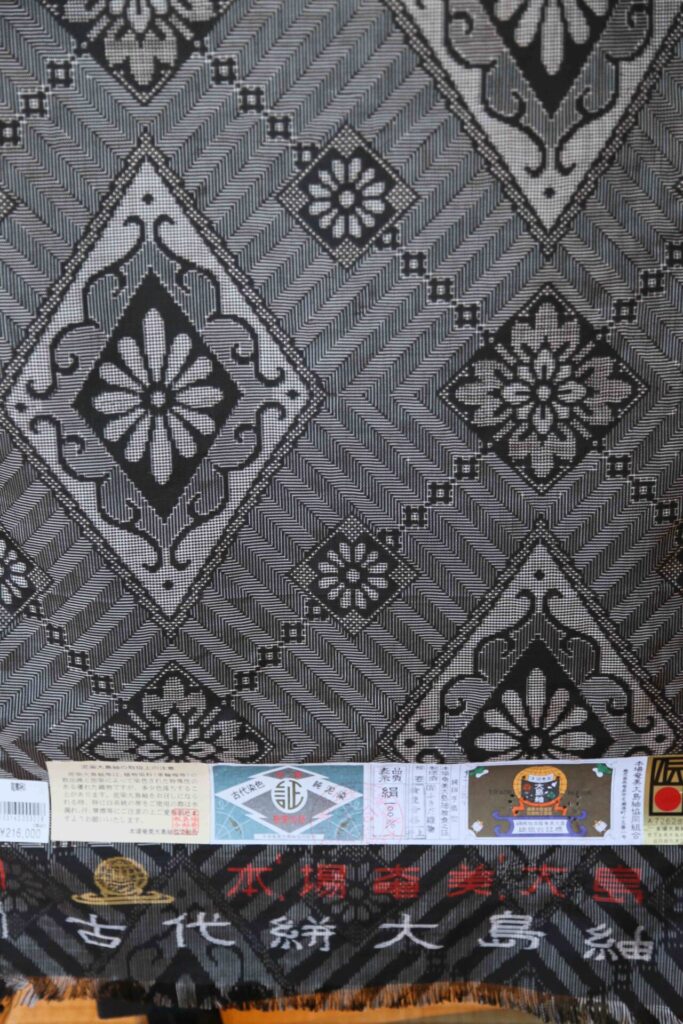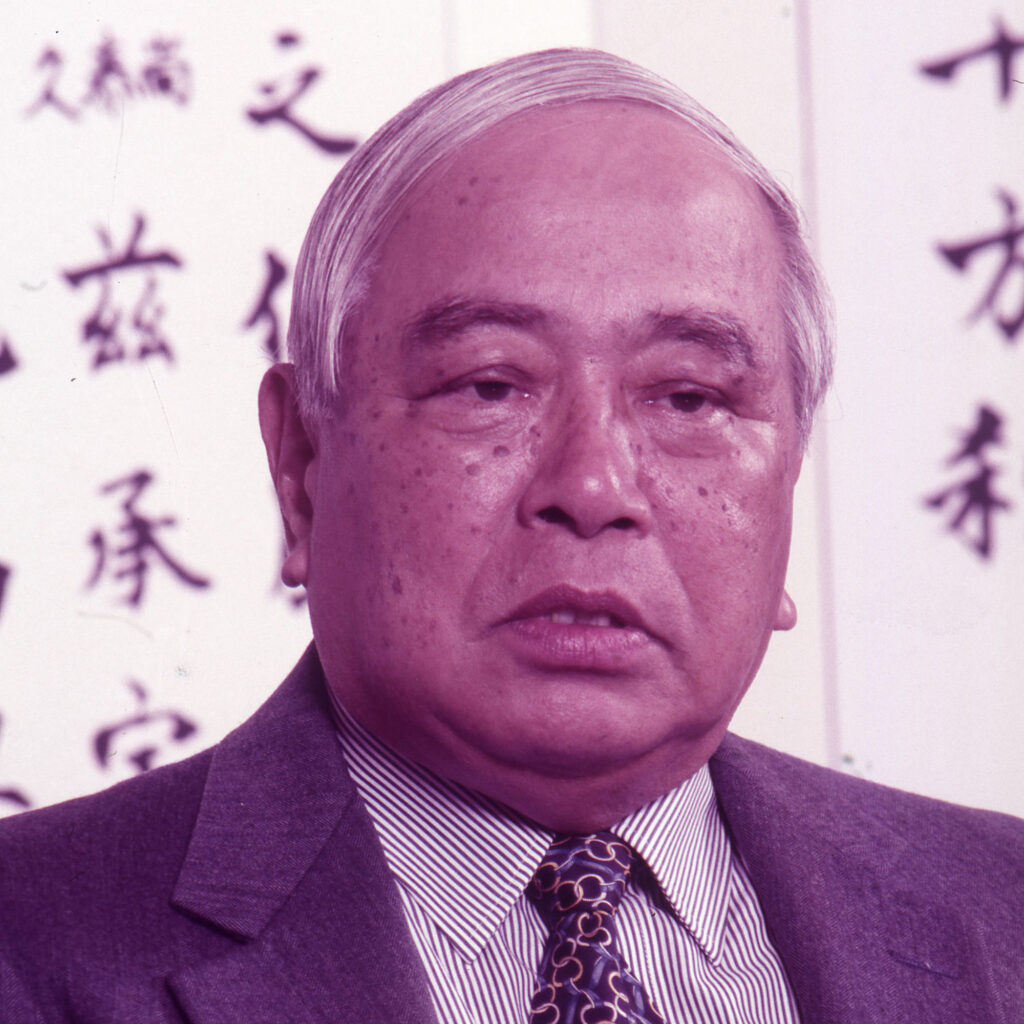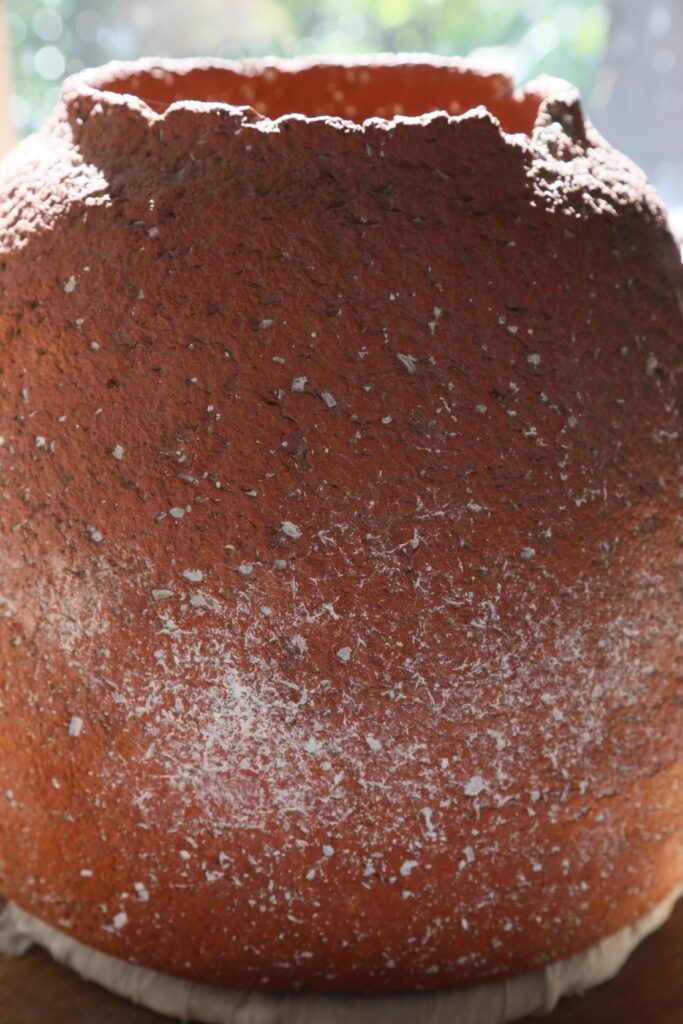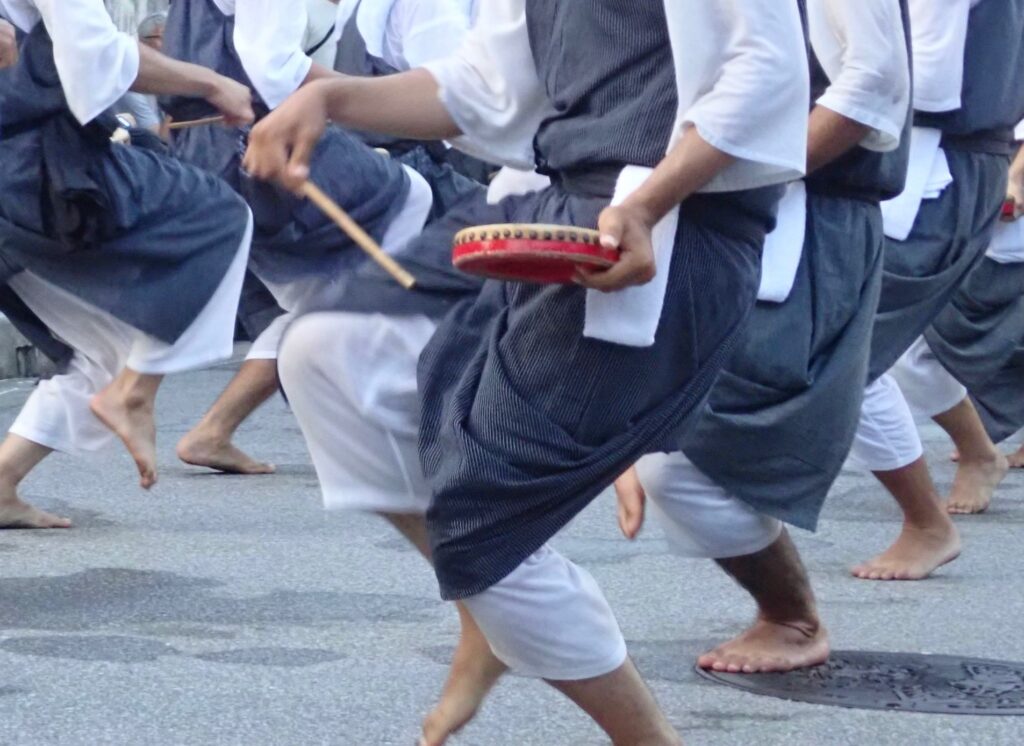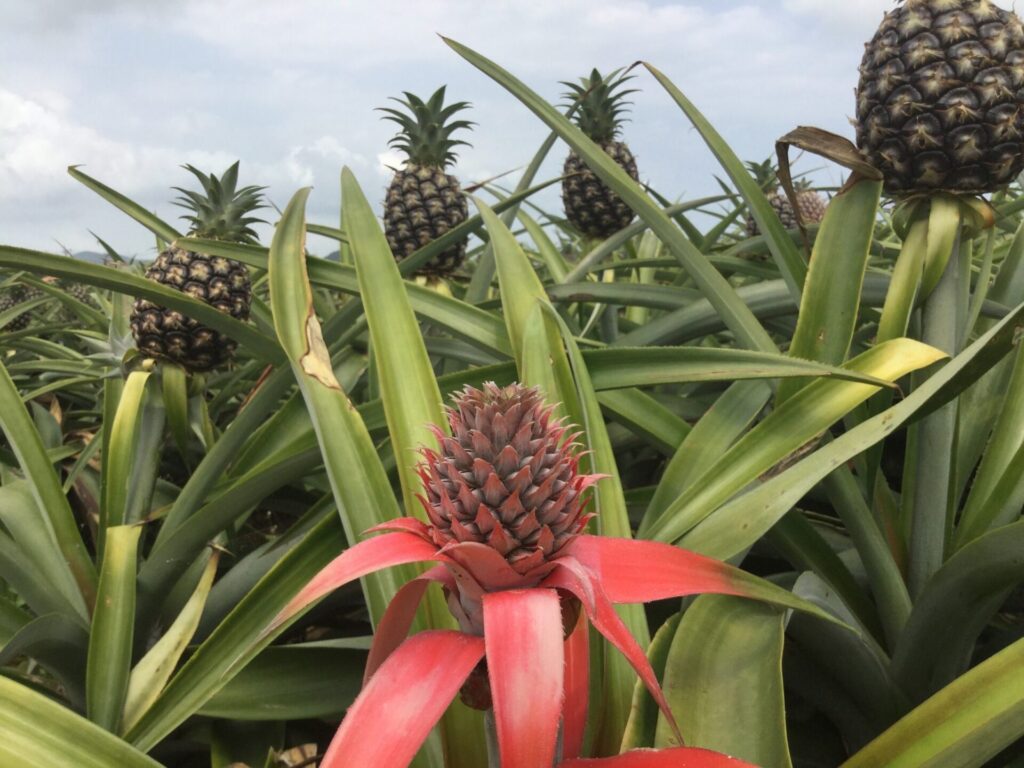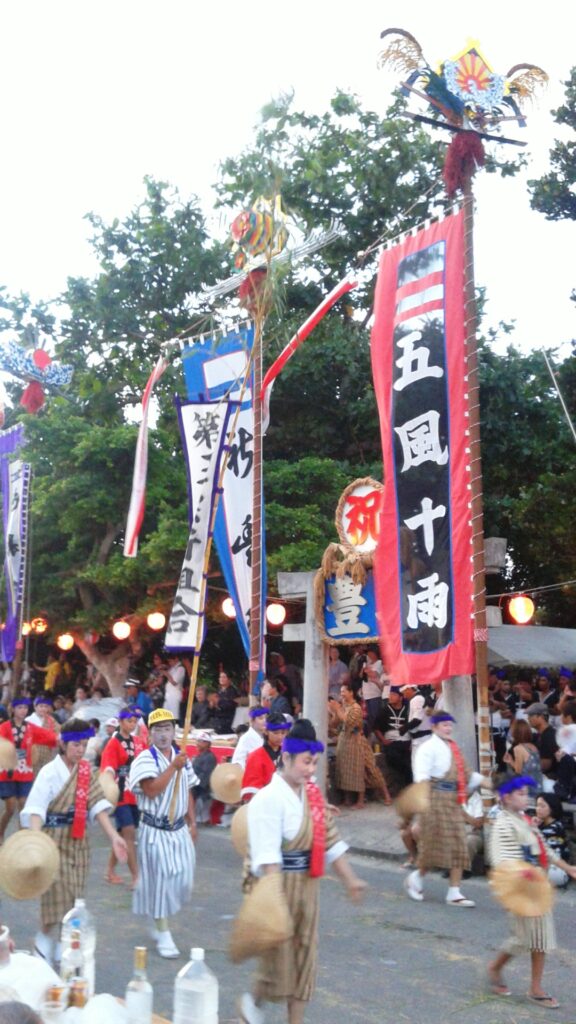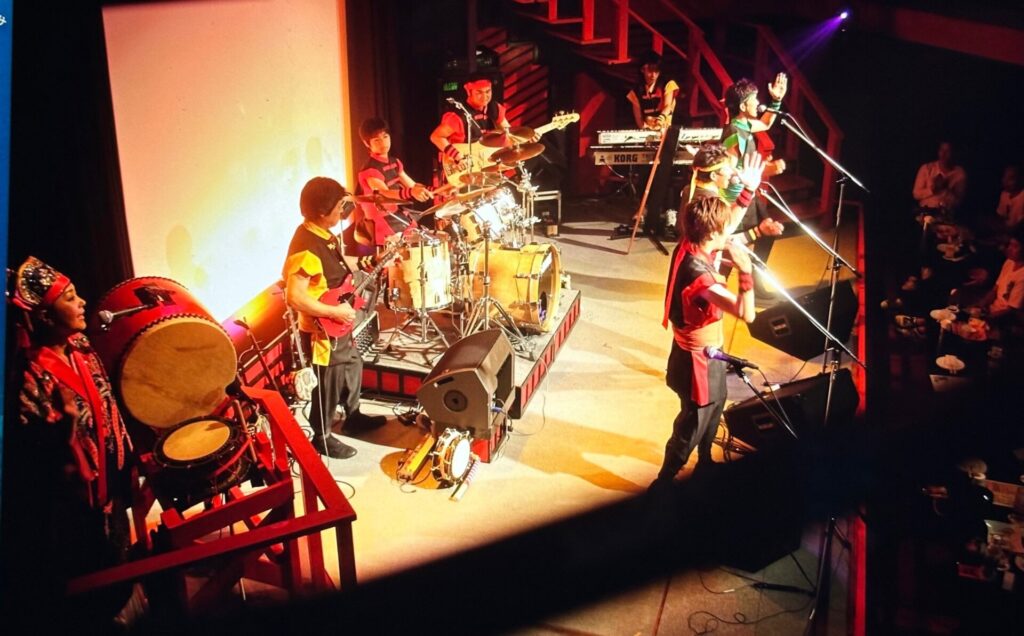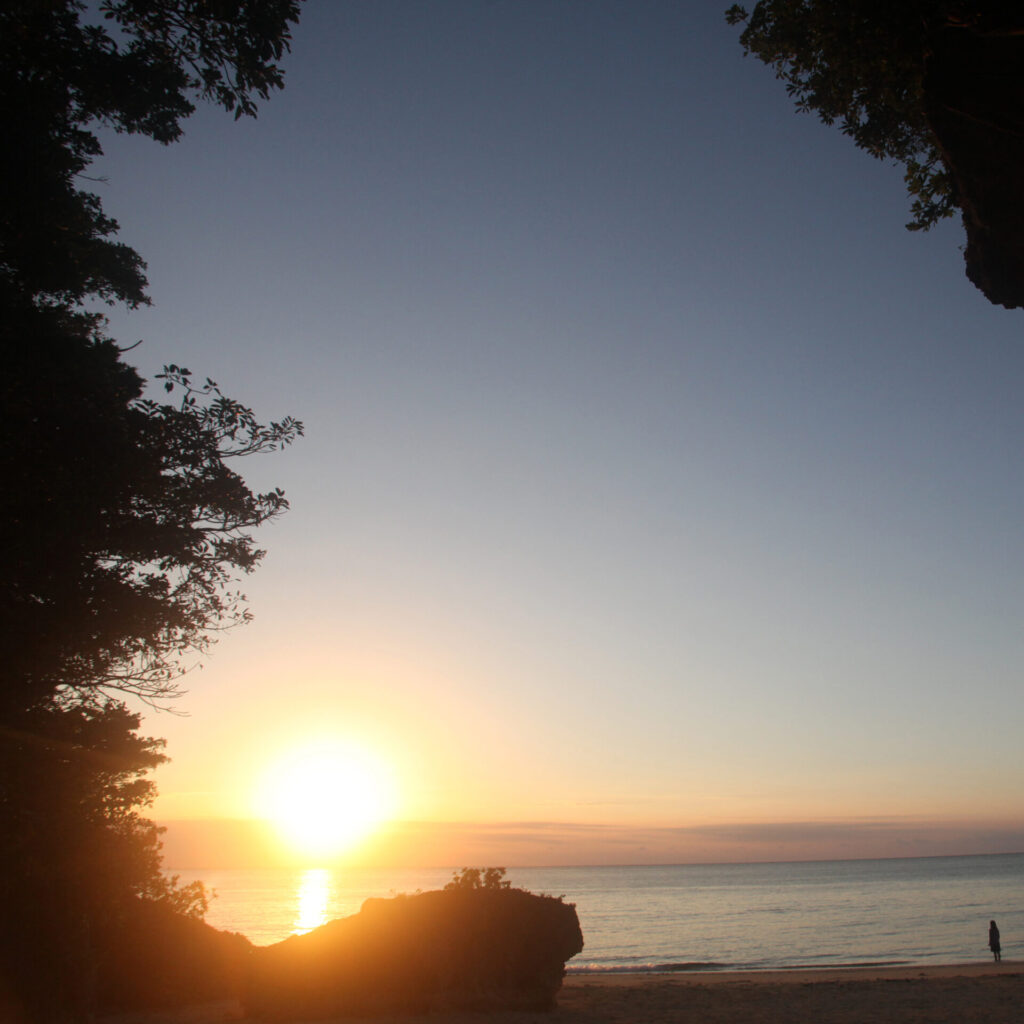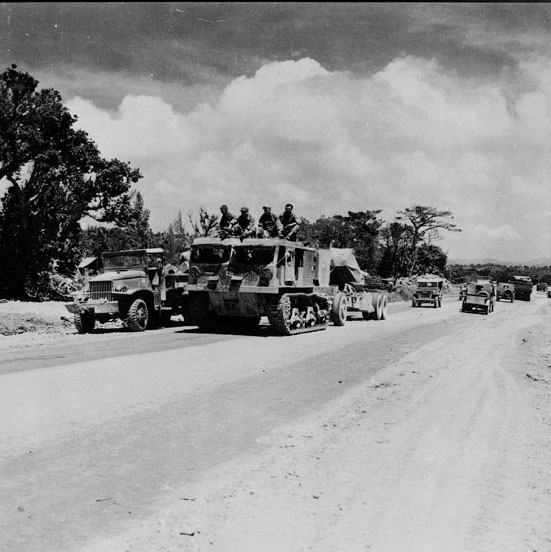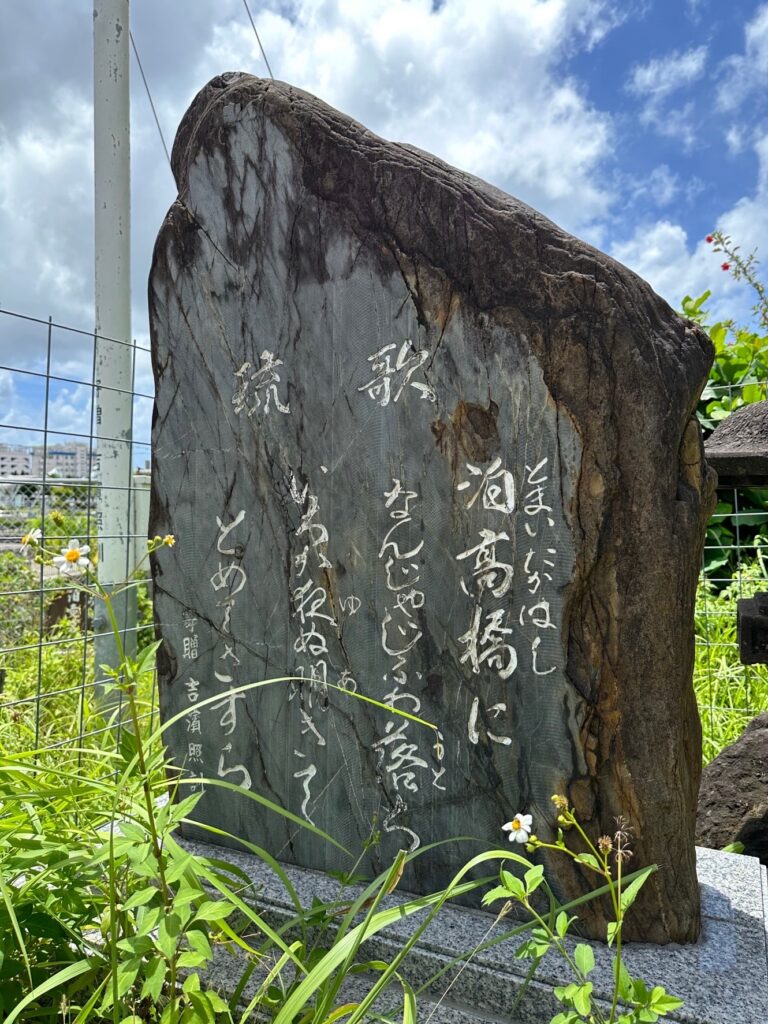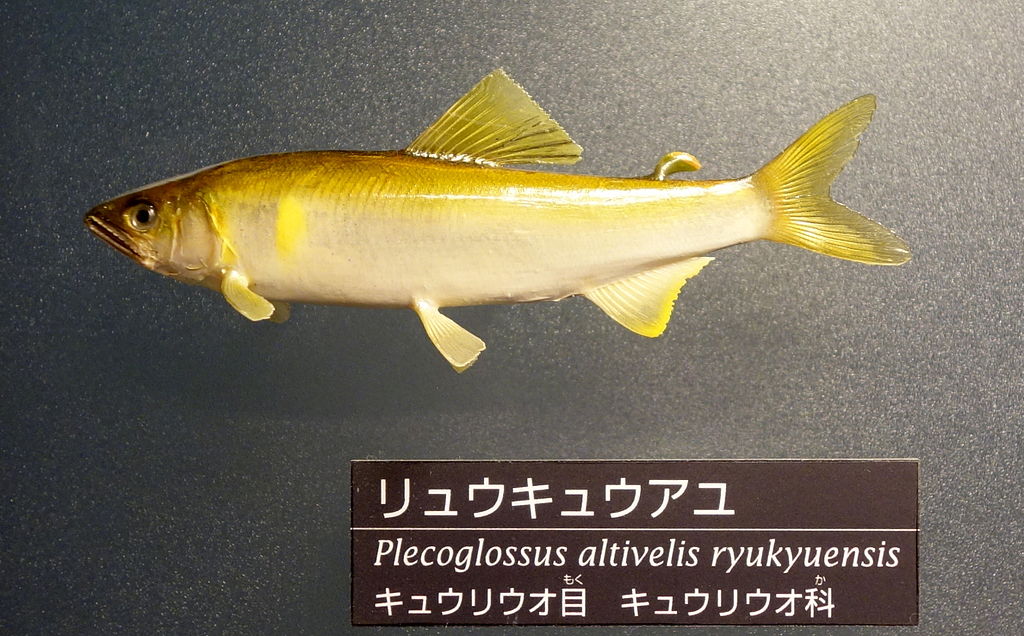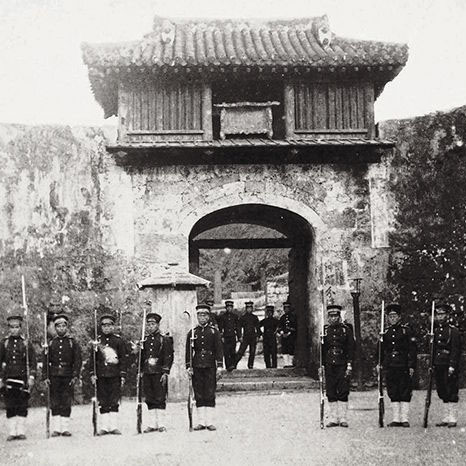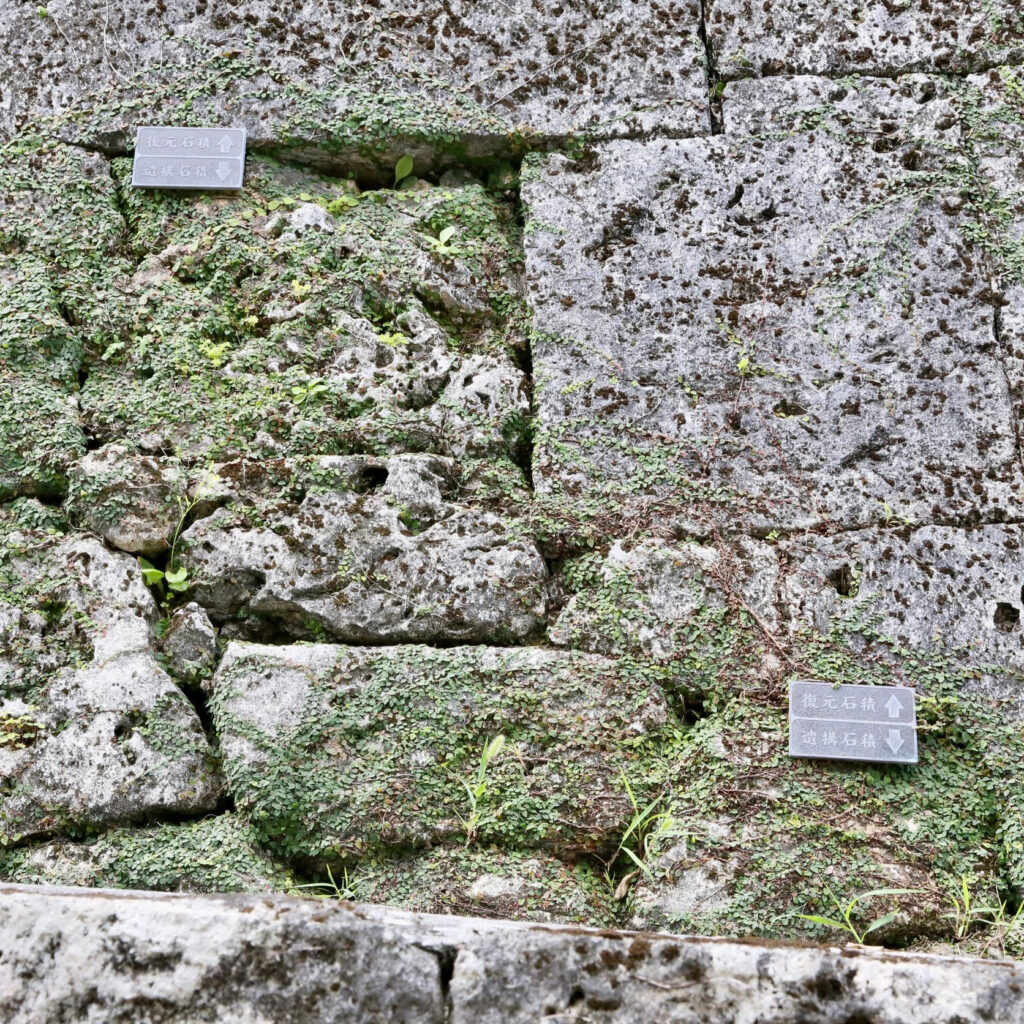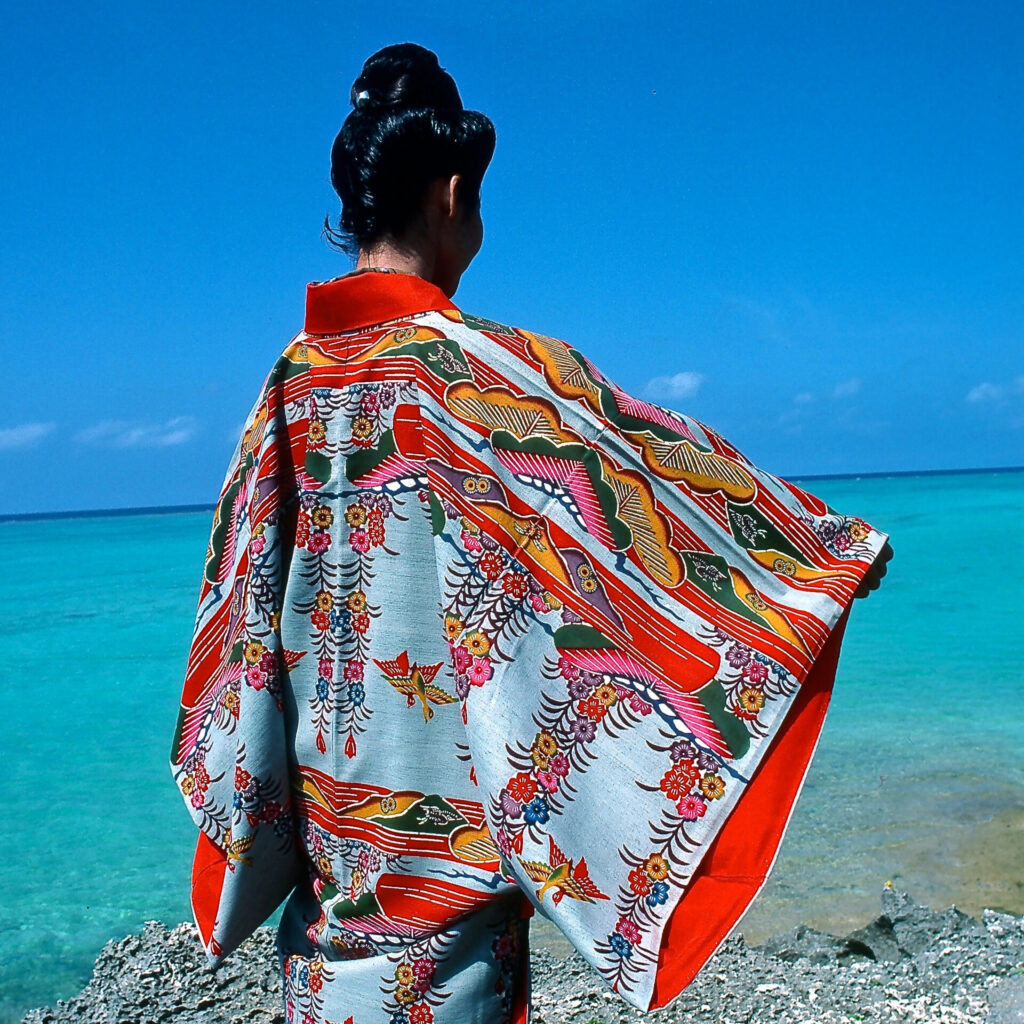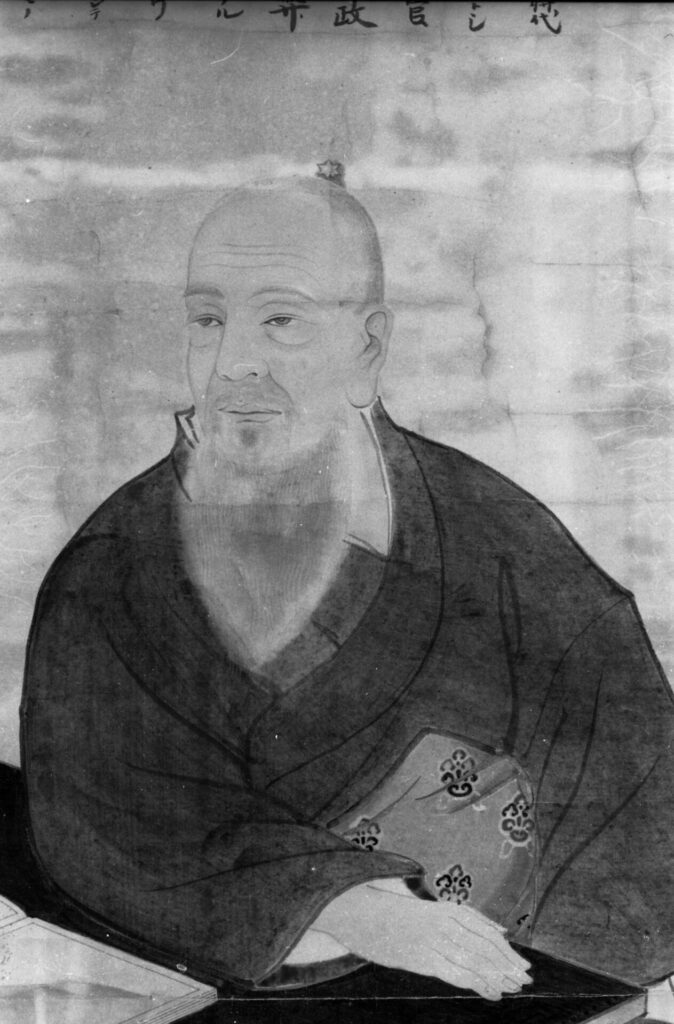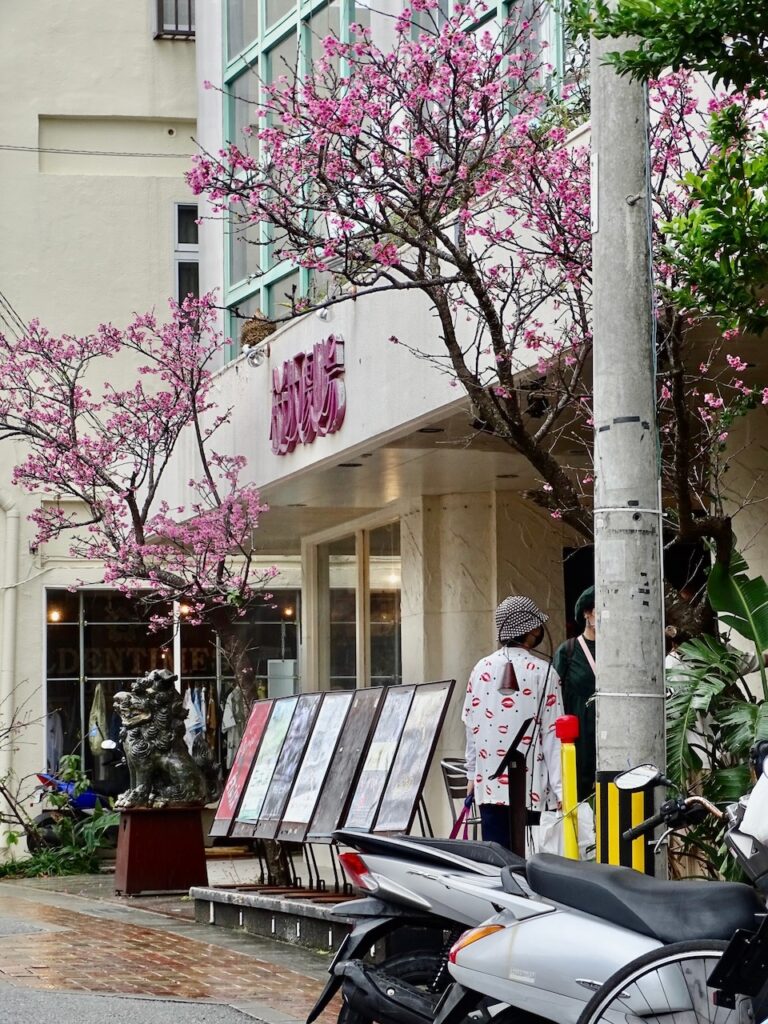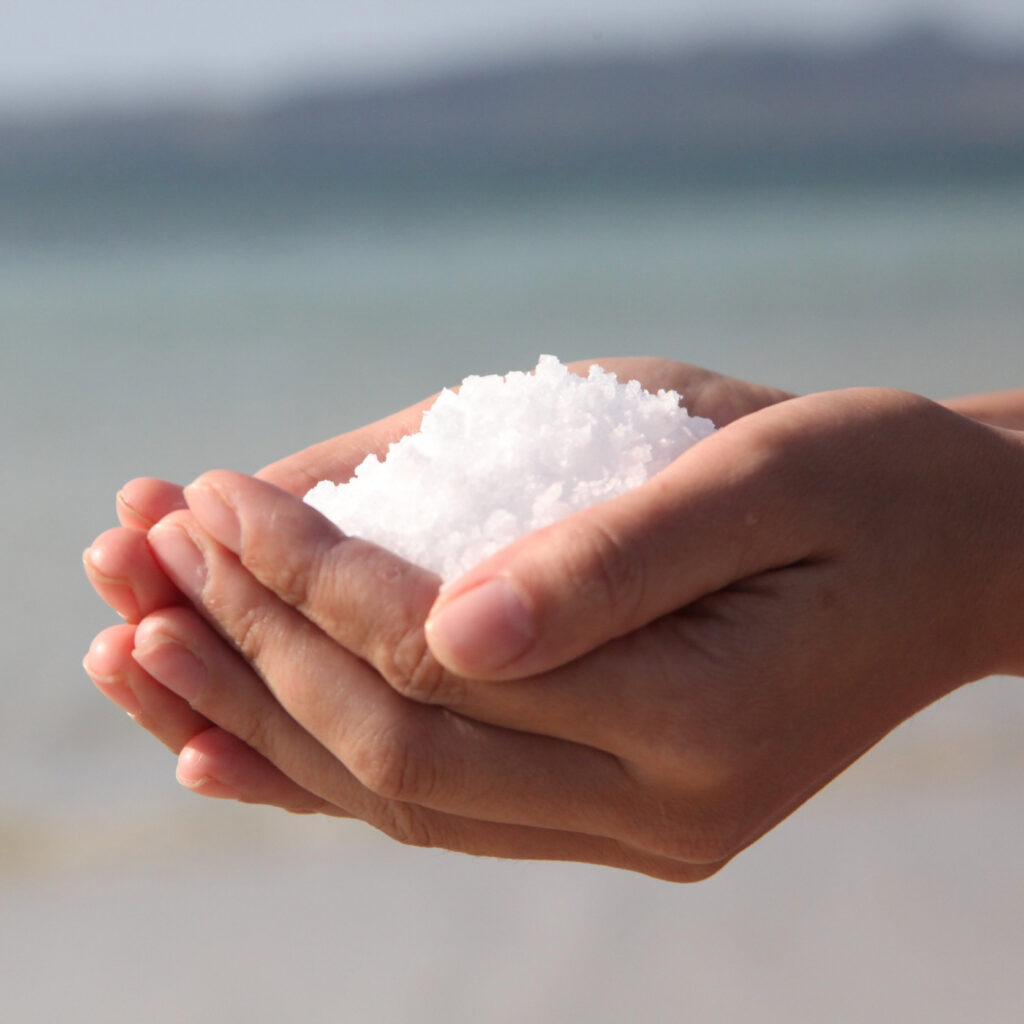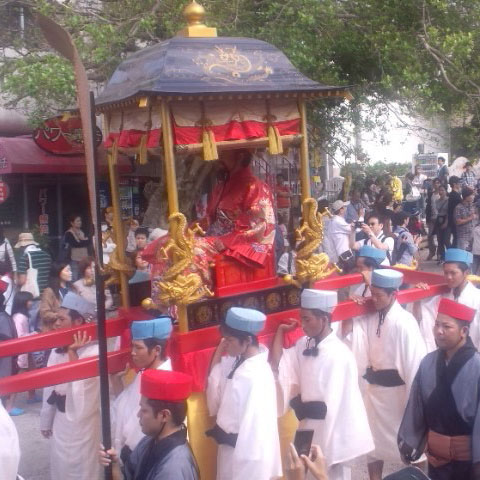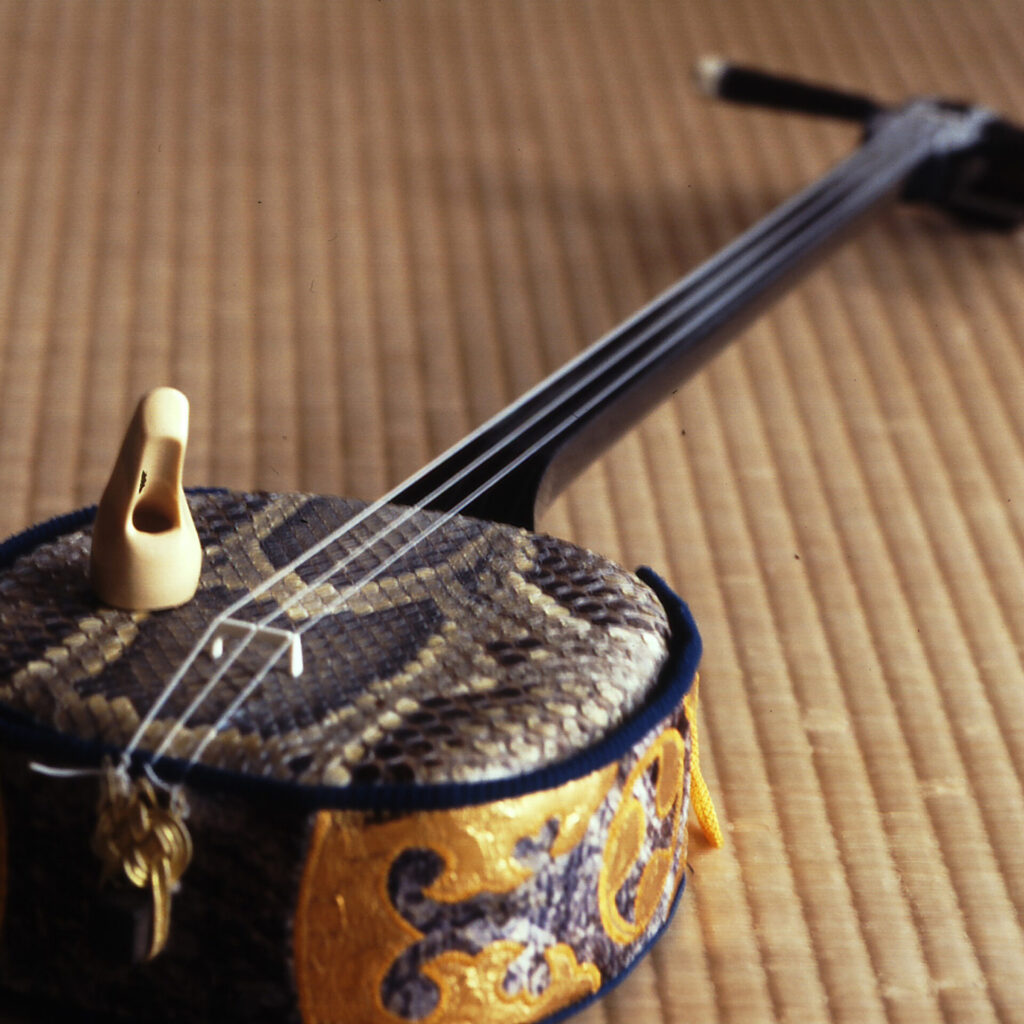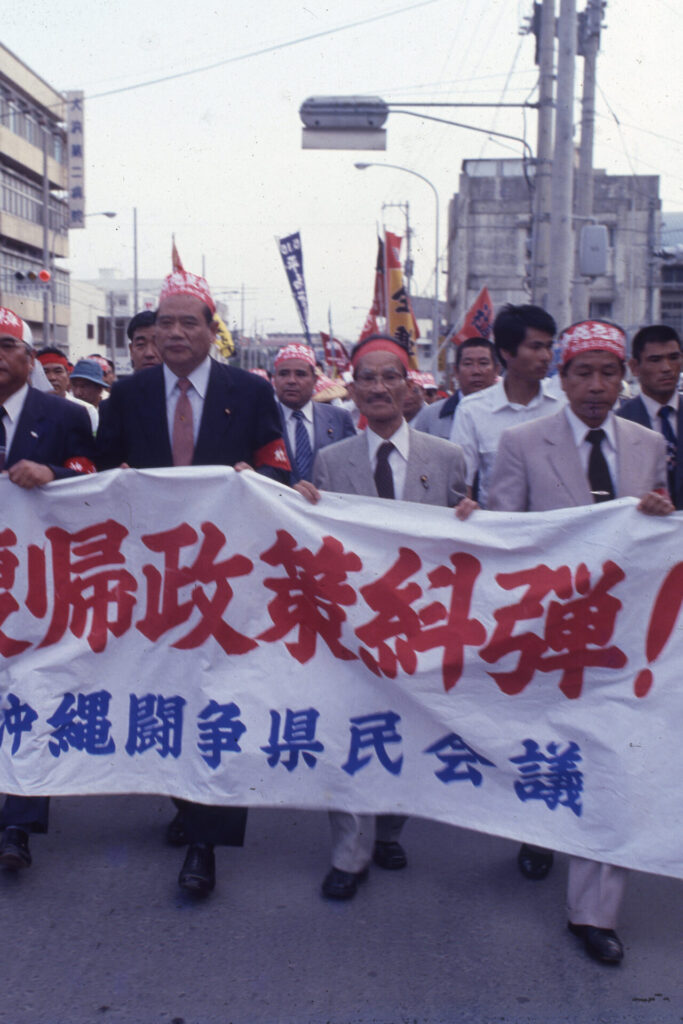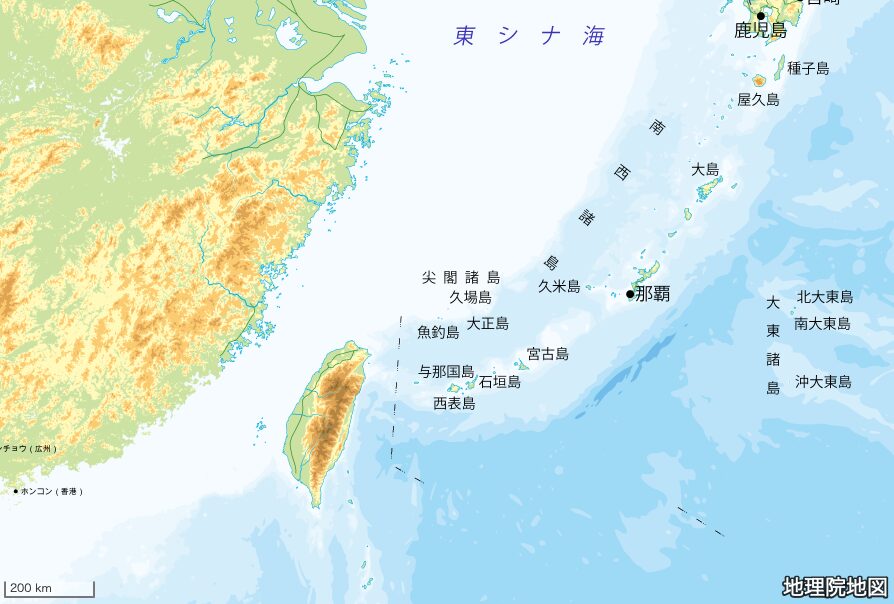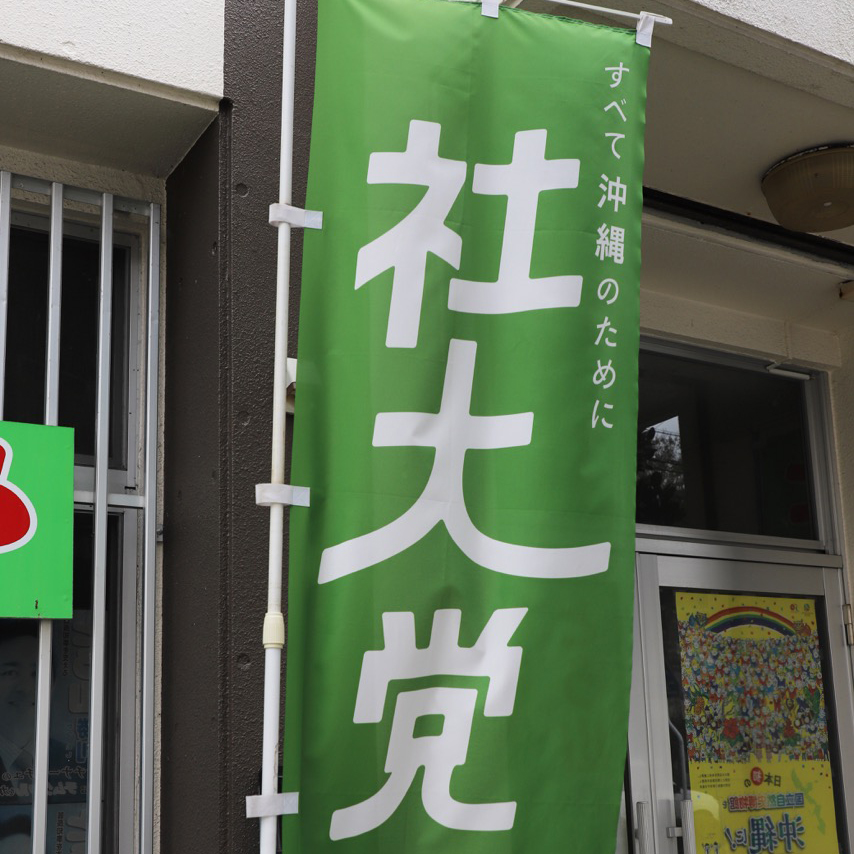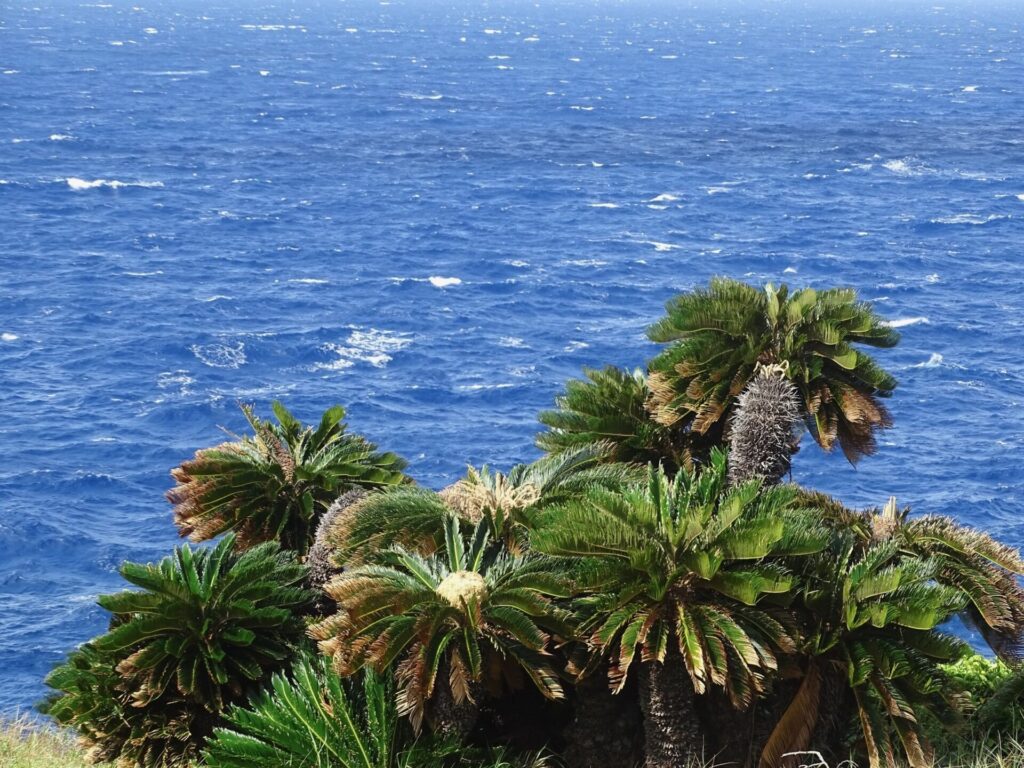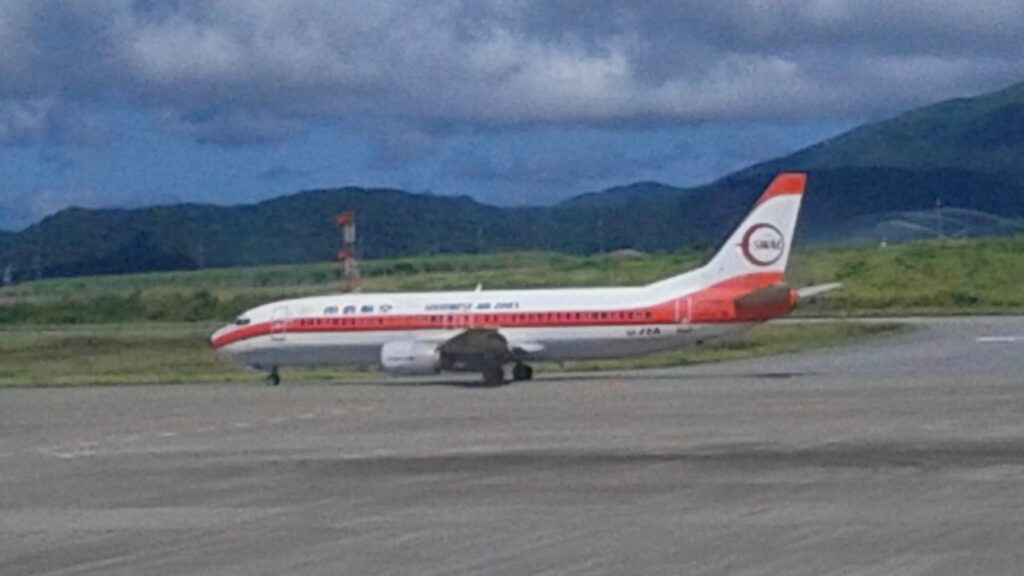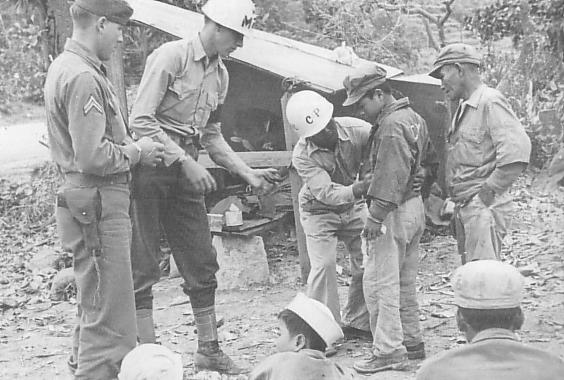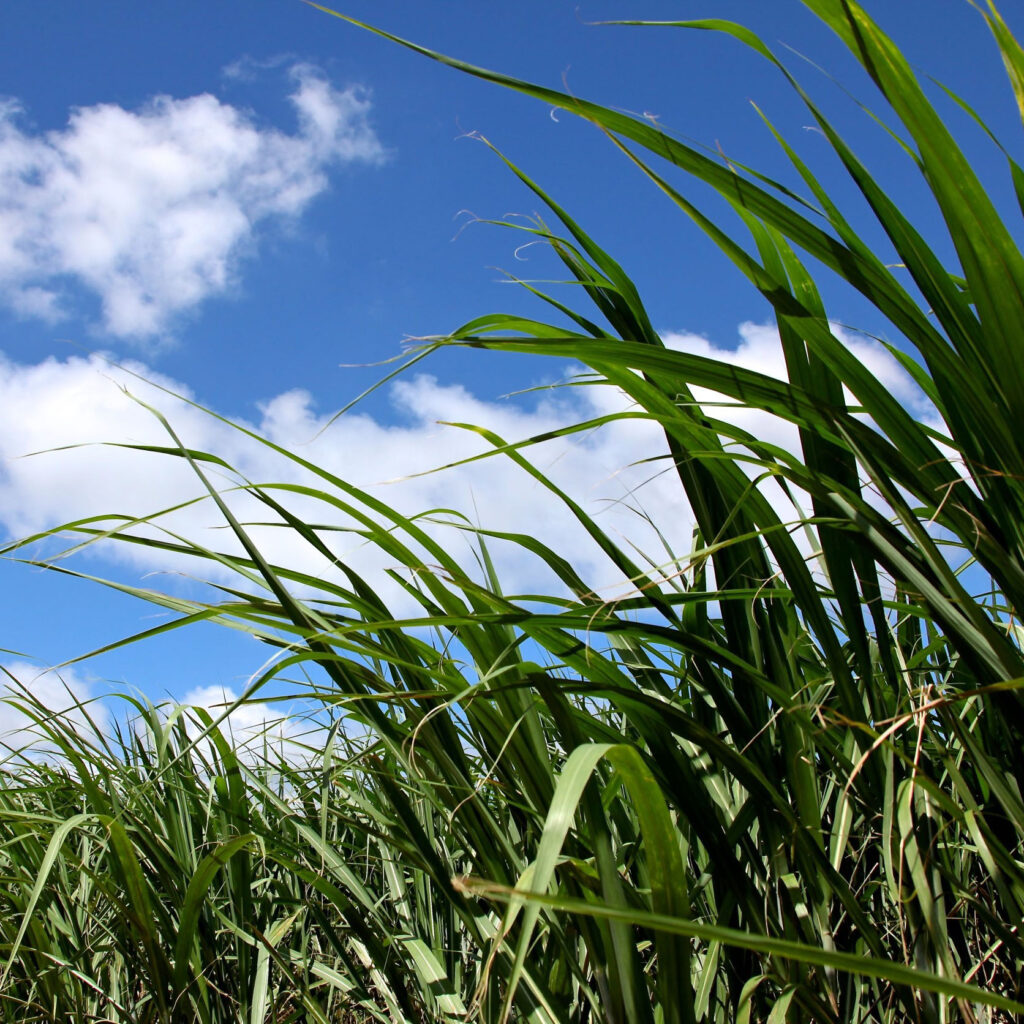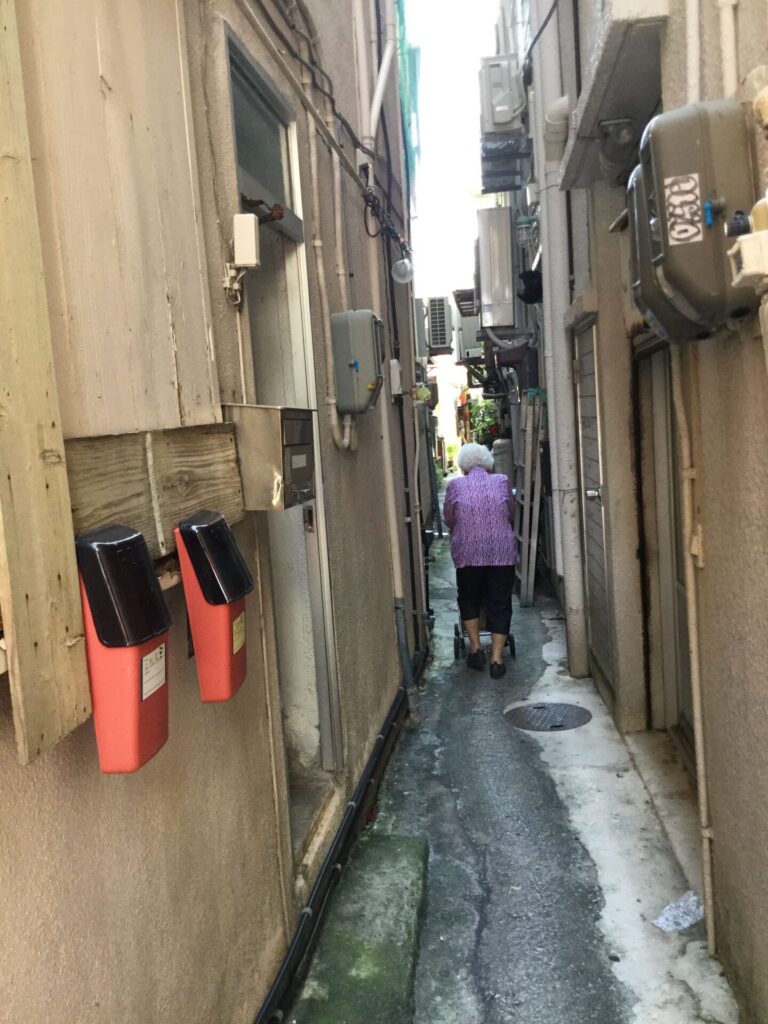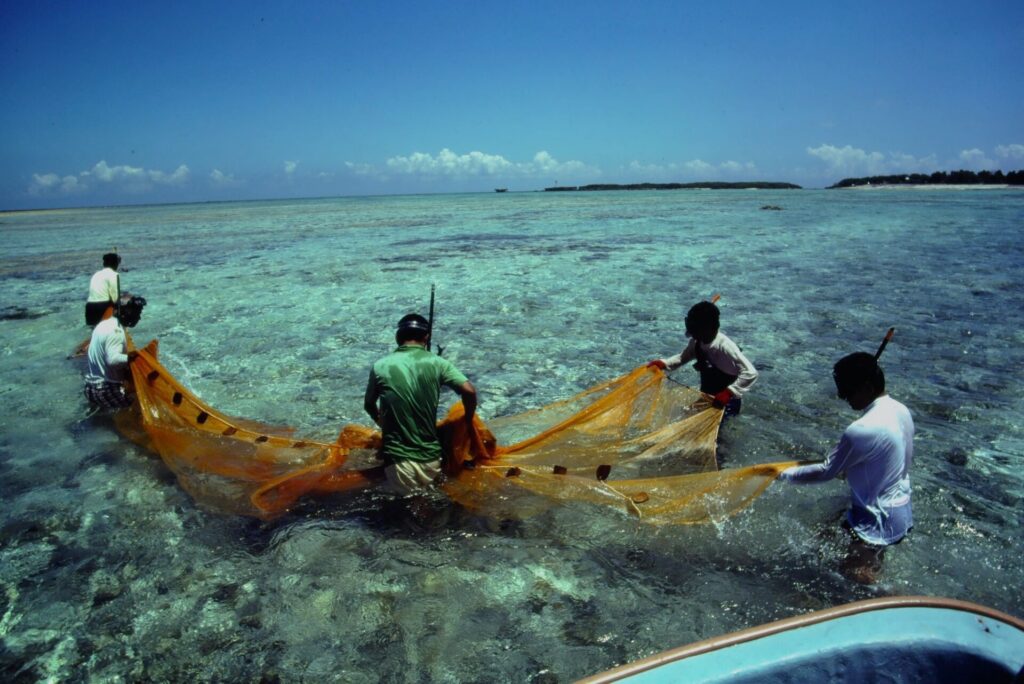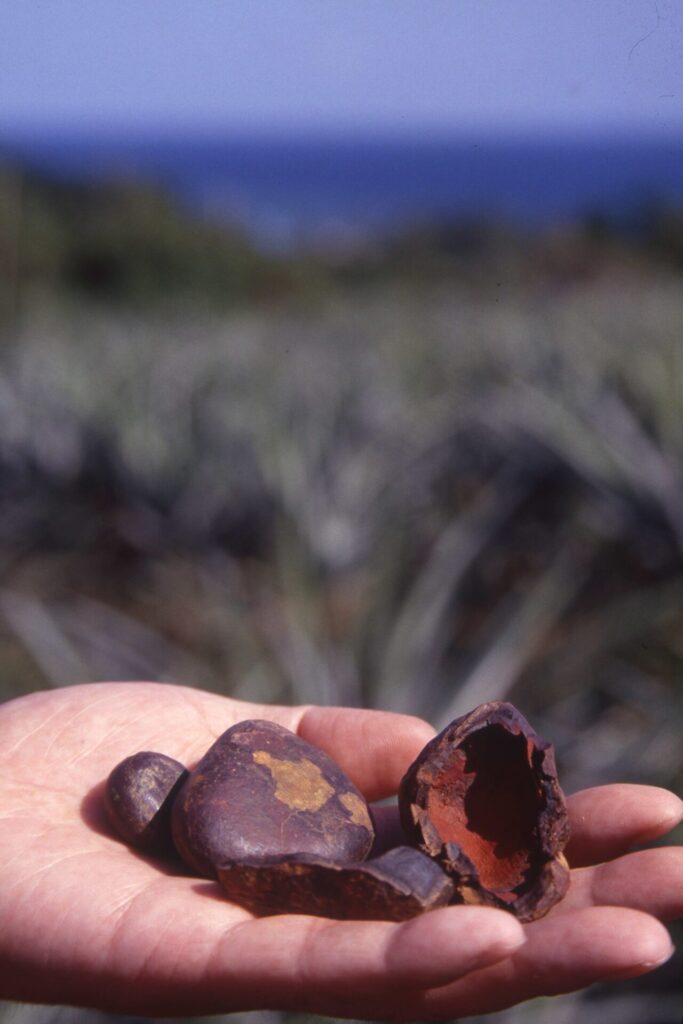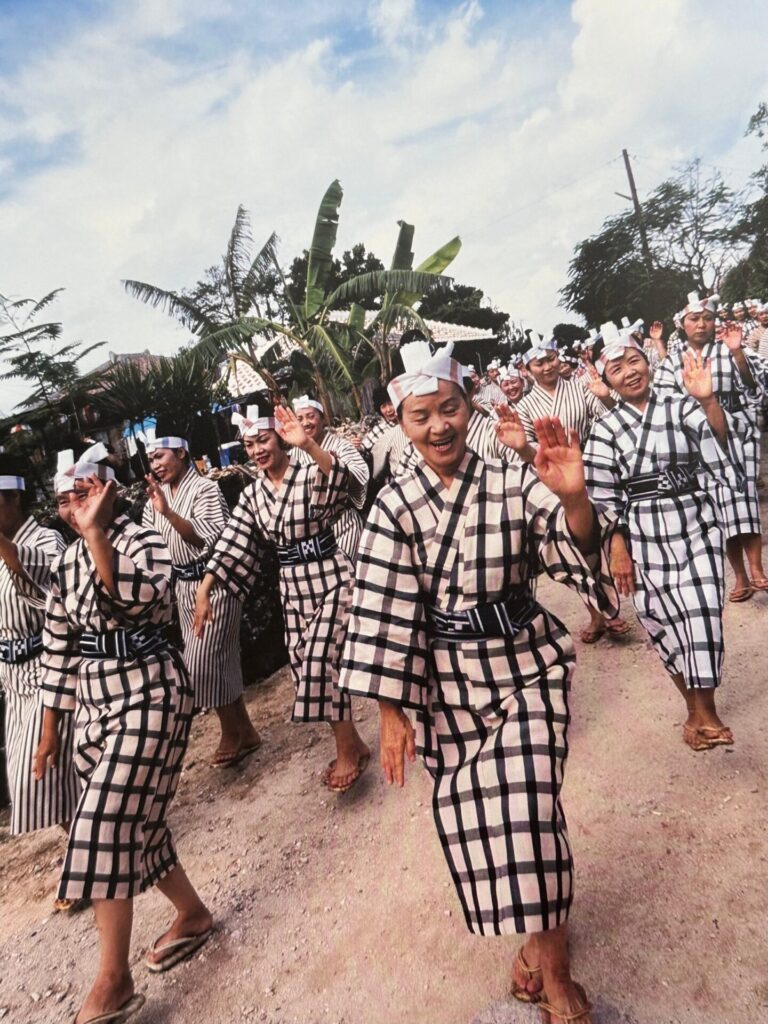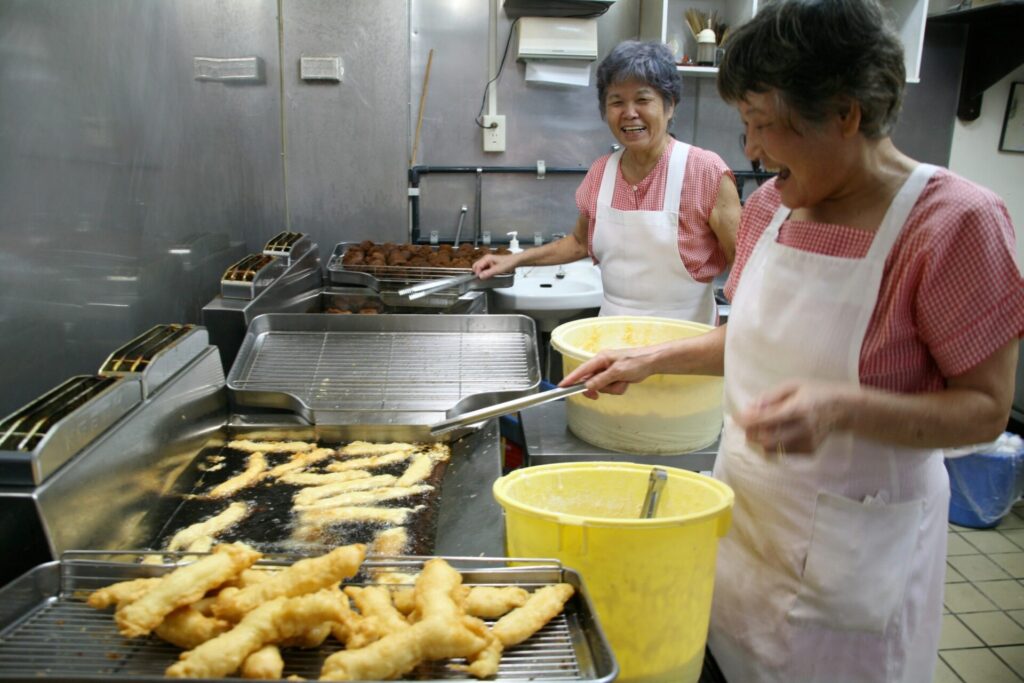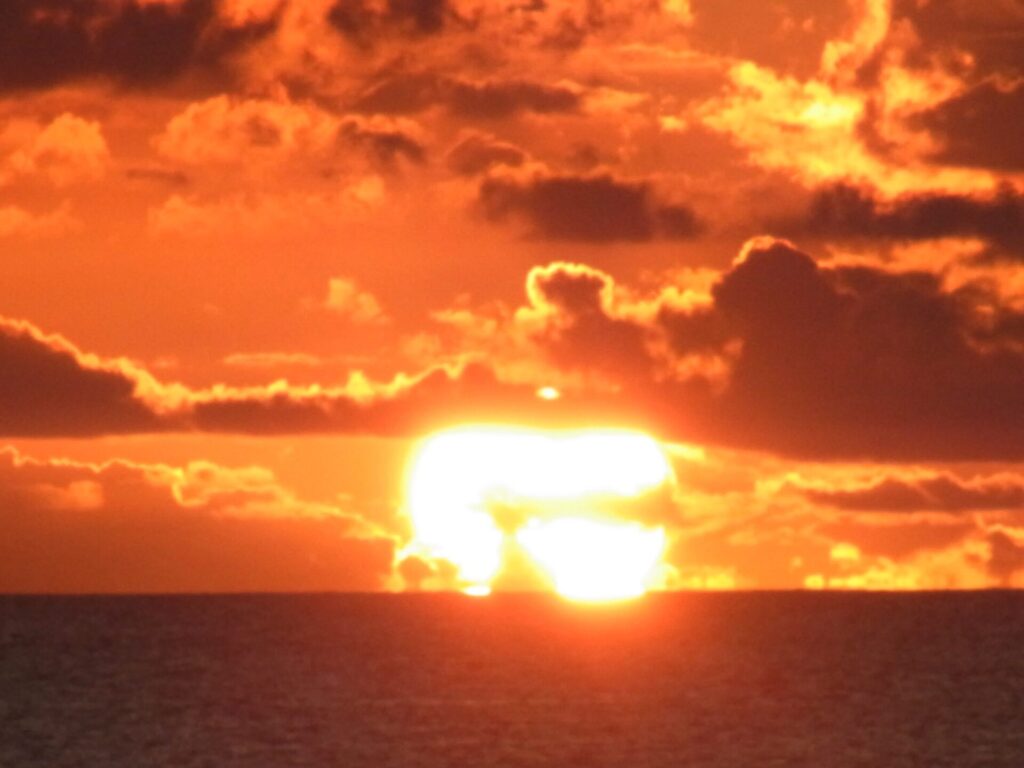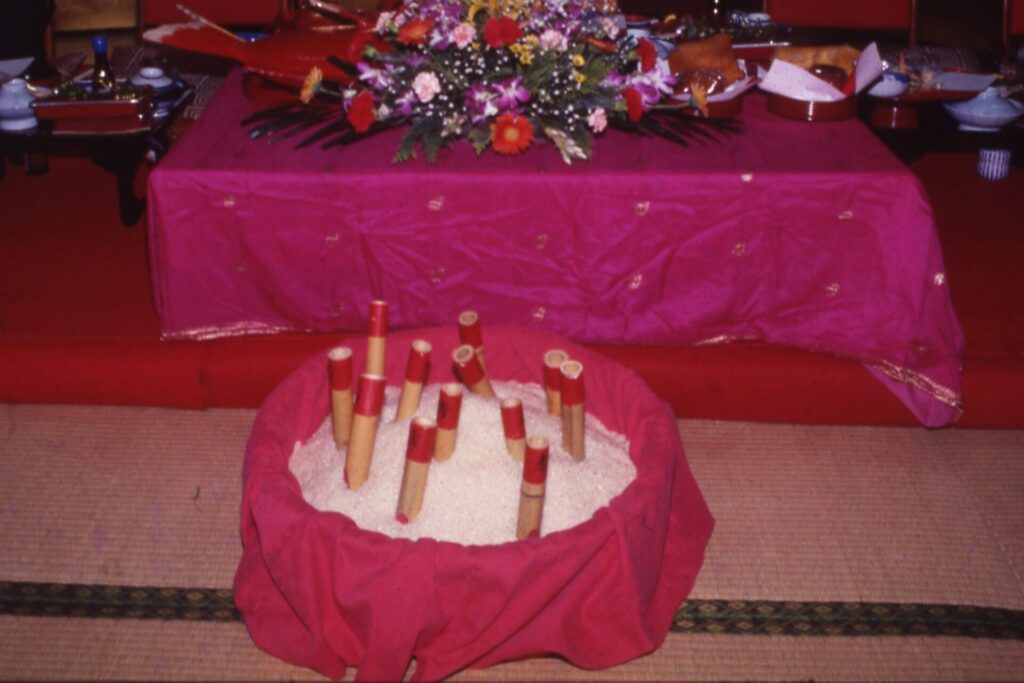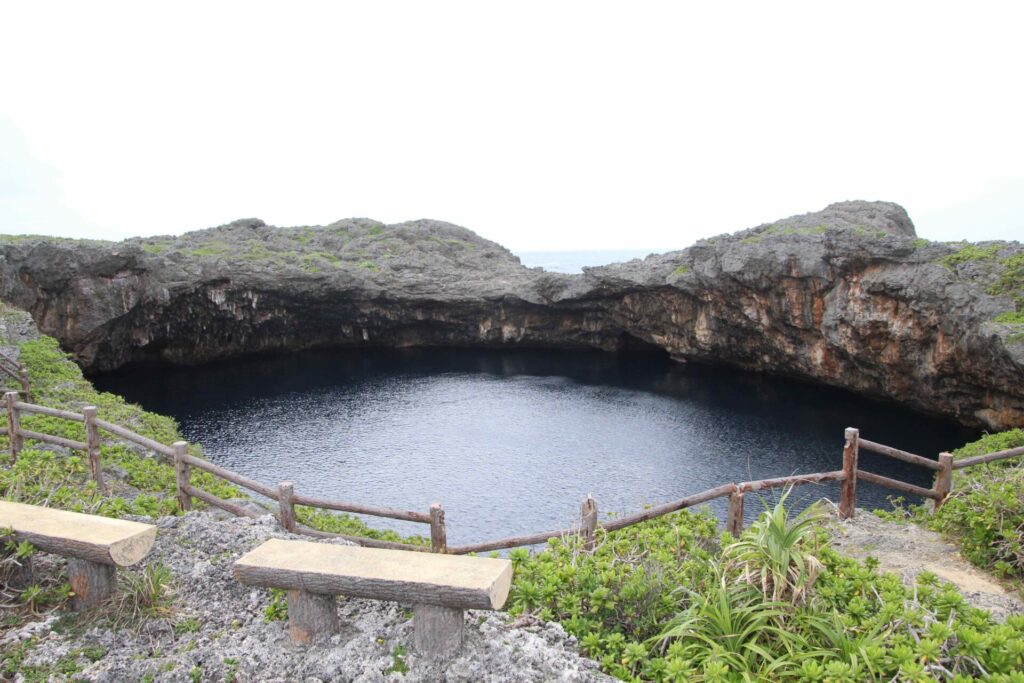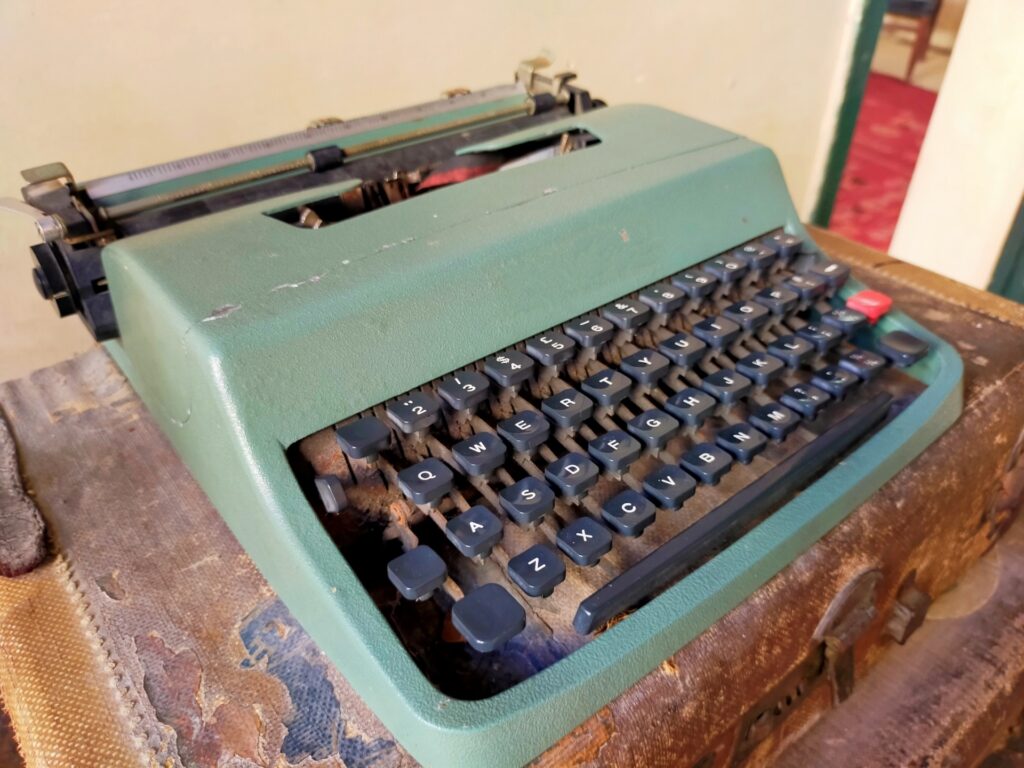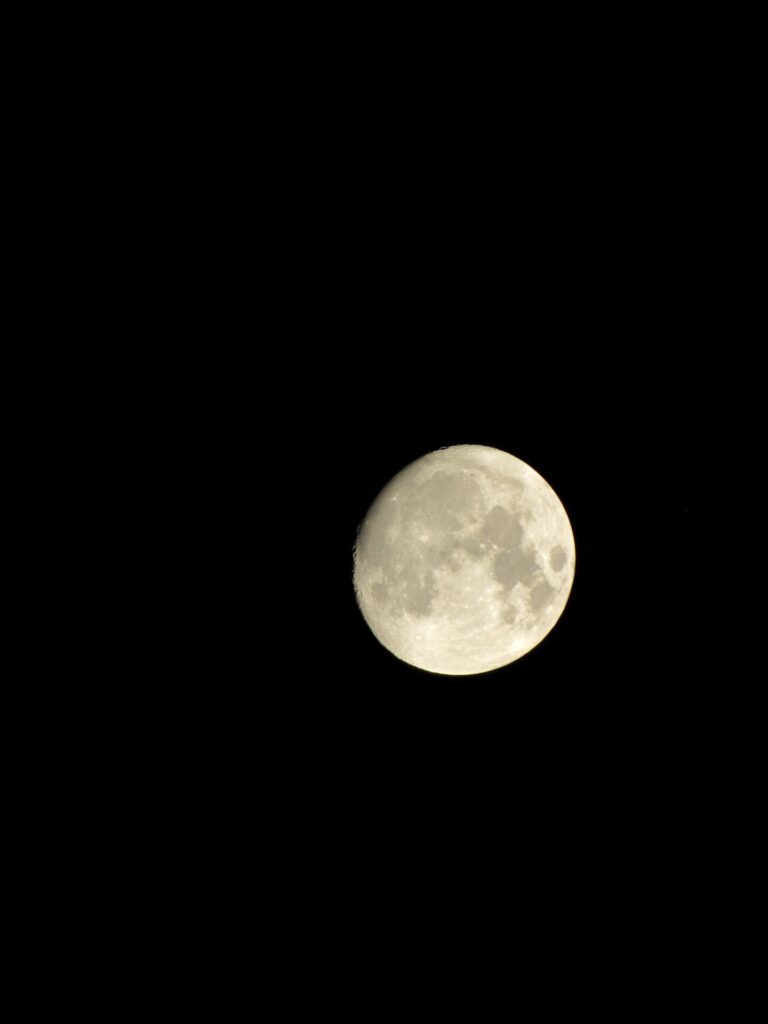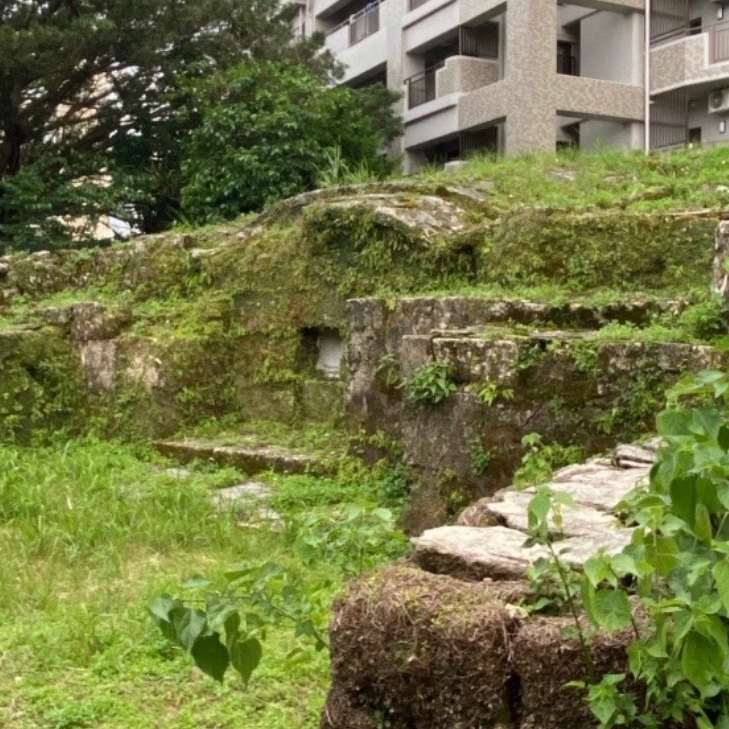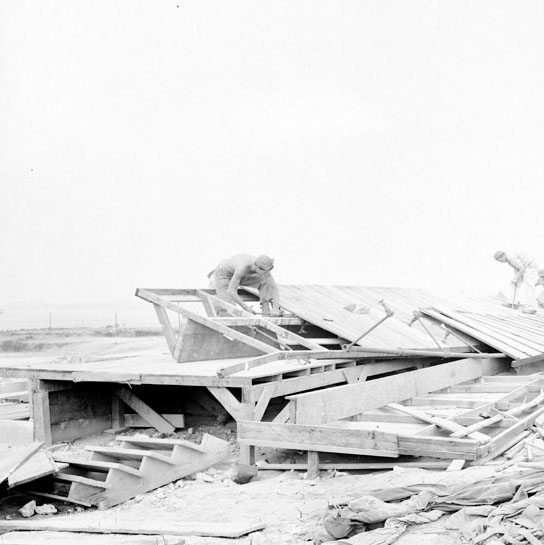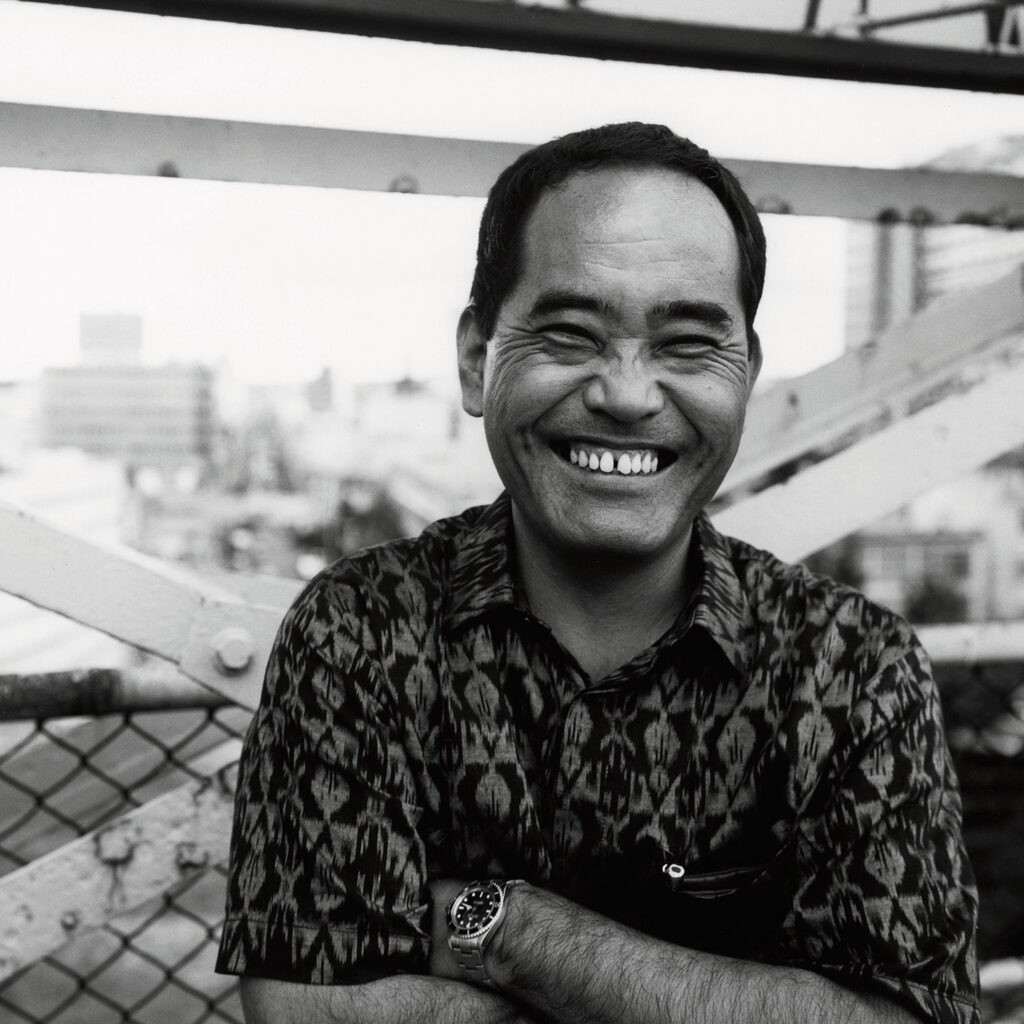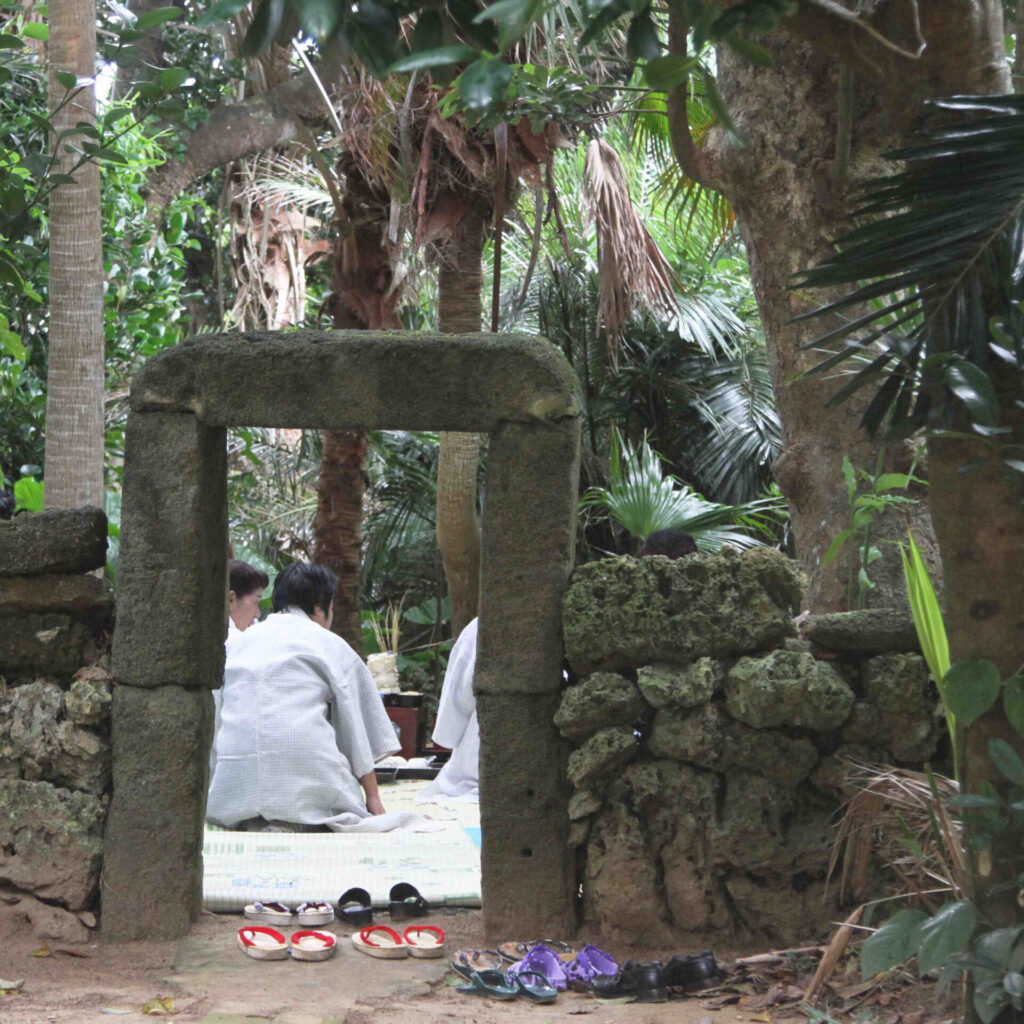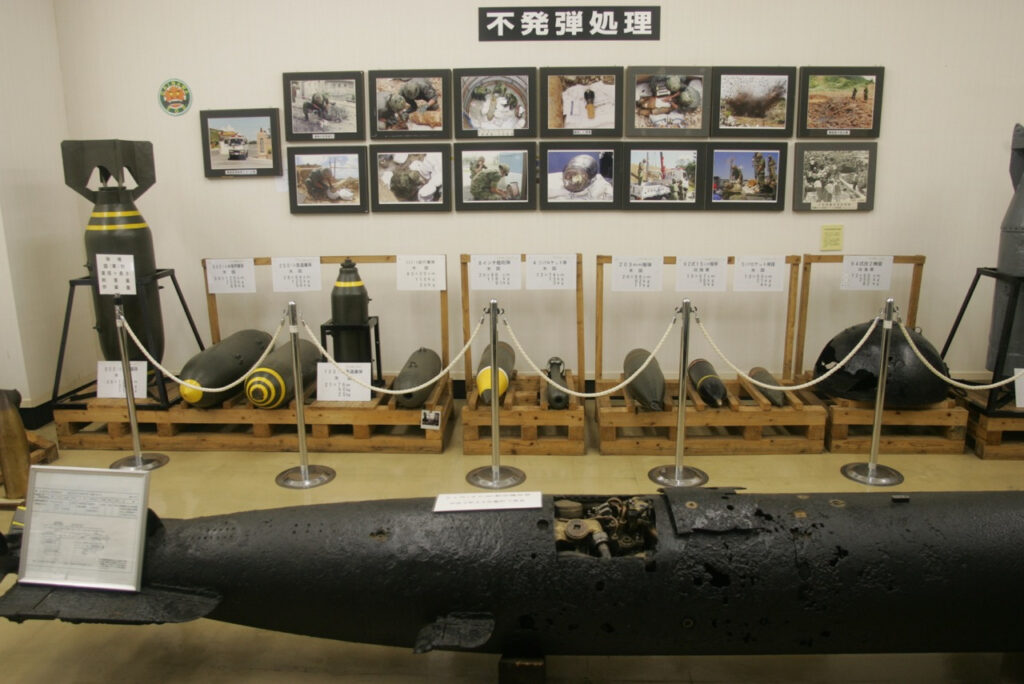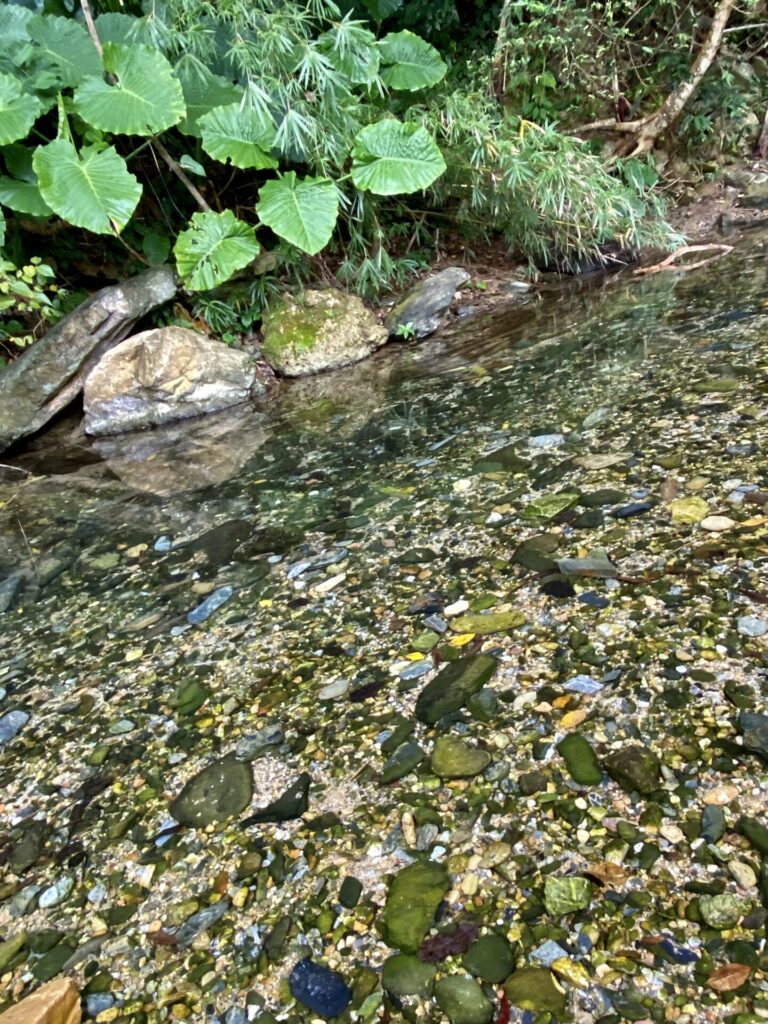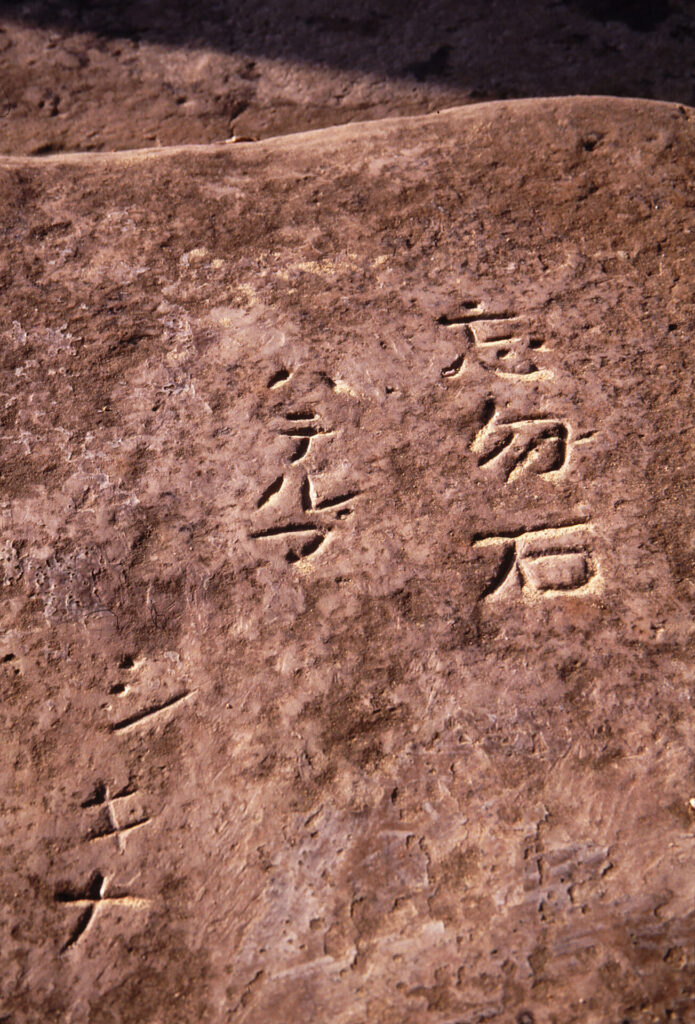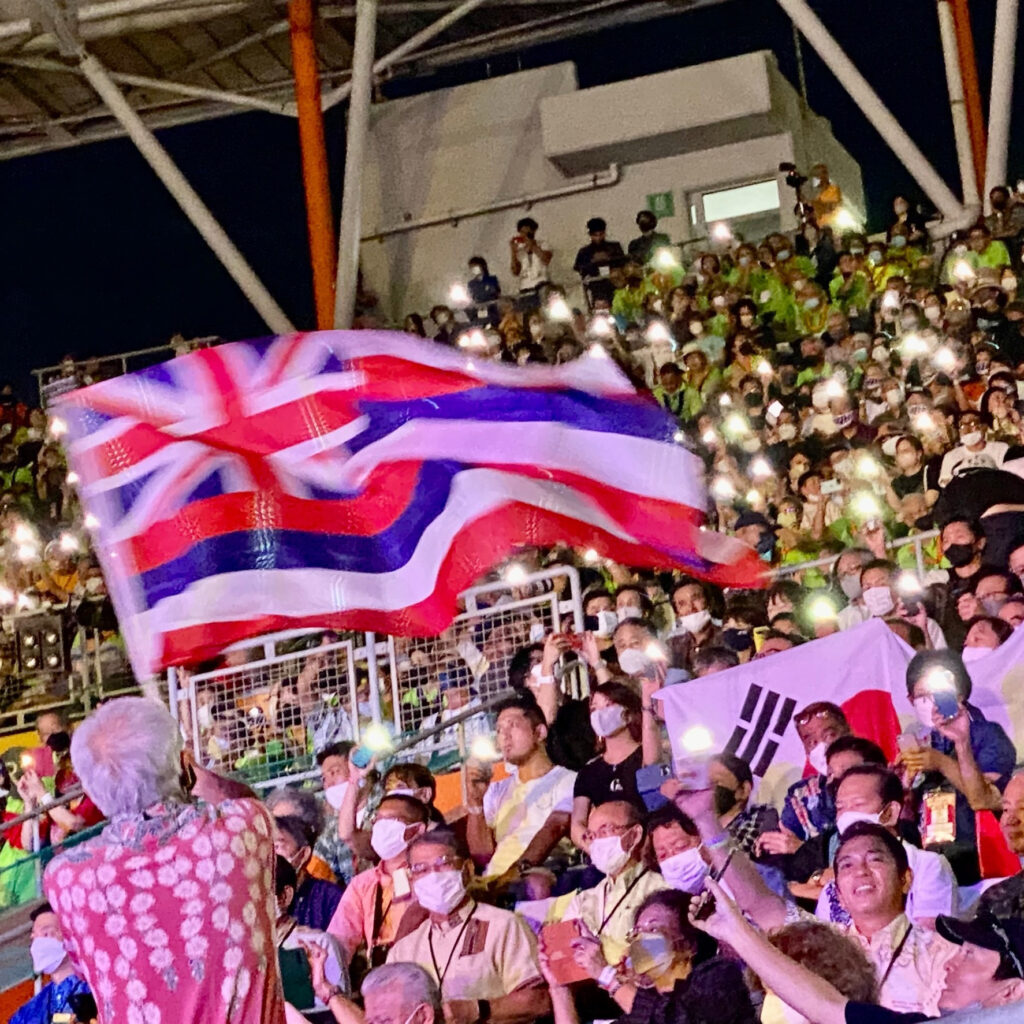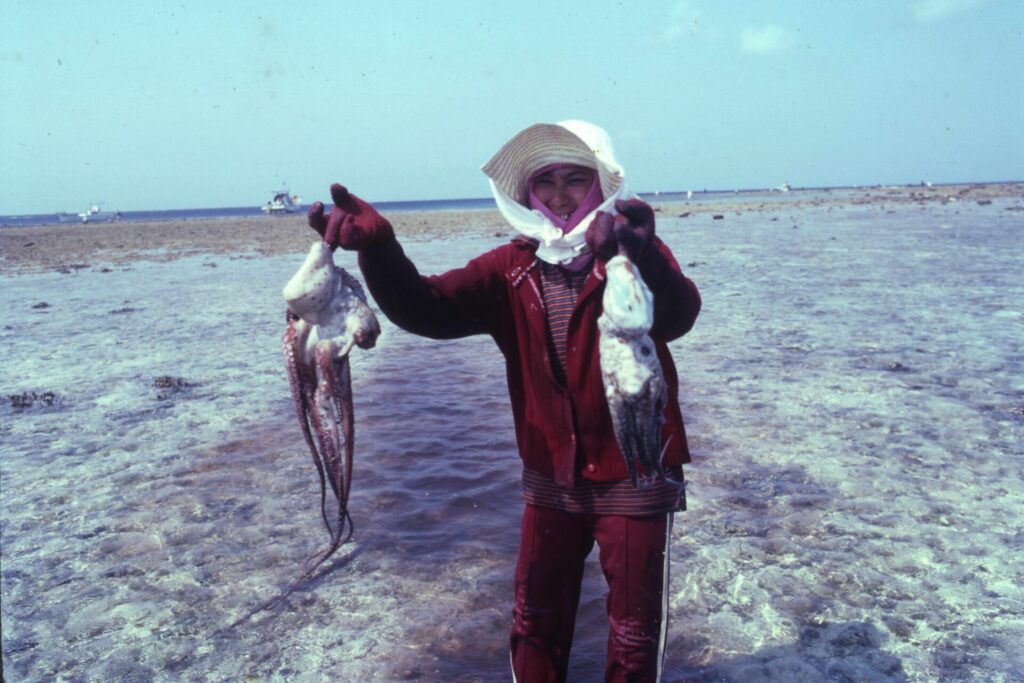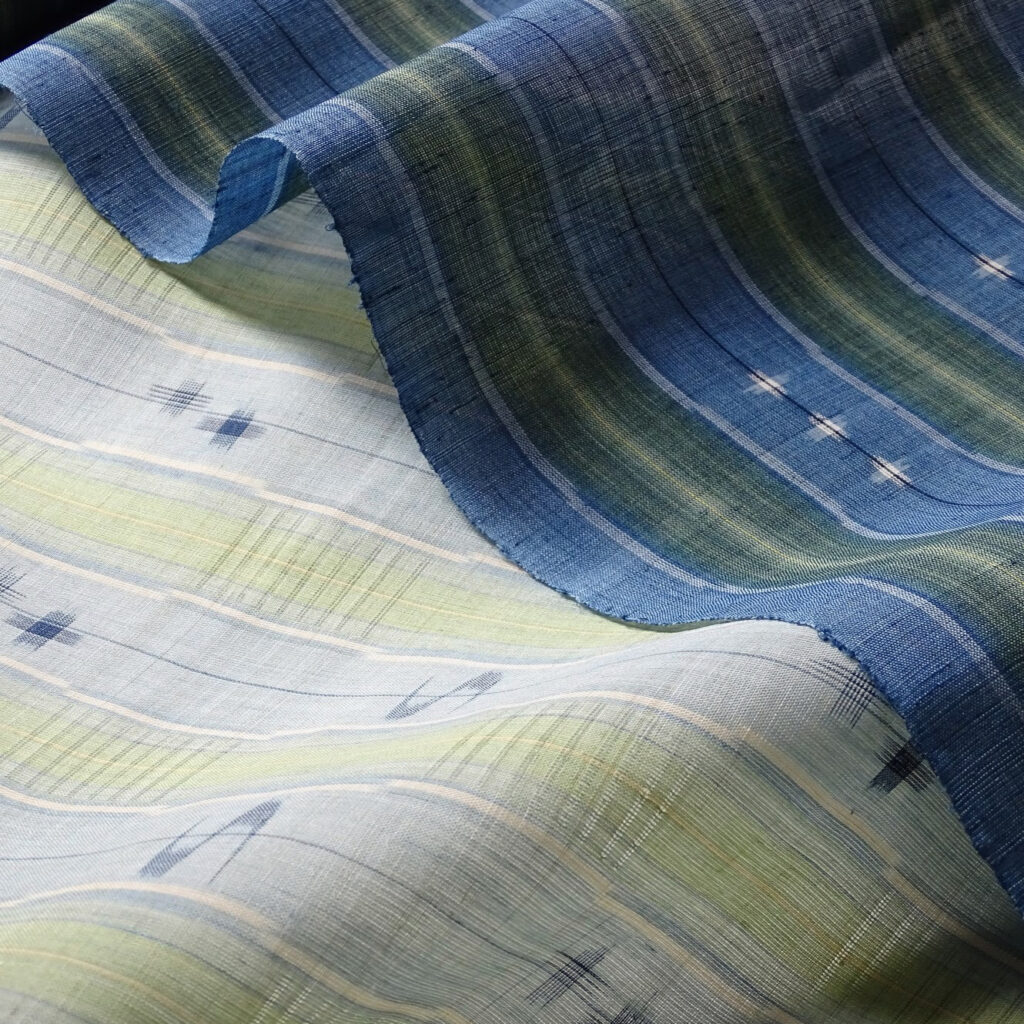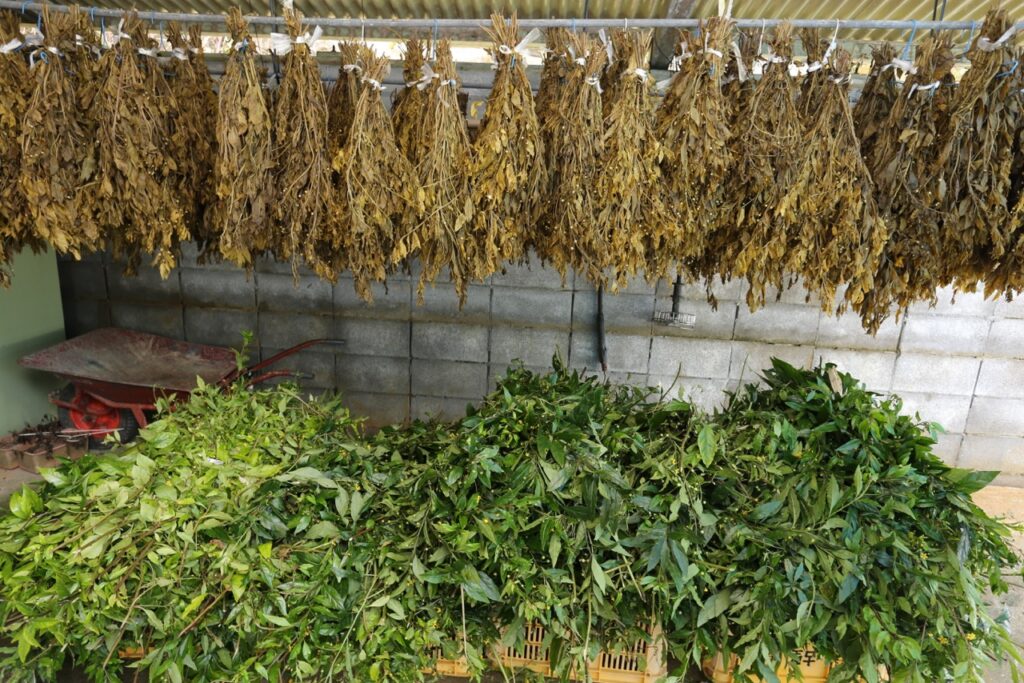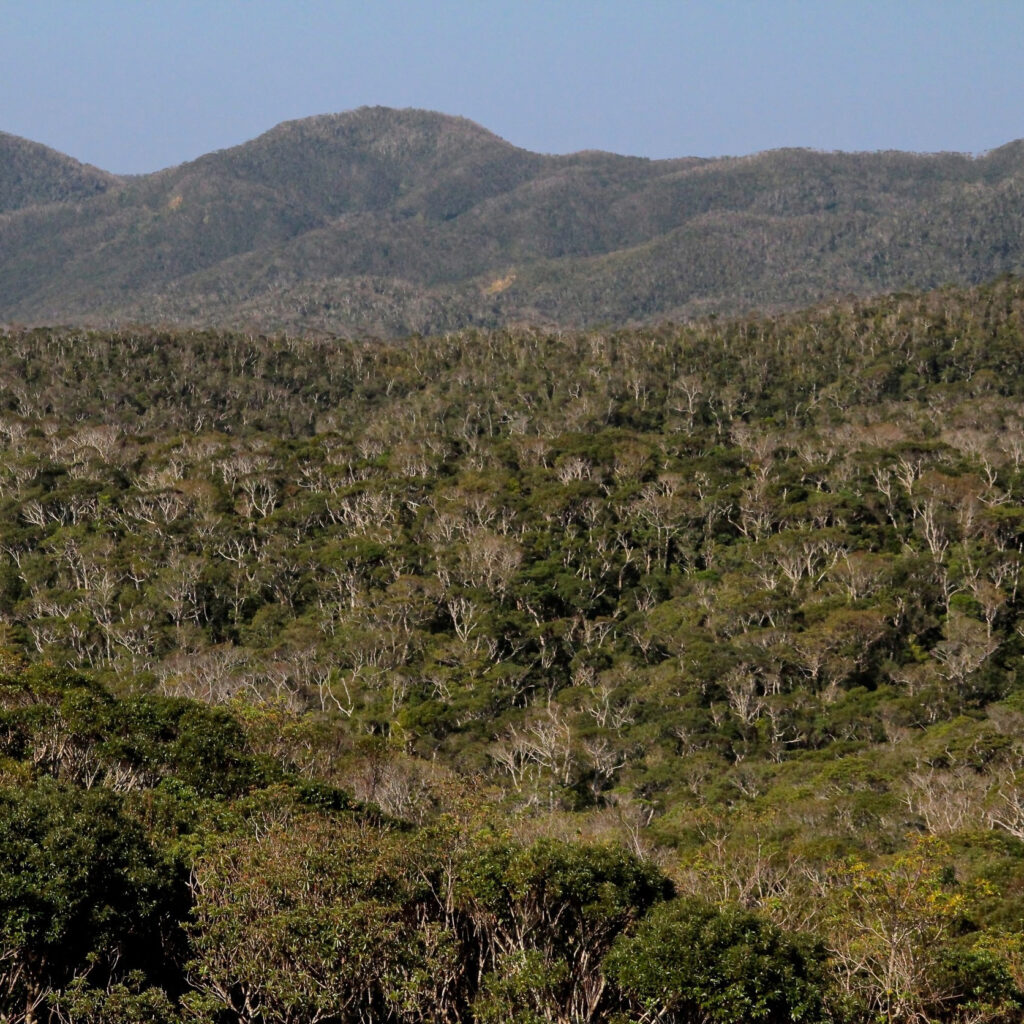Henoko
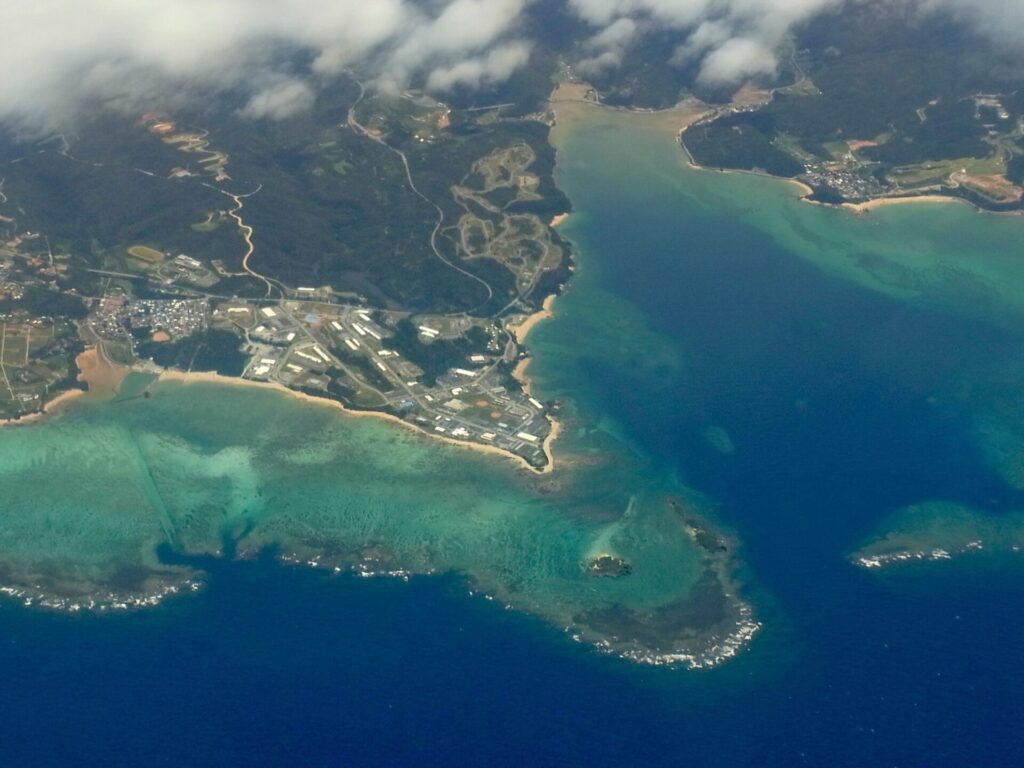
Photo: TARUMI Kengo
It used to be a small village. Heading east across the mountains from central Nago, you’ll find Henoko by the Pacific Ocean. The northeastern side faces Oura Bay and in the east is a harbor by Henoko Bay. The current population is around 1,700 people1.
The village area is about eleven square kilometers, yet the majority is occupied by the American military base, leaving only a small fraction for non-govermental use.
Before the war, people earned a living through small-scale fishing and forestry. There were always fish to be caught, while the mountains provided fuelwood and camphor.
The region didn’t become a battlefield like the southern part of mainland Okinawa, yet in June 1945, just before the Battle of Okinawa ended, the American military came to build the Ourasaki internment camp, where some 25,000 civilians lived in poor conditions and many did not survive.
As the Korean War began in 1950, a firing range was built in the mountains of Henoko and later became the large-scale Marine Corps Camp Schwab. The base was named after an American soldier who died during the Battle of Okinawa.
A red-light district always formed in the area where soldiers resided. During the Vietnam War, Henoko flourished and attracted many, which also triggered lots of problems. After the U.S. retreated from Vietnam in 1973, the town became desolate. Only a small part of the entertainment district remains today.

Photo: TARUMI Kengo
After the violent rape of a young girl by a U.S. military officer in 1995, the entire prefecture got behind the return of lands occupied by American bases, with the U.S. military and the Japanese government agreeing to return Futenma. In January 1997, Henoko became a candidate site for the replacement facility. This may have arisen from them viewing it as a rural area with Camp Schwab by the sea, but why did Henoko have to be the substitute for Futenma?
The people in the village must have thought, why choose our place?
Various construction plans were proposed, including building a floating heliport, yet it was decided to build on reclaimed land. The base’s V-shaped runways would be made by filling in a large portion of Oura Bay with soil.
Over the years, the governor has changed from Ota Masahide to Inamine Keiichi, Nakaima Hirokazu, Onaga Takeshi, and finally Tamaki Denny. The mayor of Nago city, where Henoko is located, has also changed several times. Everyone said different things; the discussion changed direction multiple times, solving nothing. One prime minister said that the replacement base for Henoko must be outside Okinawa, but that voice was quickly drowned out.
At the discussions were Tokyo, Washington, Naha and sometimes Nago, but the voices of Henoko were never tabled. Back in December 1997, a local referendum was held in Nago, resulting in 16,639 opposition votes and 14,268 affirmative votes, yet the Nago mayor Higa Tetsuya ignored the result, resigning after declaring that the city would accept the new base. In 2013, Governor Nakaima declared that the prefecture would accept the new base.
All this time, no referendum was held in Henoko. But would it have changed anything, when even the Prefecture’s referendum was ignored?
The Henoko area already has Camp Schwab. Around the base, there are always crimes and pollution. New problems arise on a daily basis, even today. And now there will be a large marine base offshore.
Researchers say that there are many living things unique to the area. There are no lagoons surrounded by barrier reefs, meaning that the bay is open to the Pacific Ocean. The seabed has coral reefs and seaweed forests, home to dugongs and a large population of blue corals. Thirty-six new species of crustacea were also found. It is a rich sea, a place where countless fish congregate.
Despite this, construction work has begun and hundreds of dump trucks bring in dirt on a daily basis.
Will it be possible for them to reclaim the sea for the base? Henoko Bay is shallow, yet it grows deeper near Oura Bay. Will it be possible to reclaim such deep waters? It was also discovered that the seabed is not firm rock, but a soft ooze. Yet despite this, they have just continued to dump dirt into the water. It is like a nightmare. Contrary to their initial plans, the date for completion continues to be postponed. It is now estimated to be 2037 at the earliest.
The chaos will continue for decades.
There are residents who say that they no longer need a base.
Just then, some began saying it will bring in more money.
The former Chief Cabinet Secretary Suga once said that they wished to send the money to Henoko directly, instead of through Nago City administration. Even if Nago City says that Henoko doesn’t need the money, it will still be delivered straight to Henoko. However, it was not as though every resident would receive tens of thousands of yen. They plan to build some useful facilities. But do people really need a tennis court? A community center where people can gather and have karaoke parties?
I was told that a high-ranking military officer said that they don’t want to leave Futenma. It’s conveniently located in the city and they have a clear view for carrying out surveillance.
So why do they keep reclaiming Henoko? I guess that there are trillions of yen, an unimaginable amount, being spent on the project. A tiny fraction of the money being paid to the general contractors in mainland Japan would go to local construction companies, so some people secretly tell others who they should vote for.
It is not easy to live in Henoko.
Editor’s Note:
- This article was written in 2025.





